The document provides an overview of key concepts in C# including:
1) Classes define structure for objects and include properties, methods, and constructors. Objects are instances of classes.
2) Methods can be instance or static. Constructors initialize objects. Properties provide access to fields and other logic.
3) Namespaces organize code. The Common Type System defines supported data types for .NET like classes, structures, and primitive types.

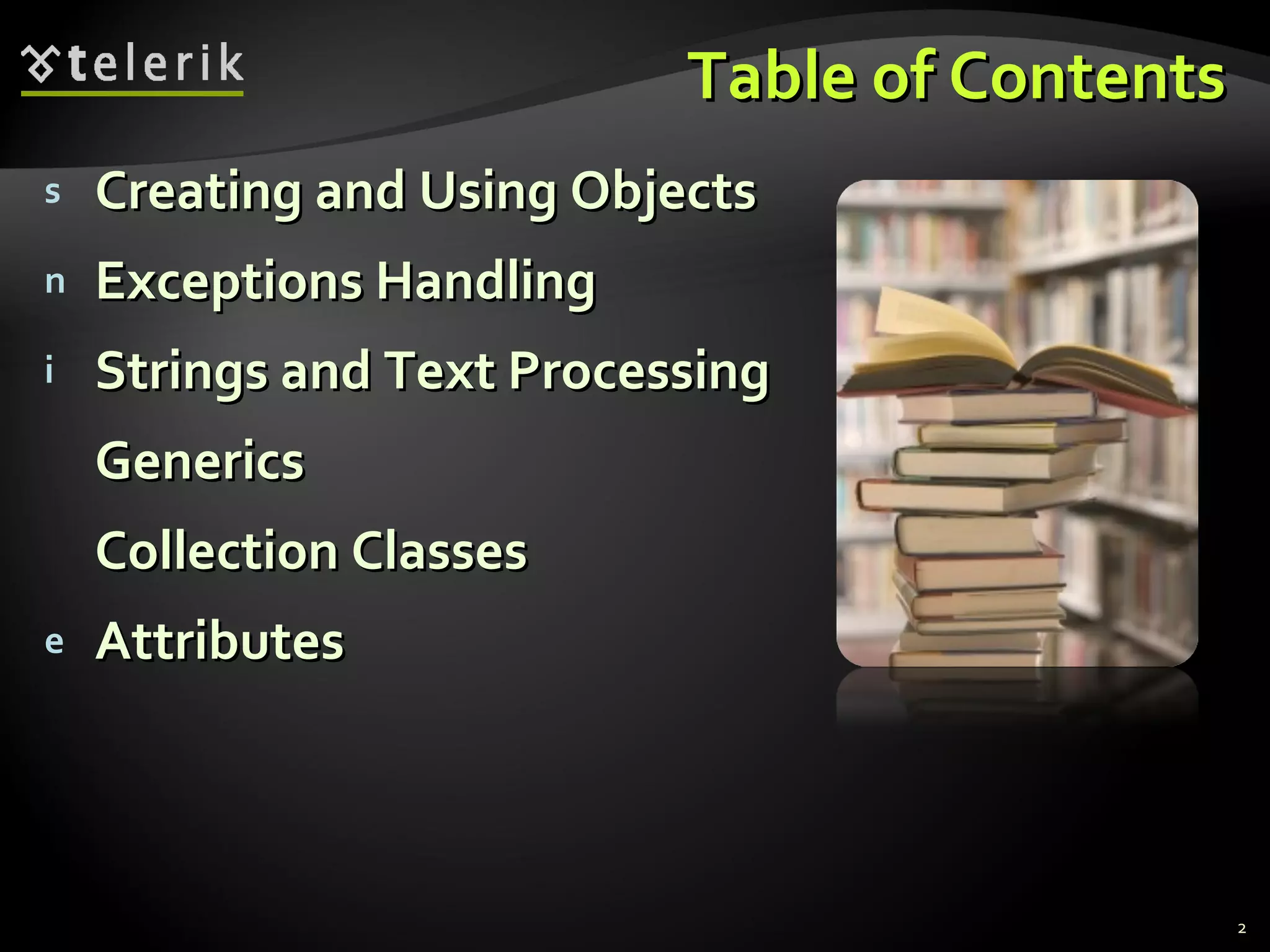
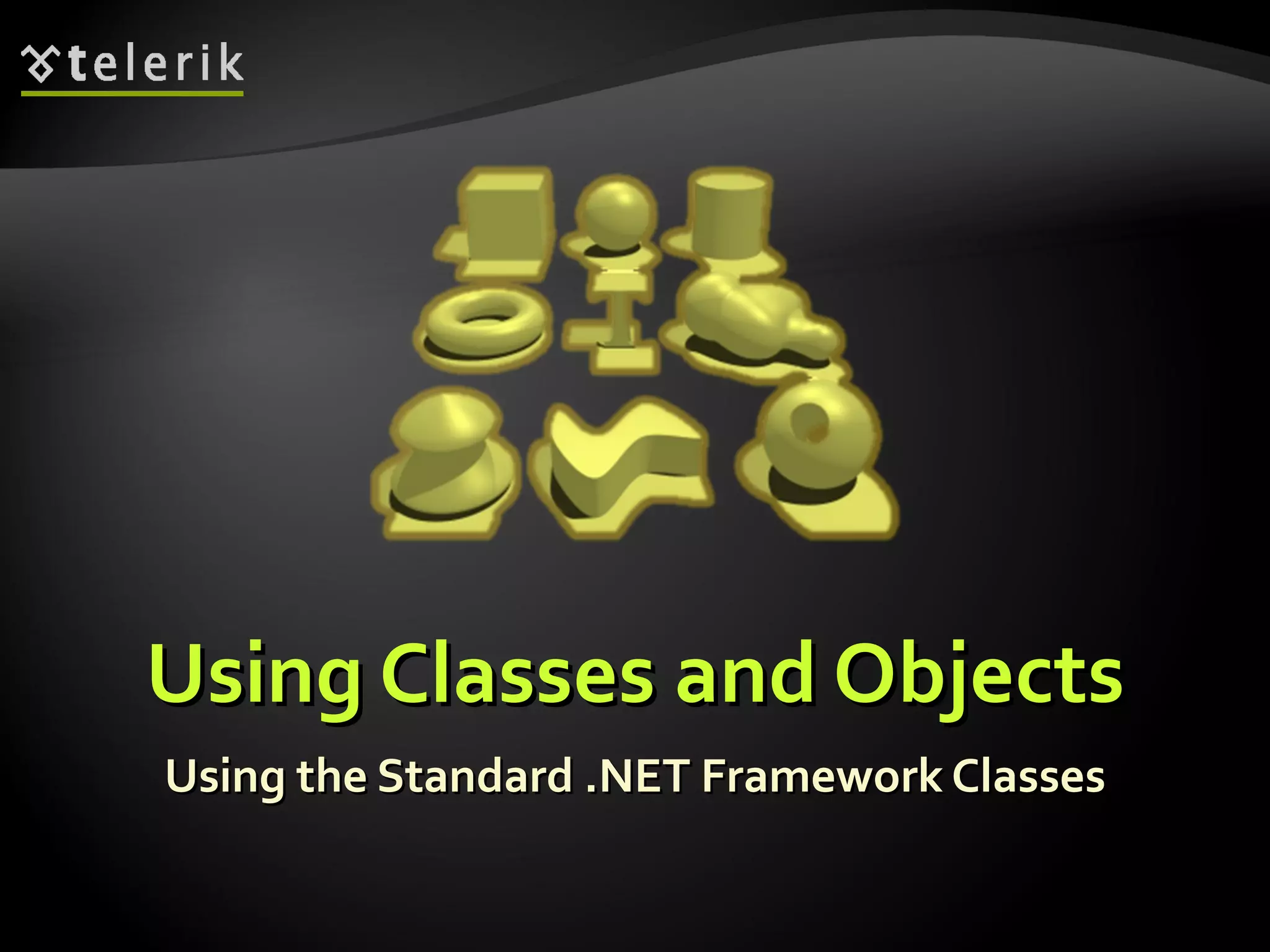
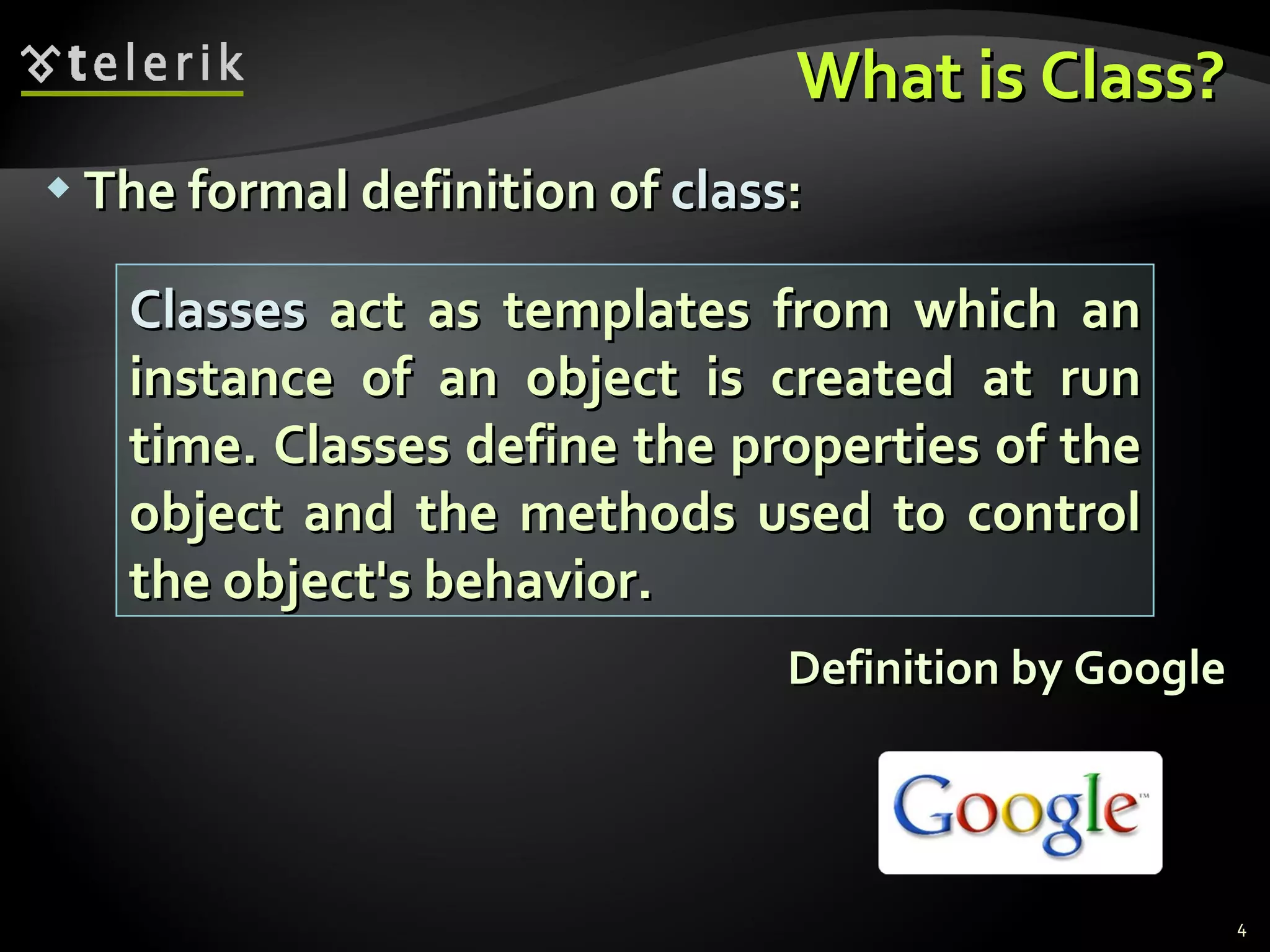
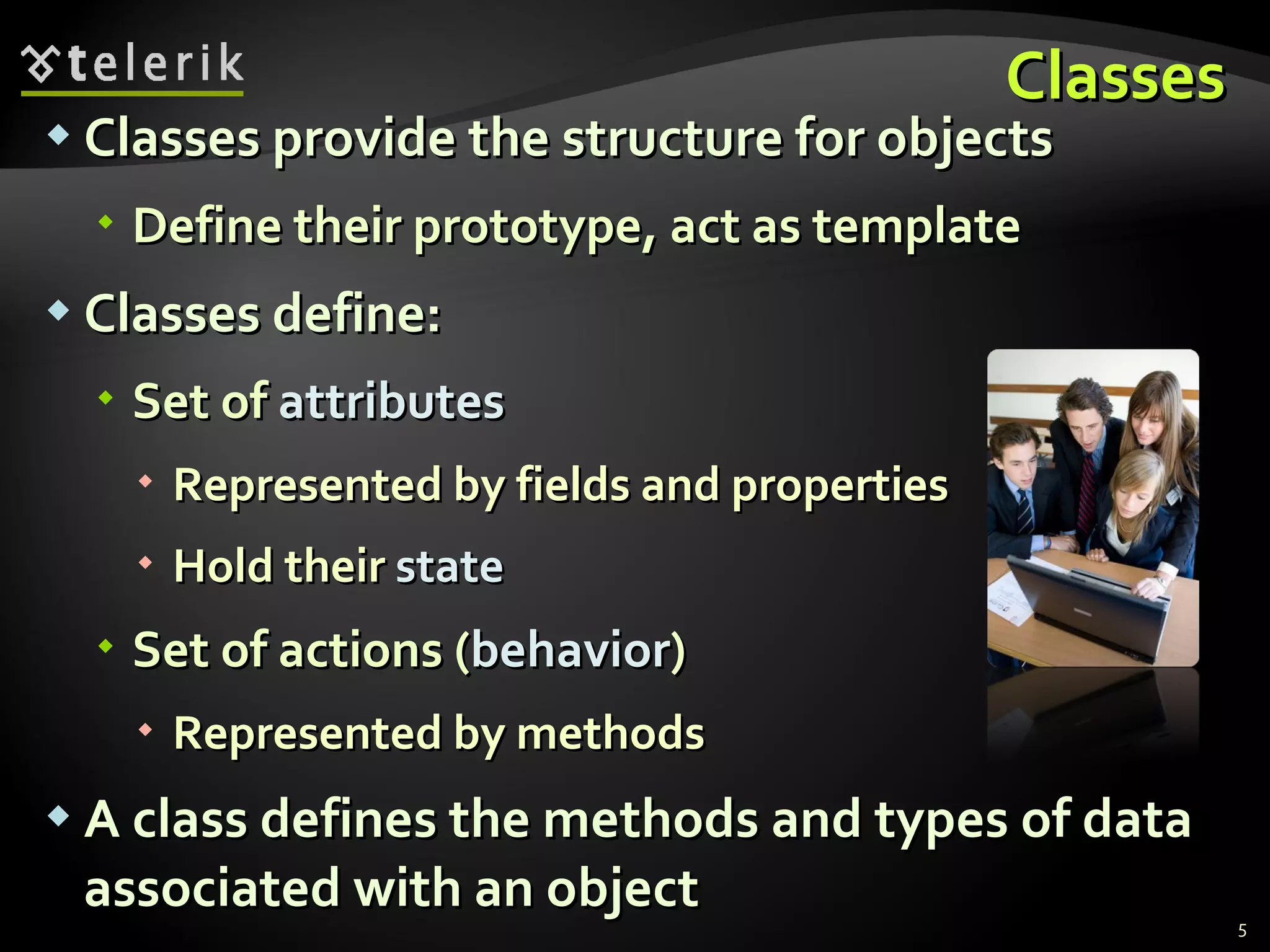
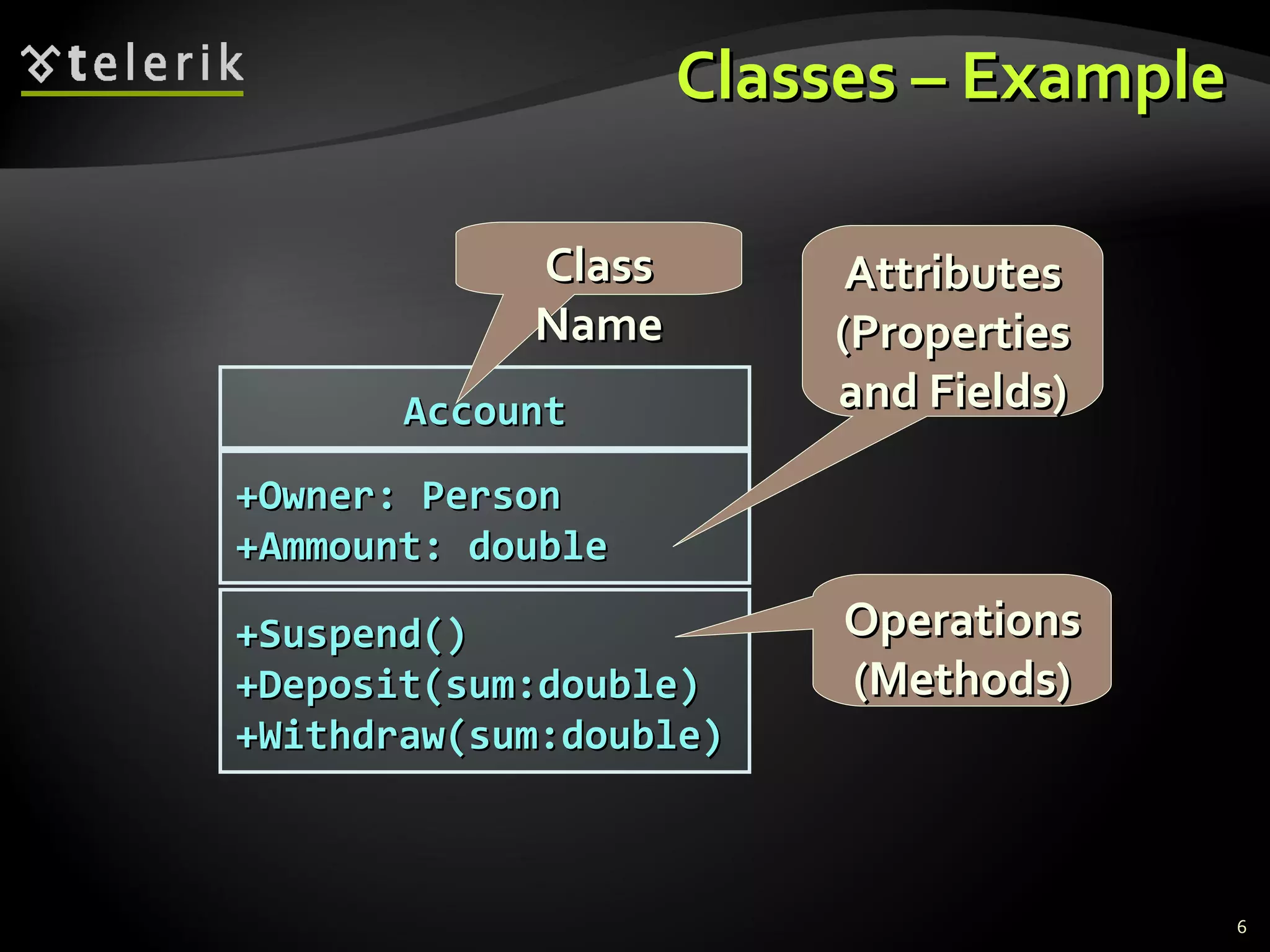
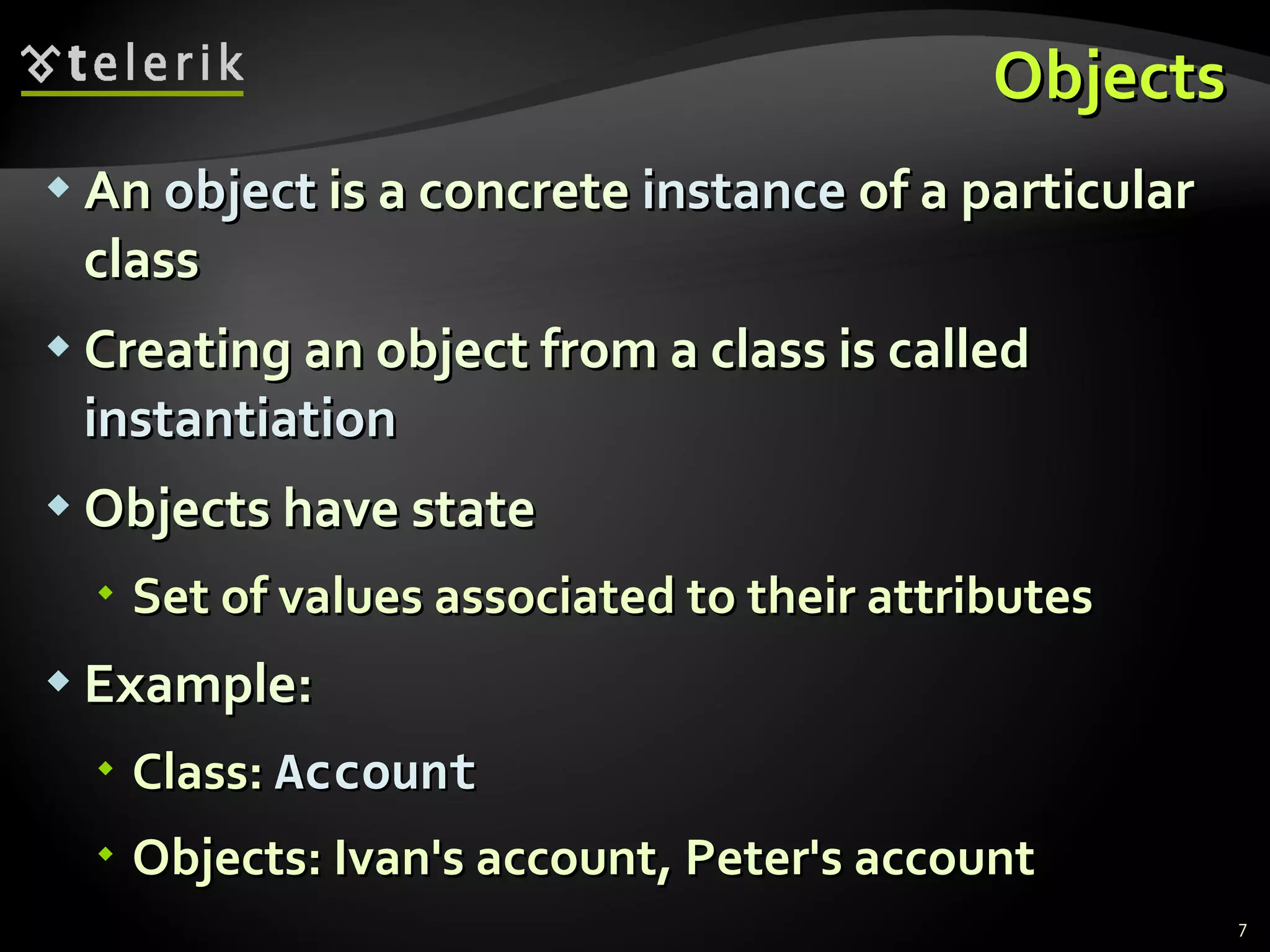
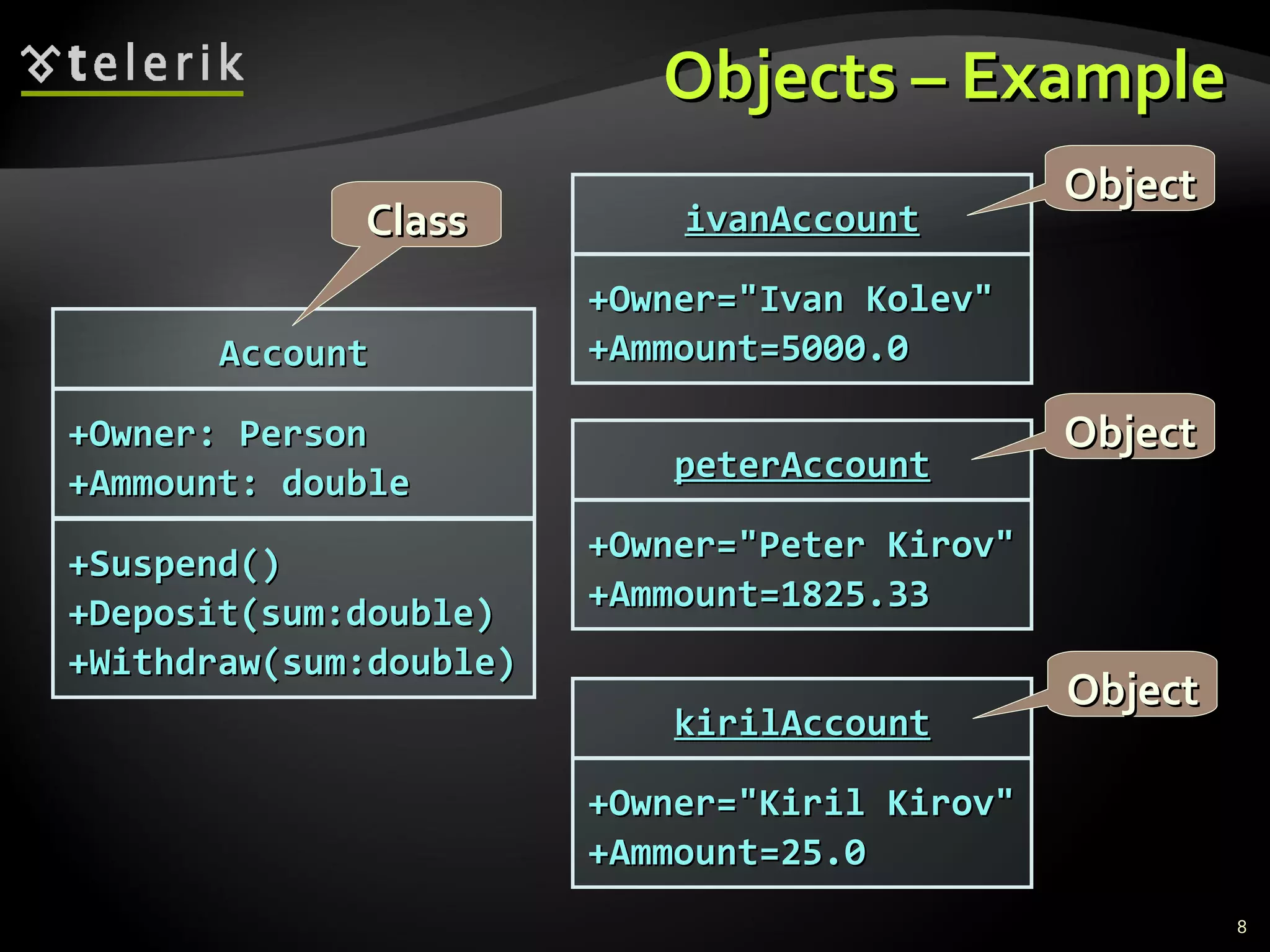
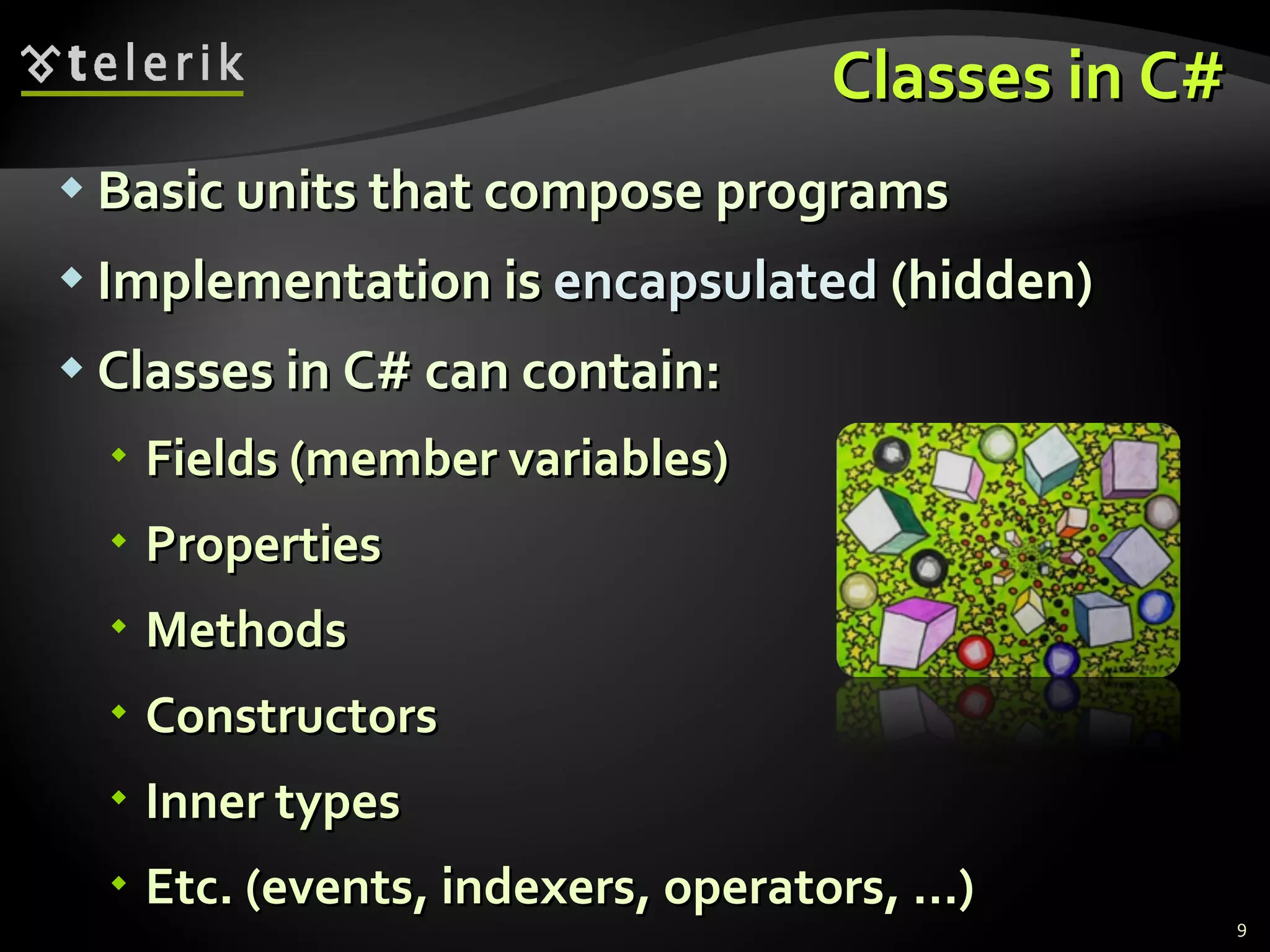
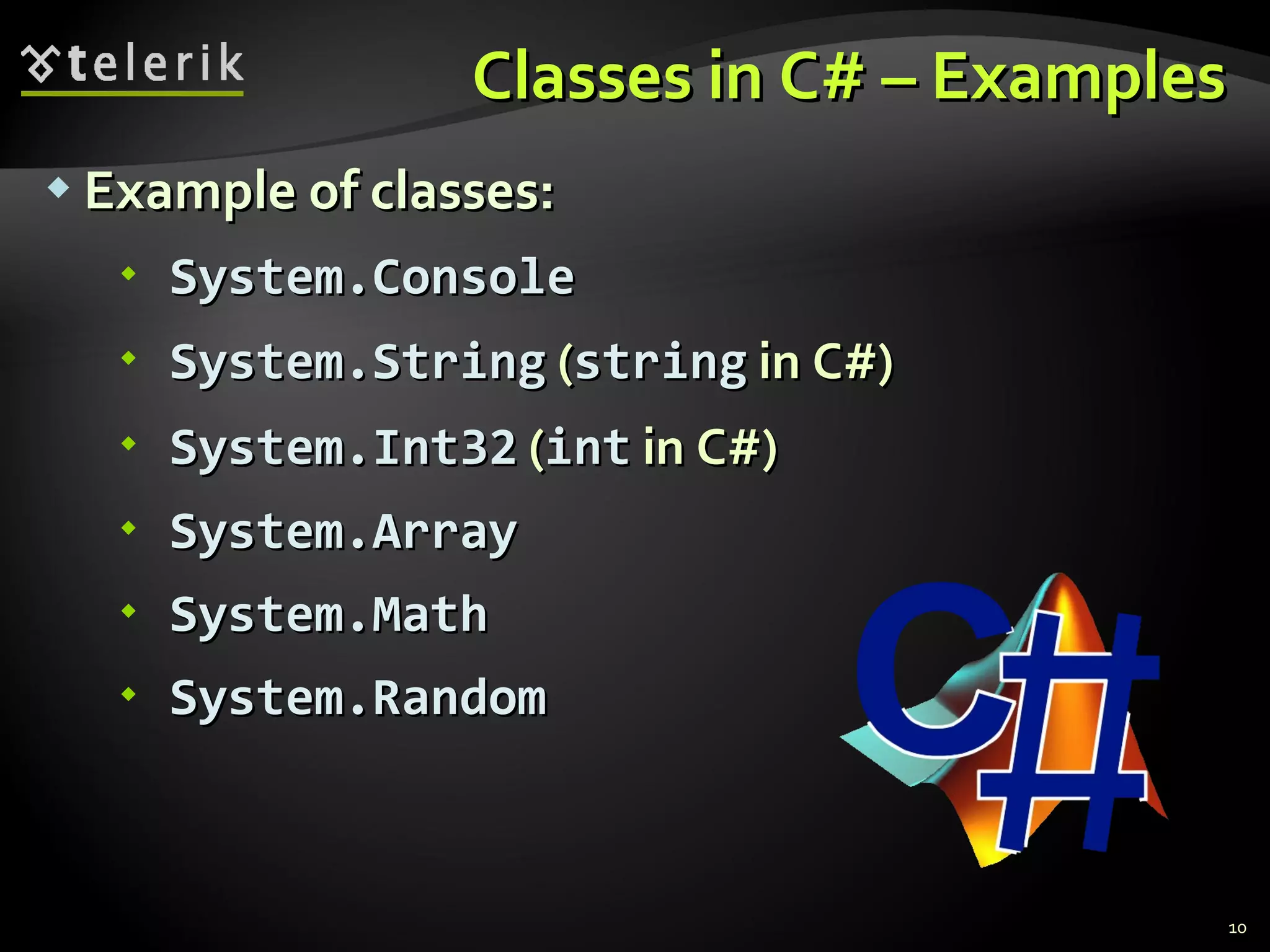
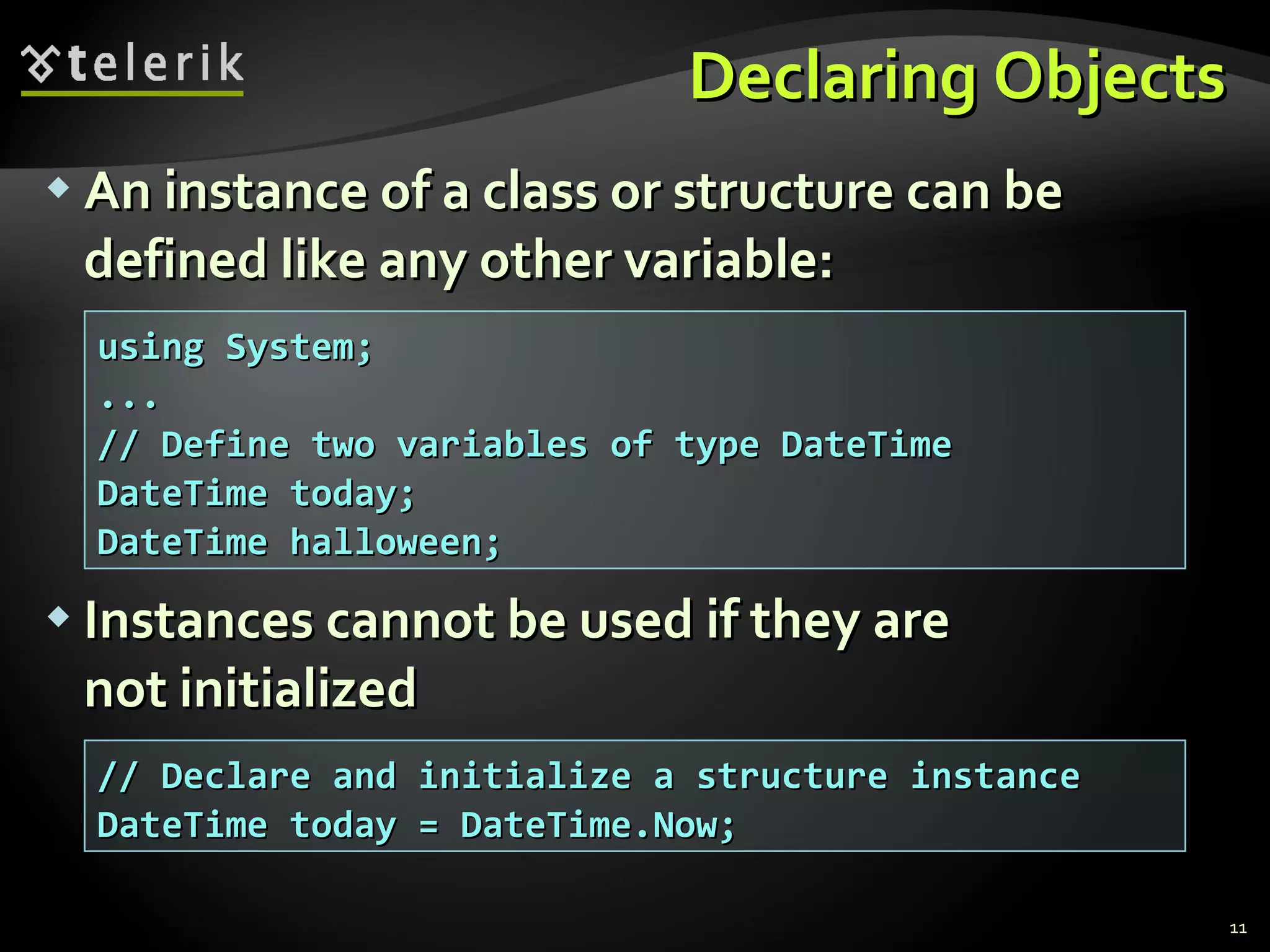
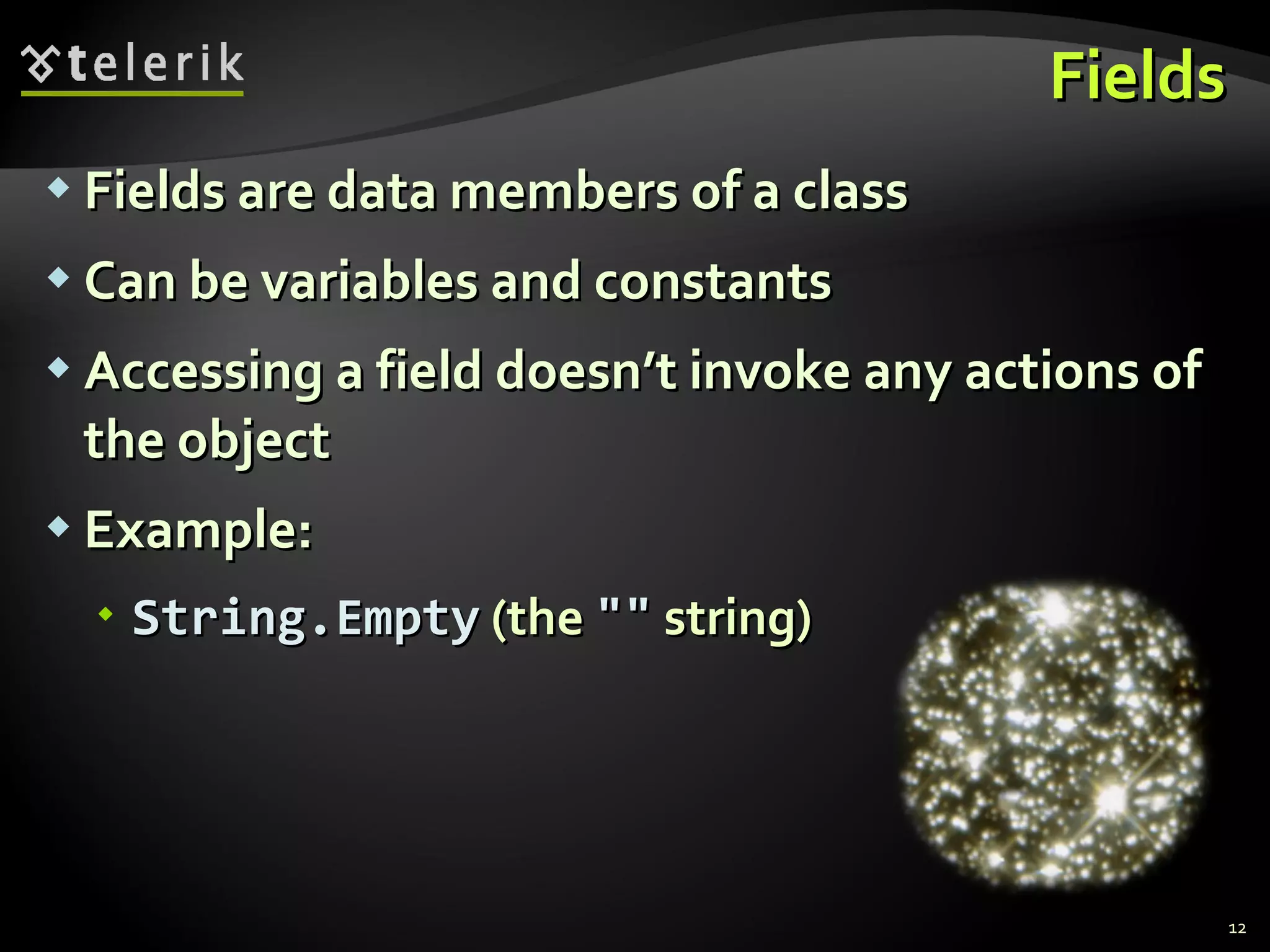
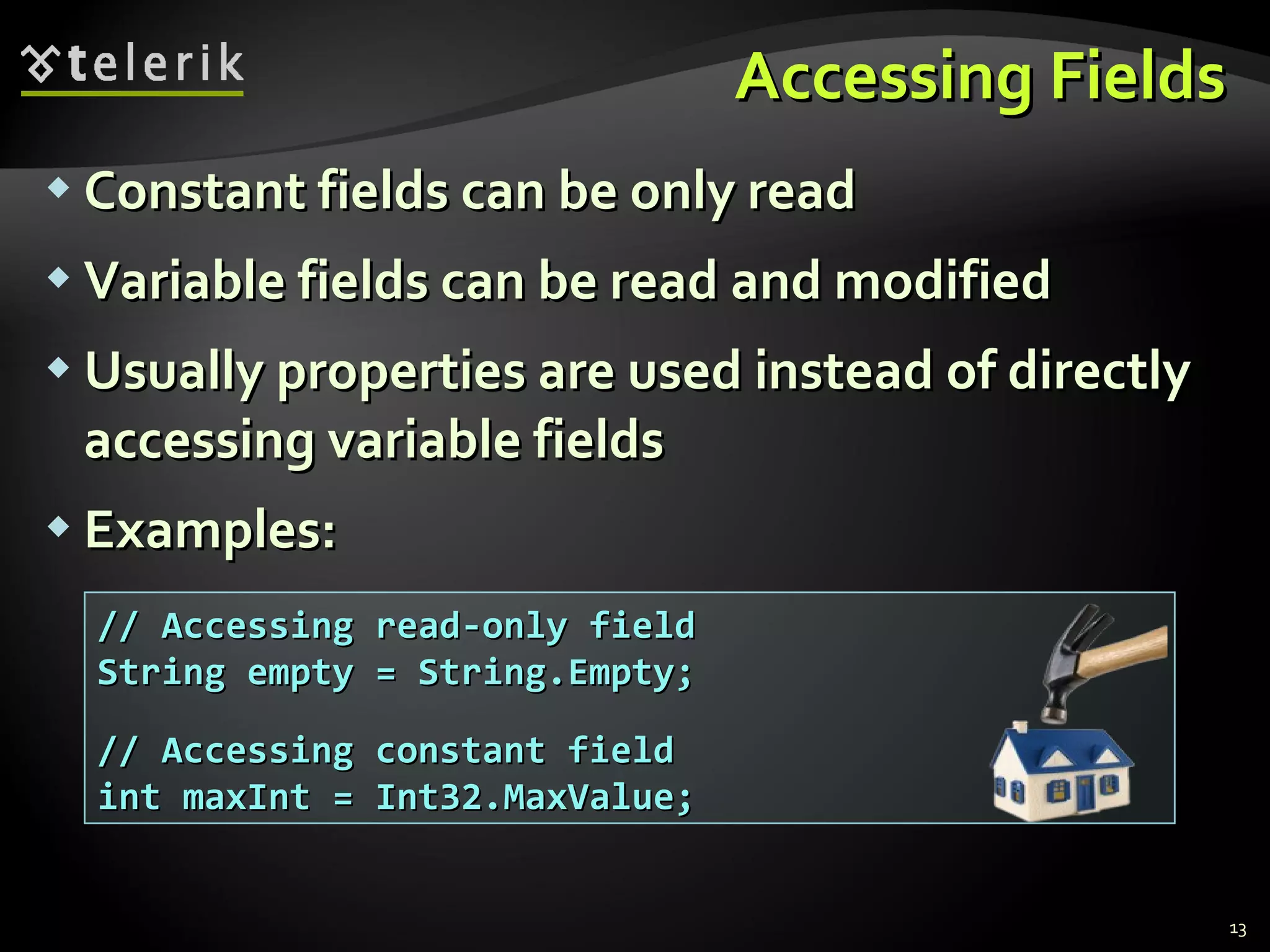
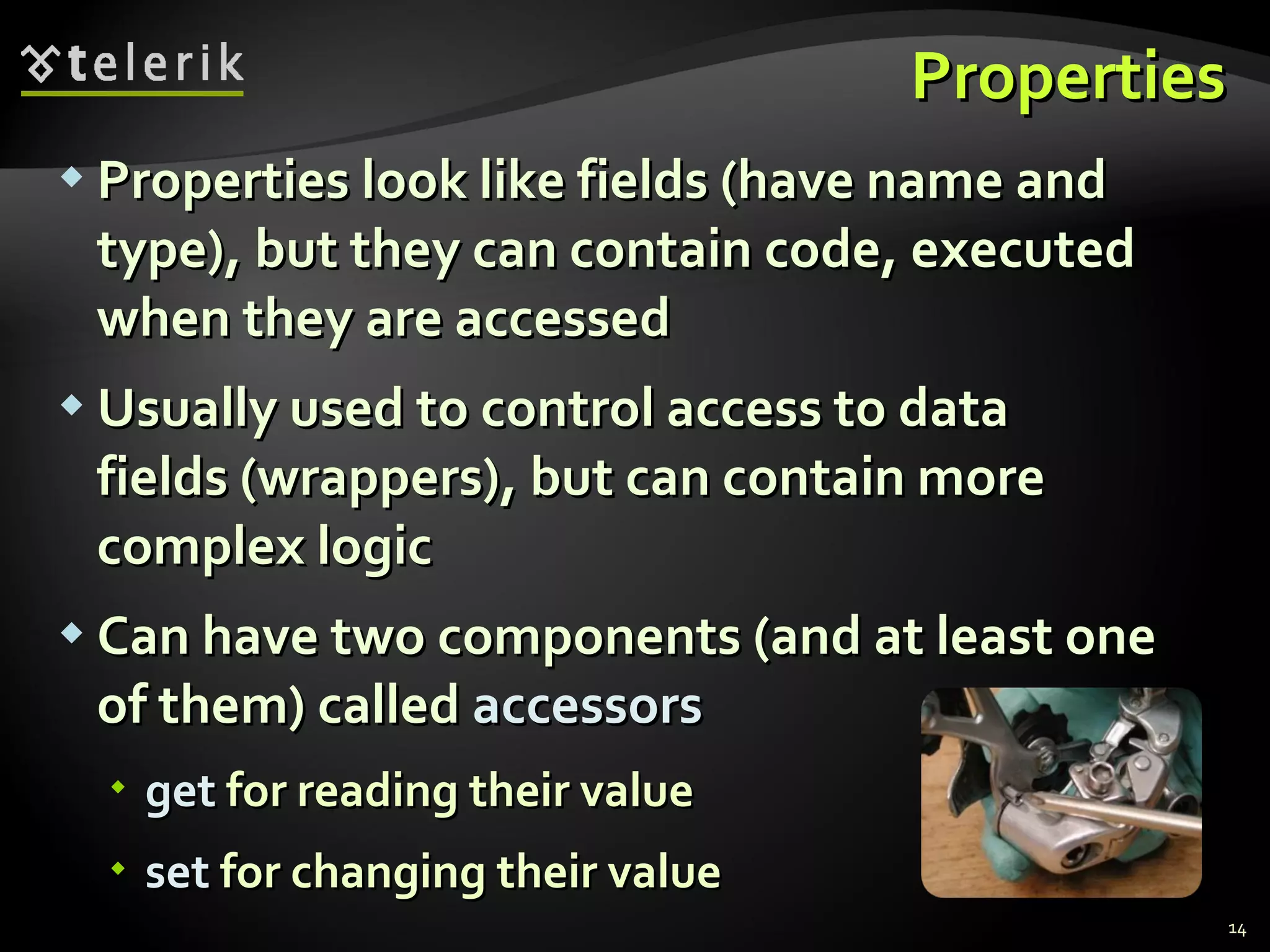
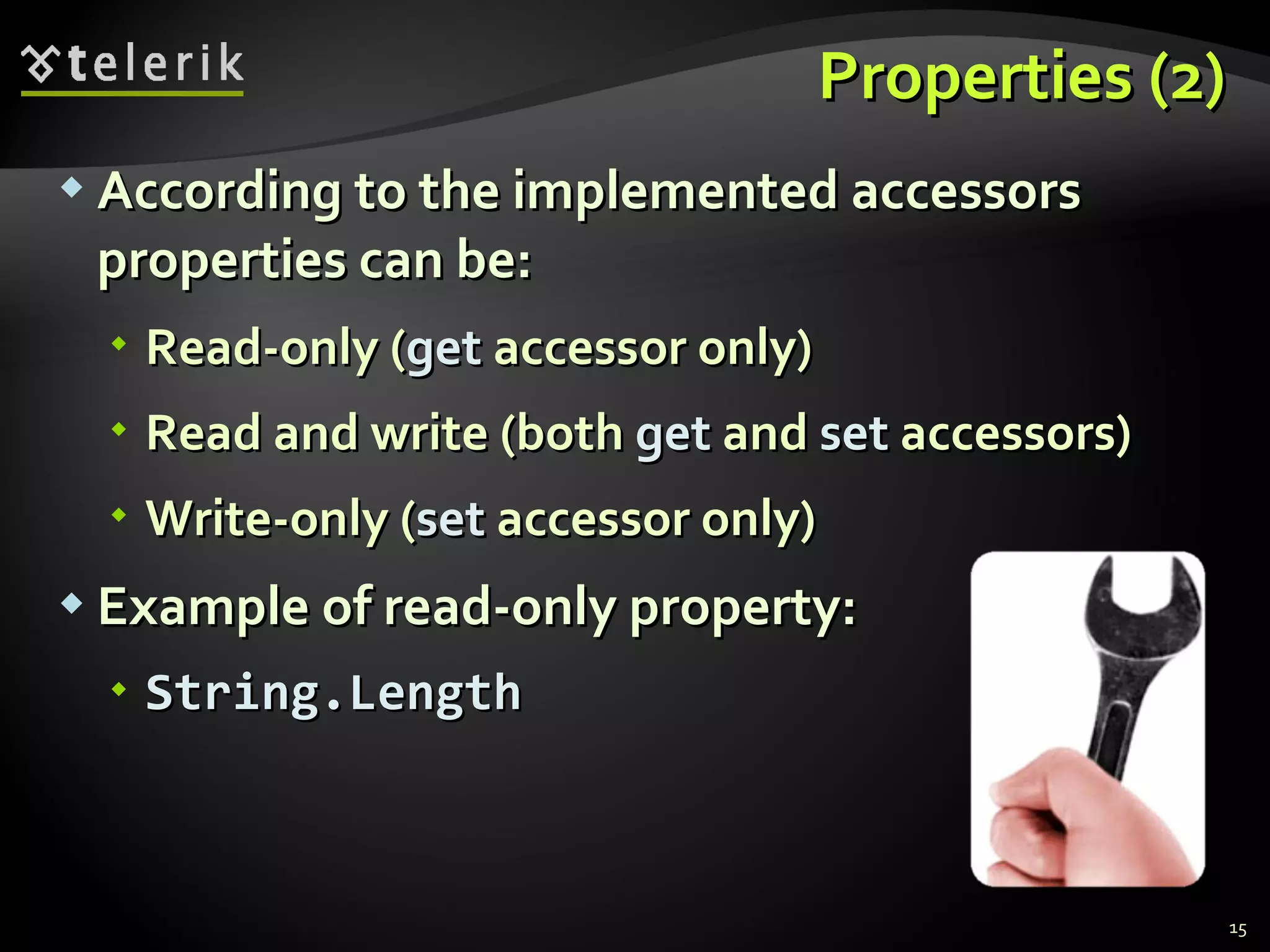
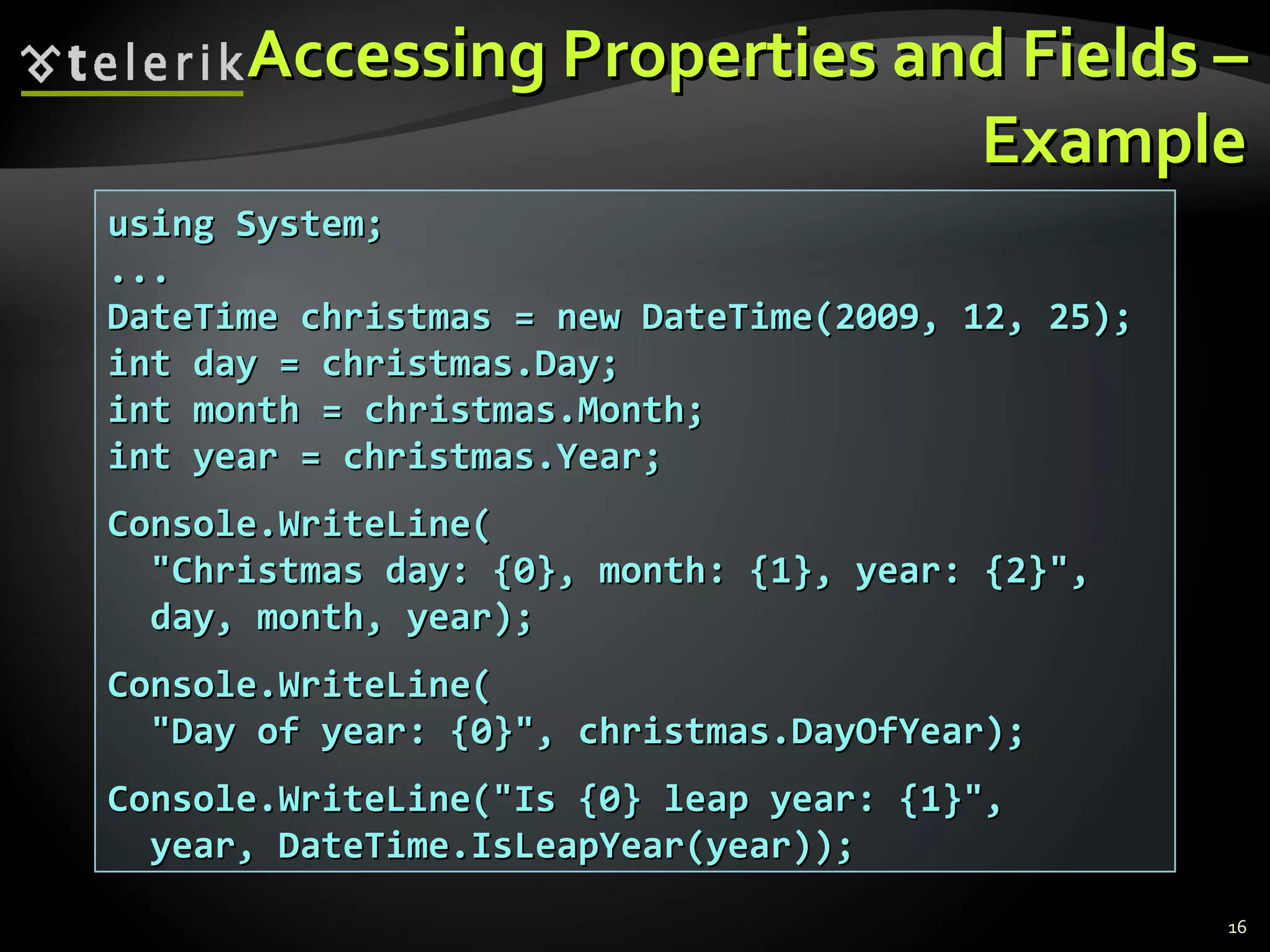
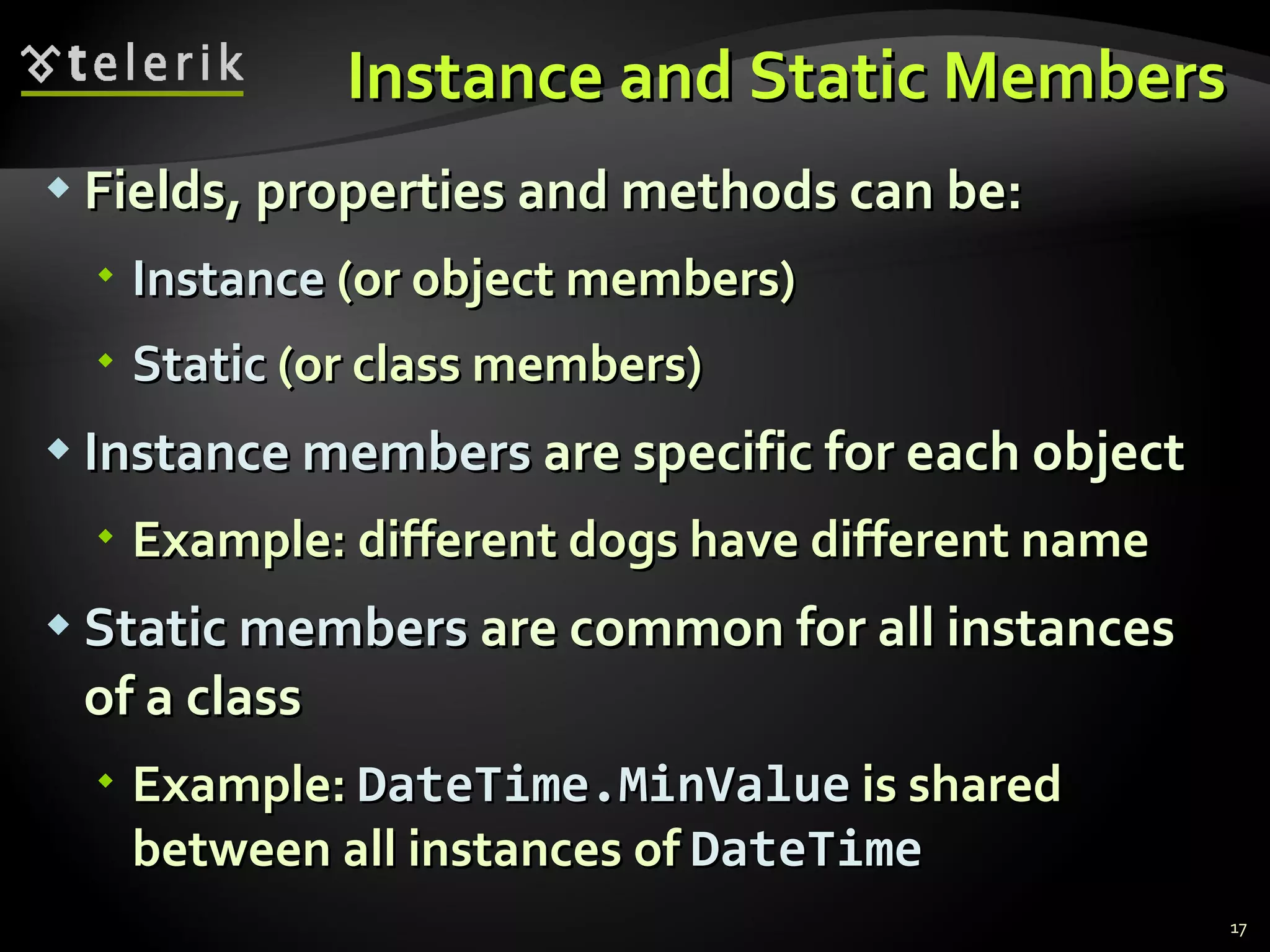
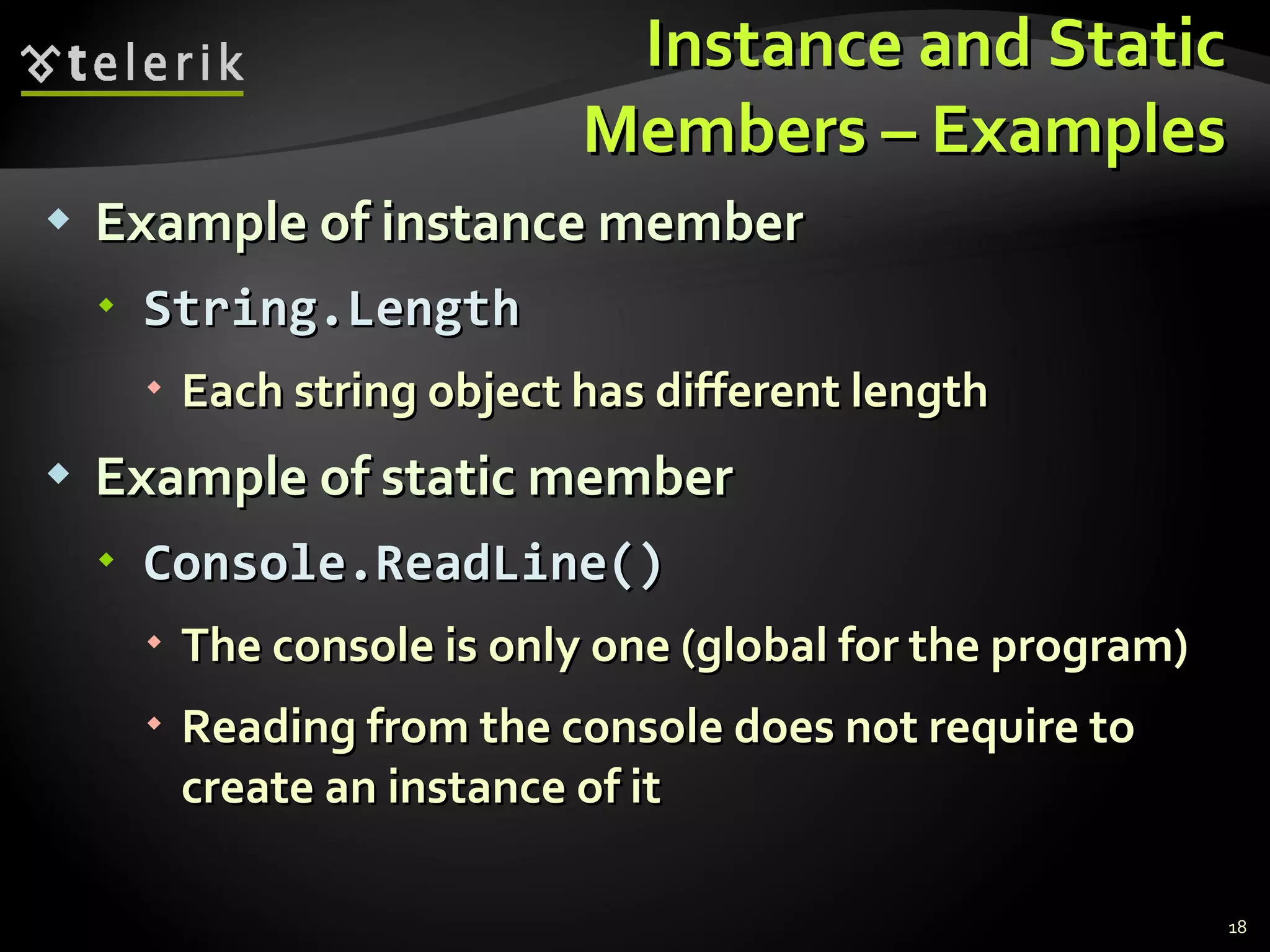
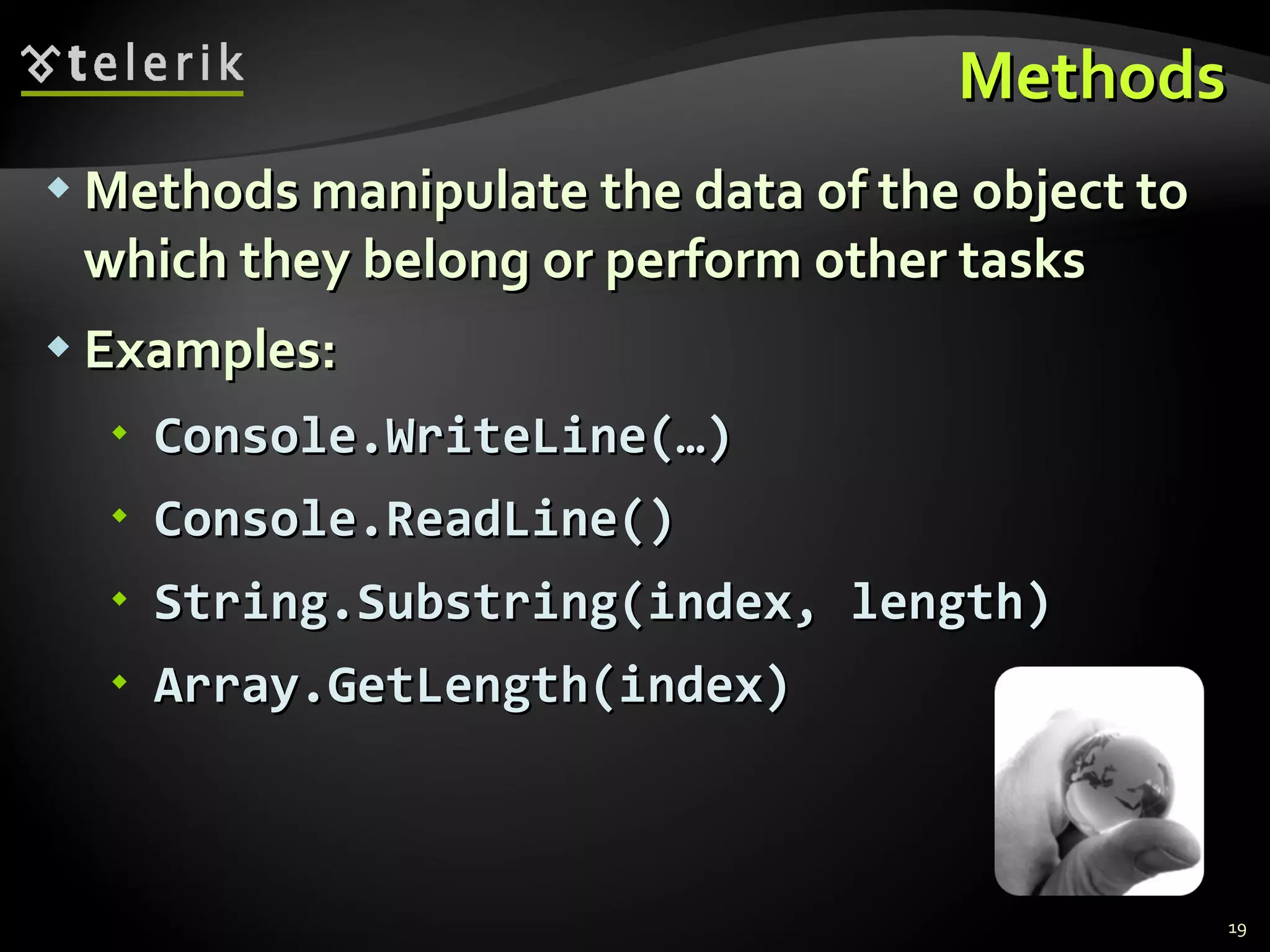
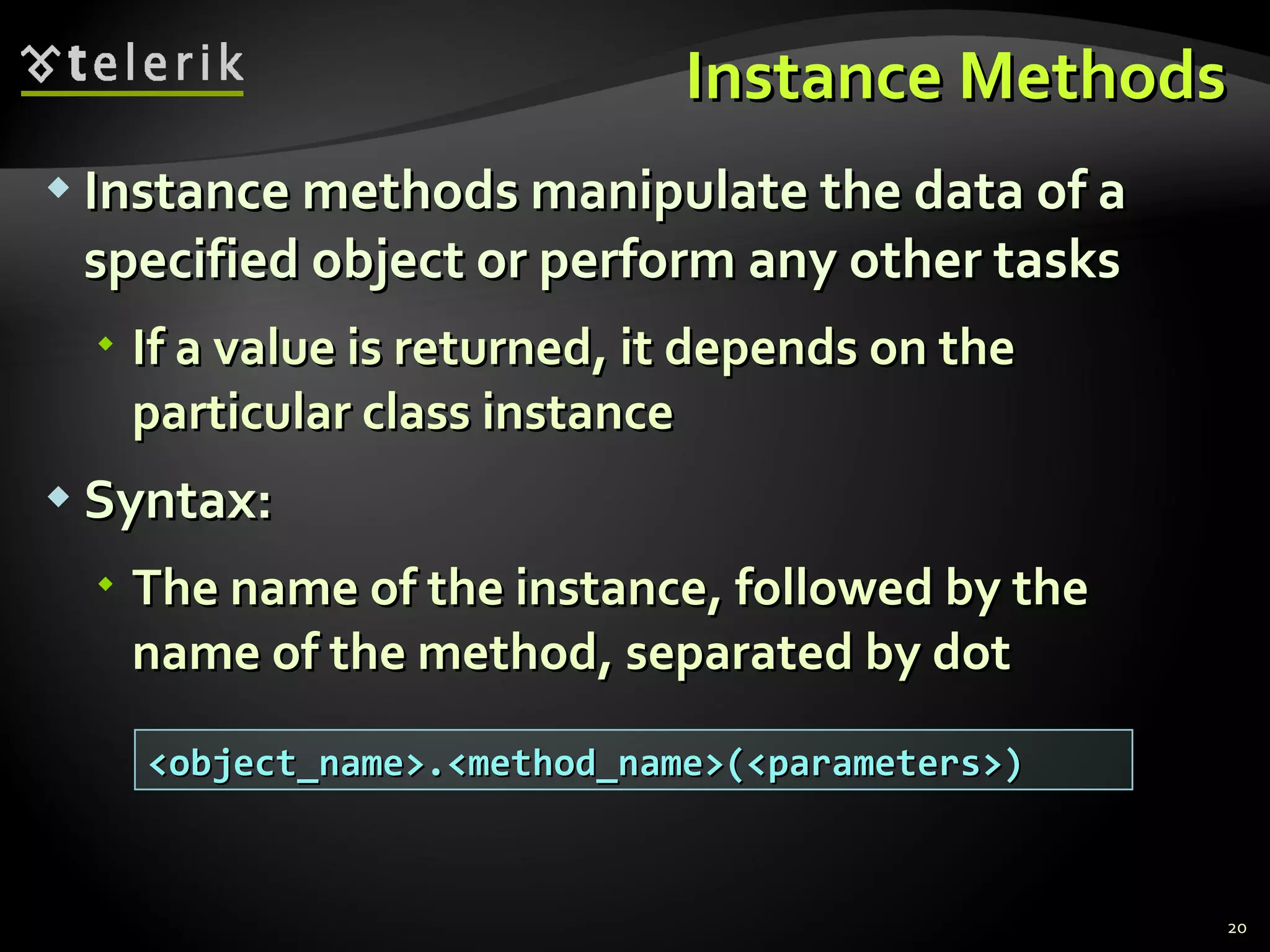
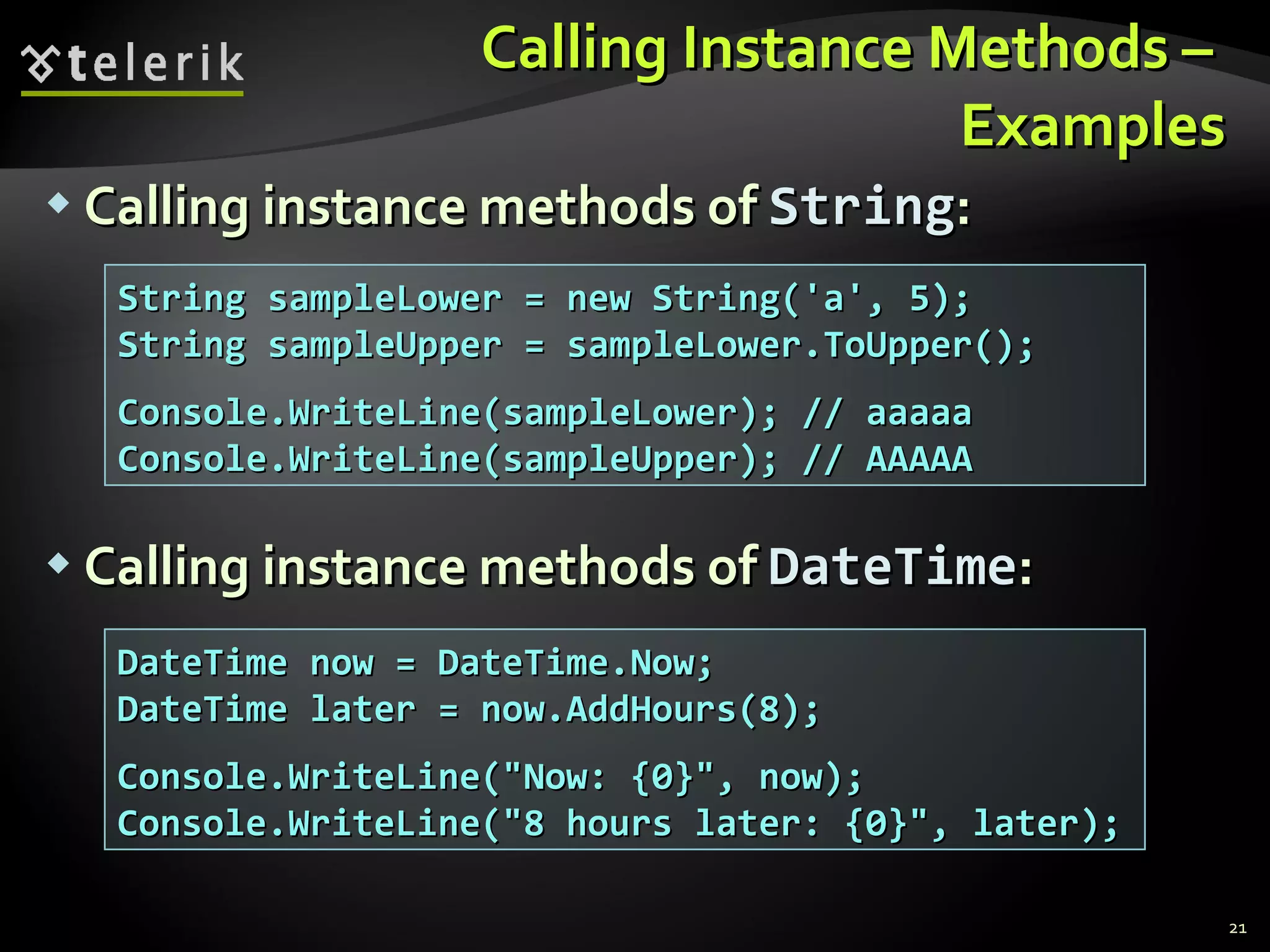
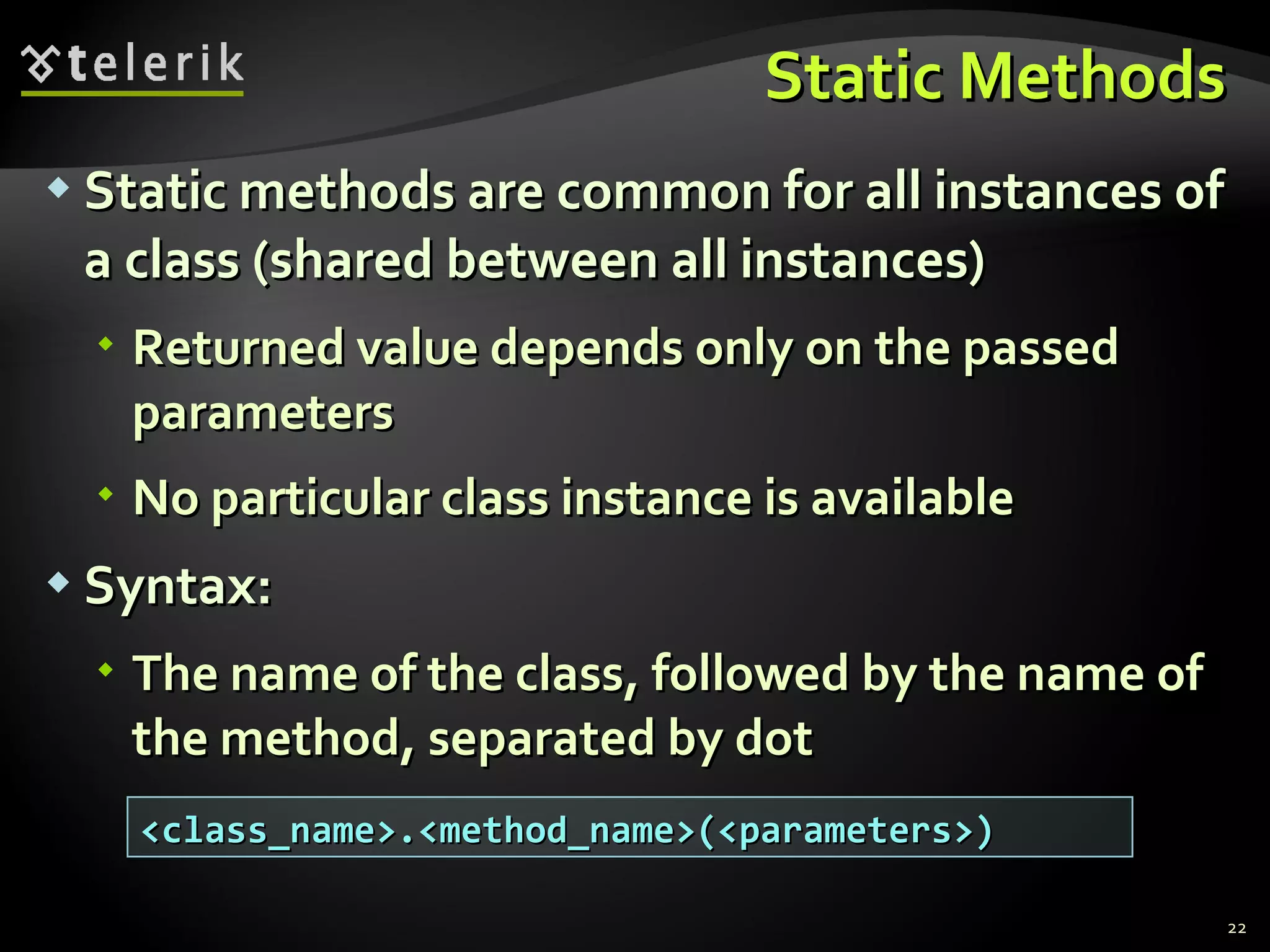
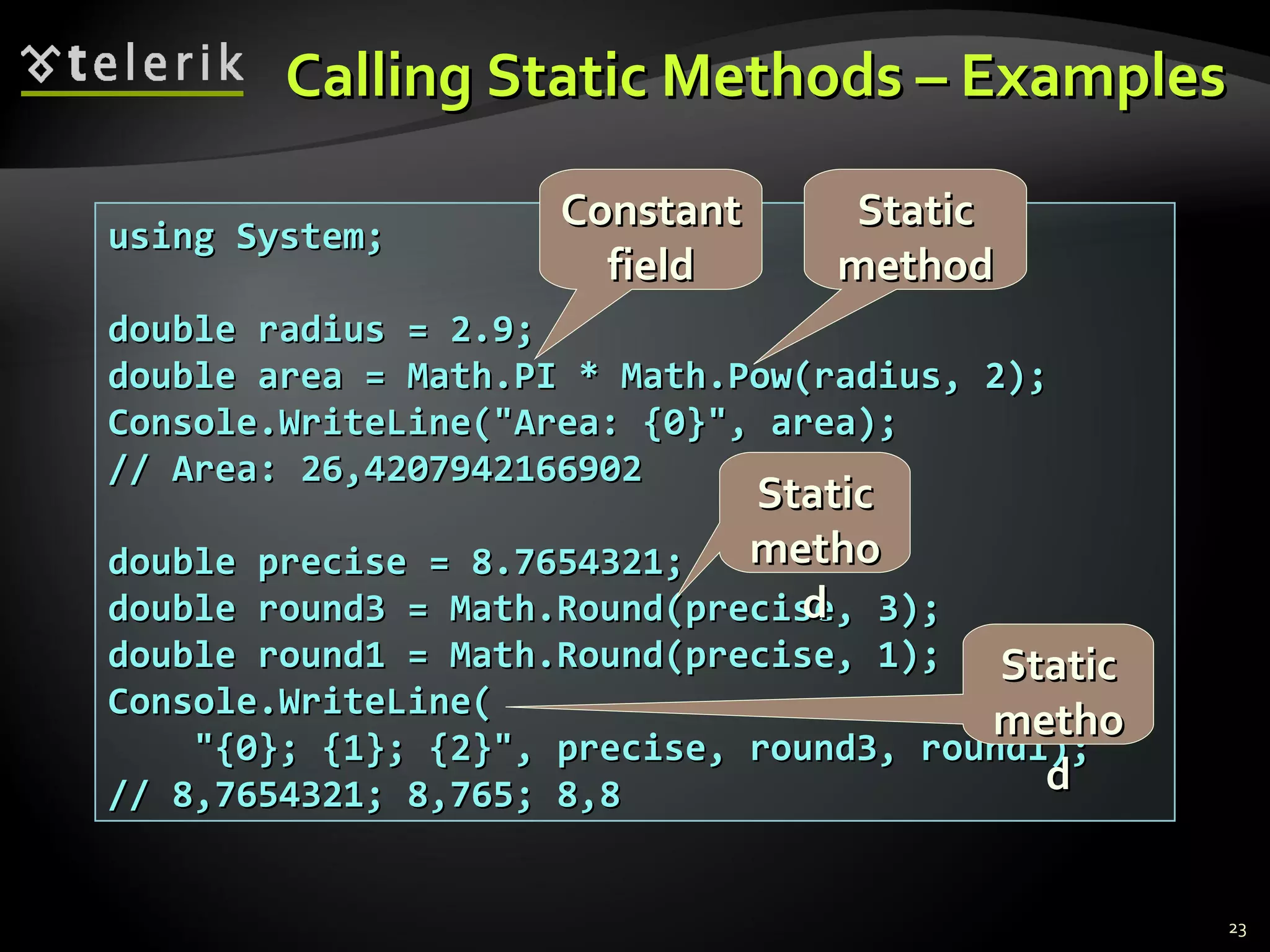
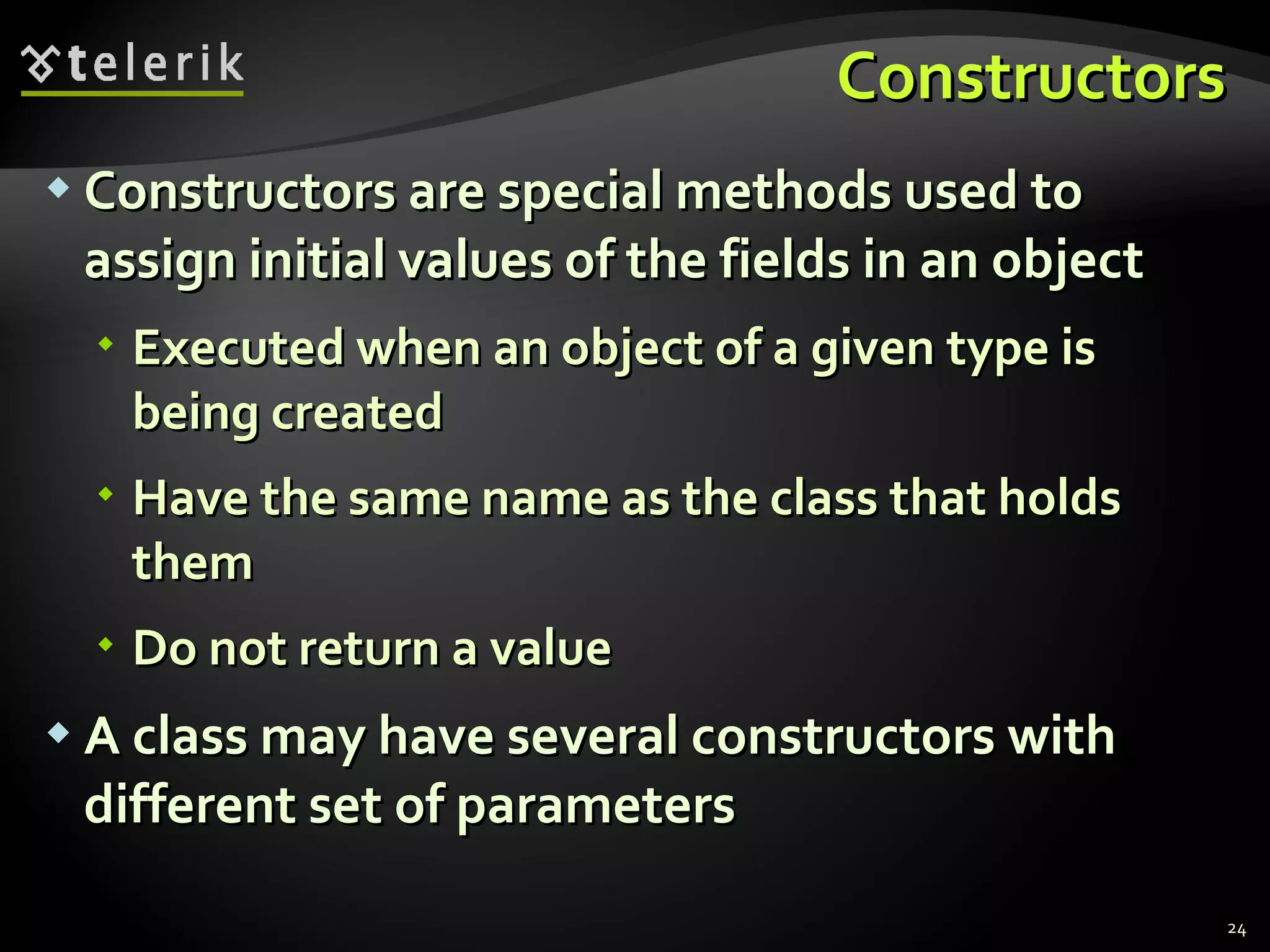
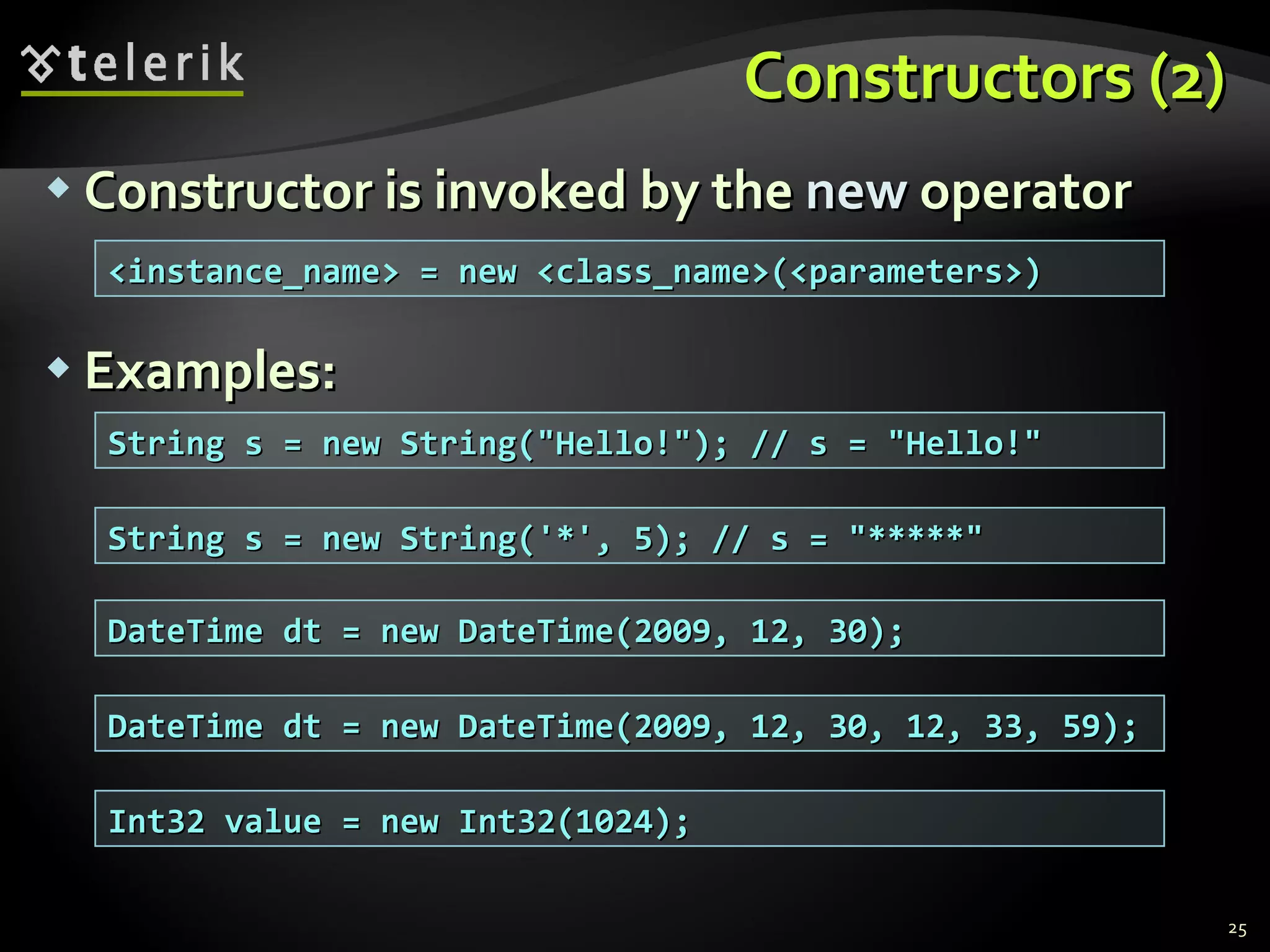
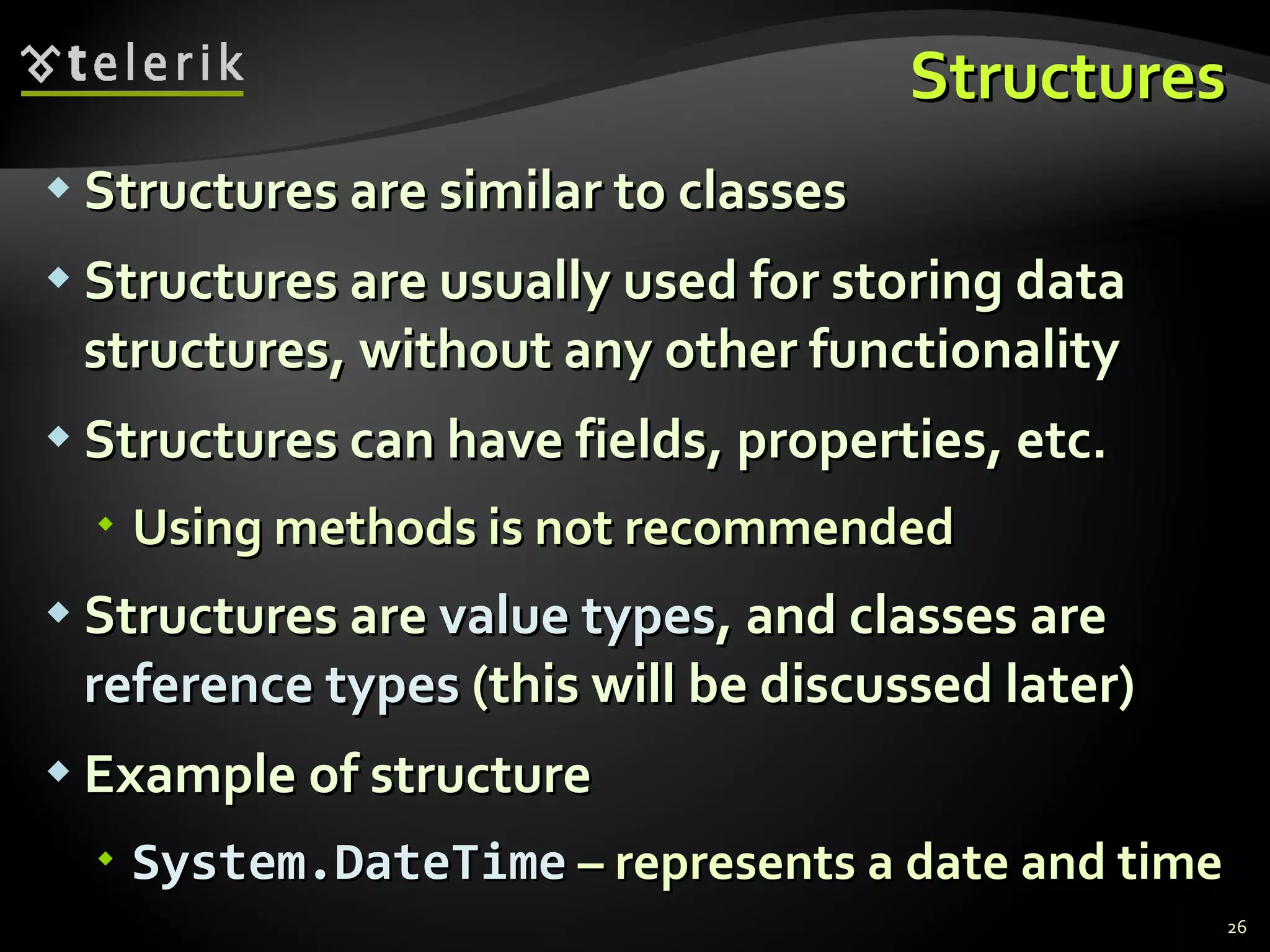
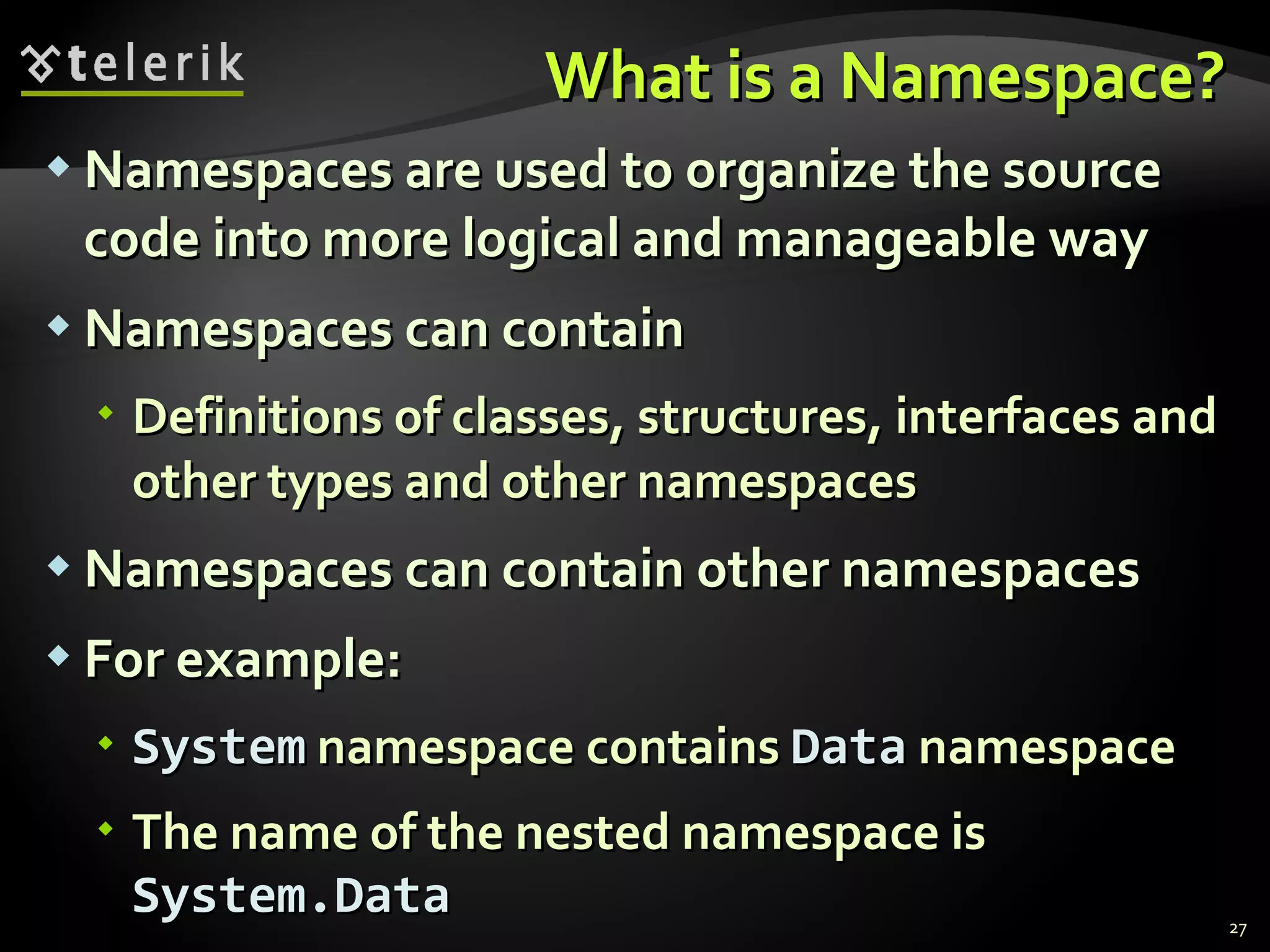
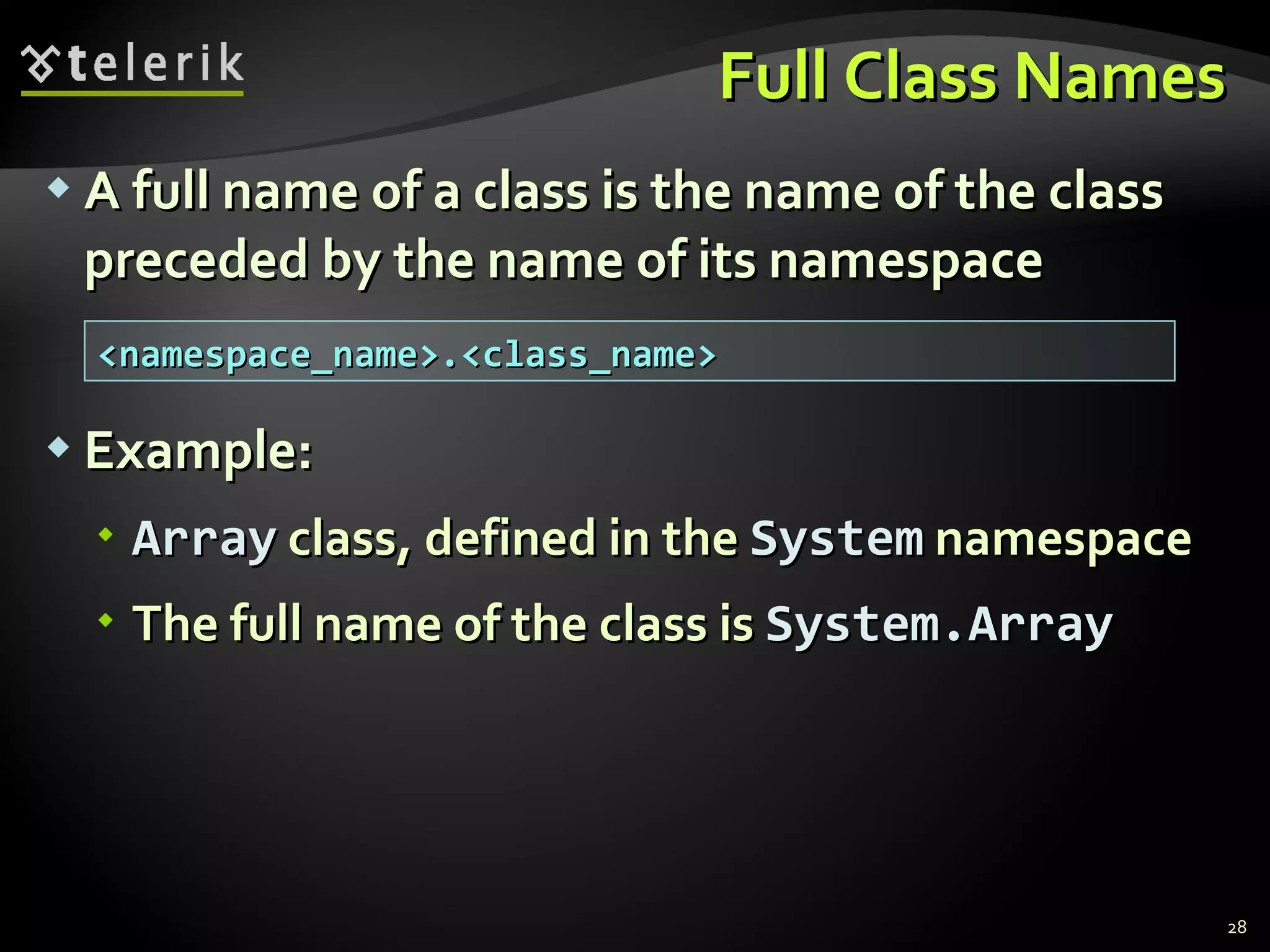
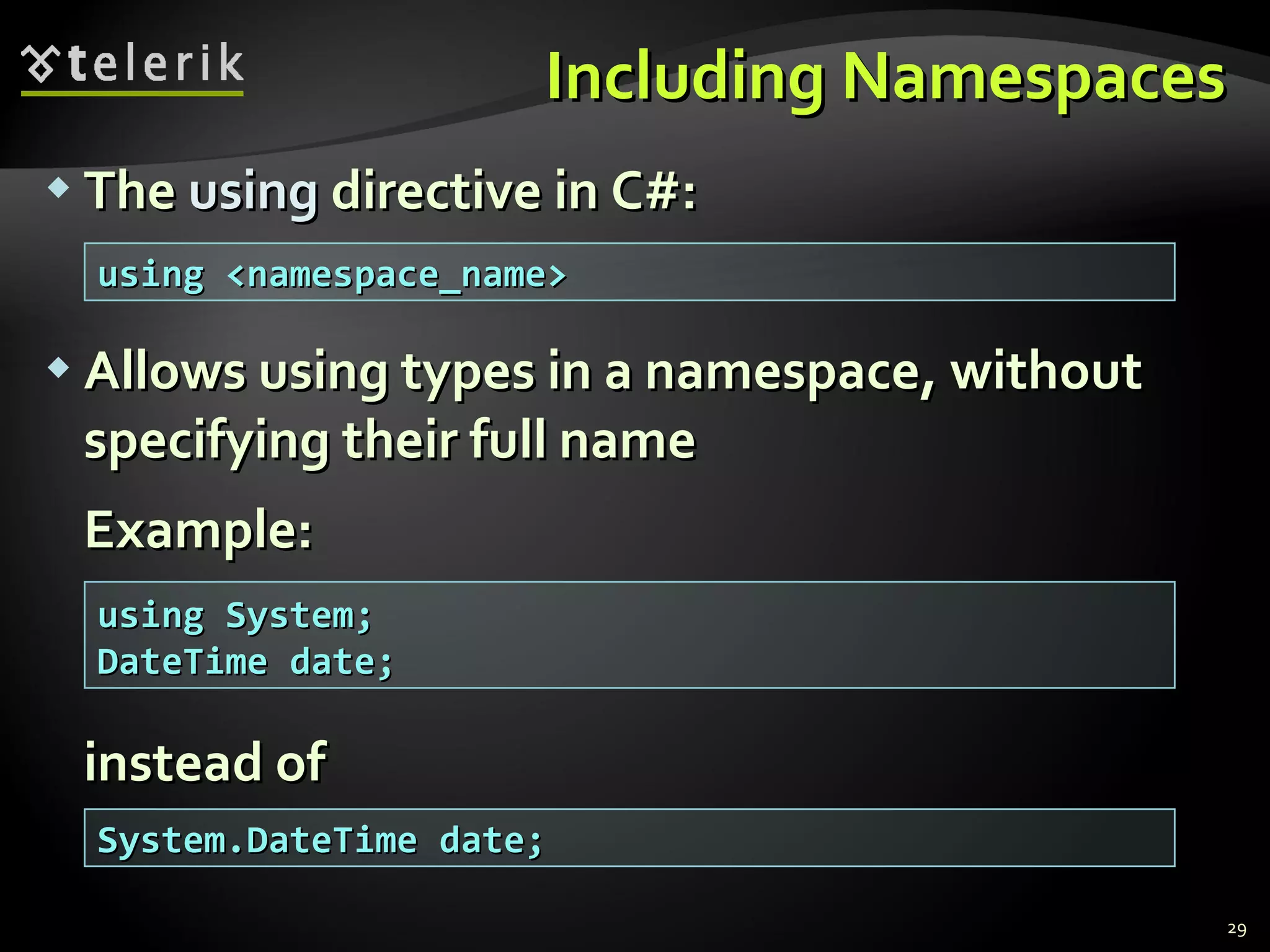
![Common Type System (CTS) CTS defines all data types supported in .NET Framework Primitive types (e.g. int , float , object ) Classes (e.g. String , Console , Array ) Structures (e.g. DateTime ) Arrays (e.g. int [] , string[,] ) Etc. Object-oriented by design](https://image.slidesharecdn.com/4-csharp-language-overview-part-ii-120201085223-phpapp02/75/C-Language-Overview-Part-II-30-2048.jpg)
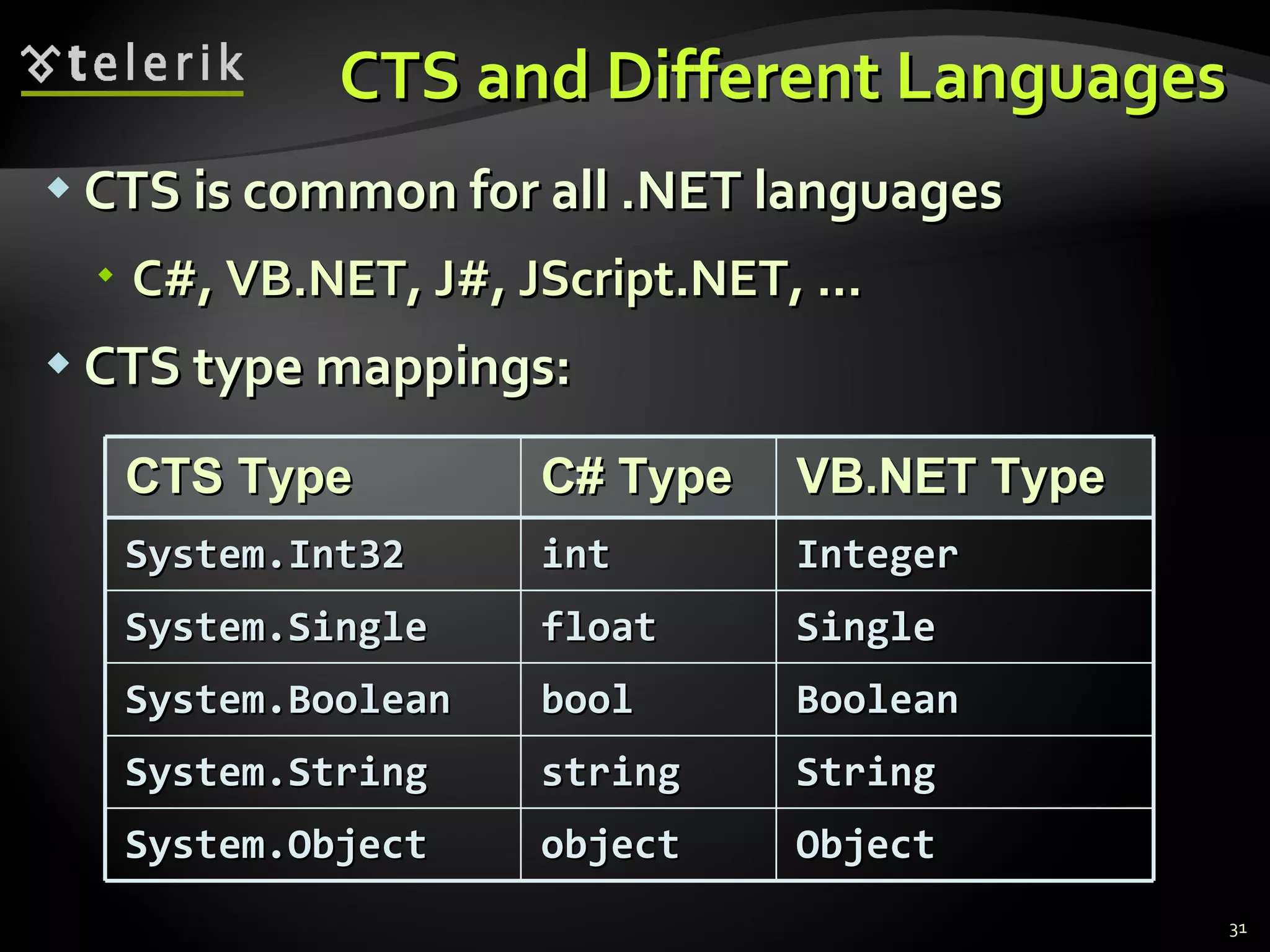
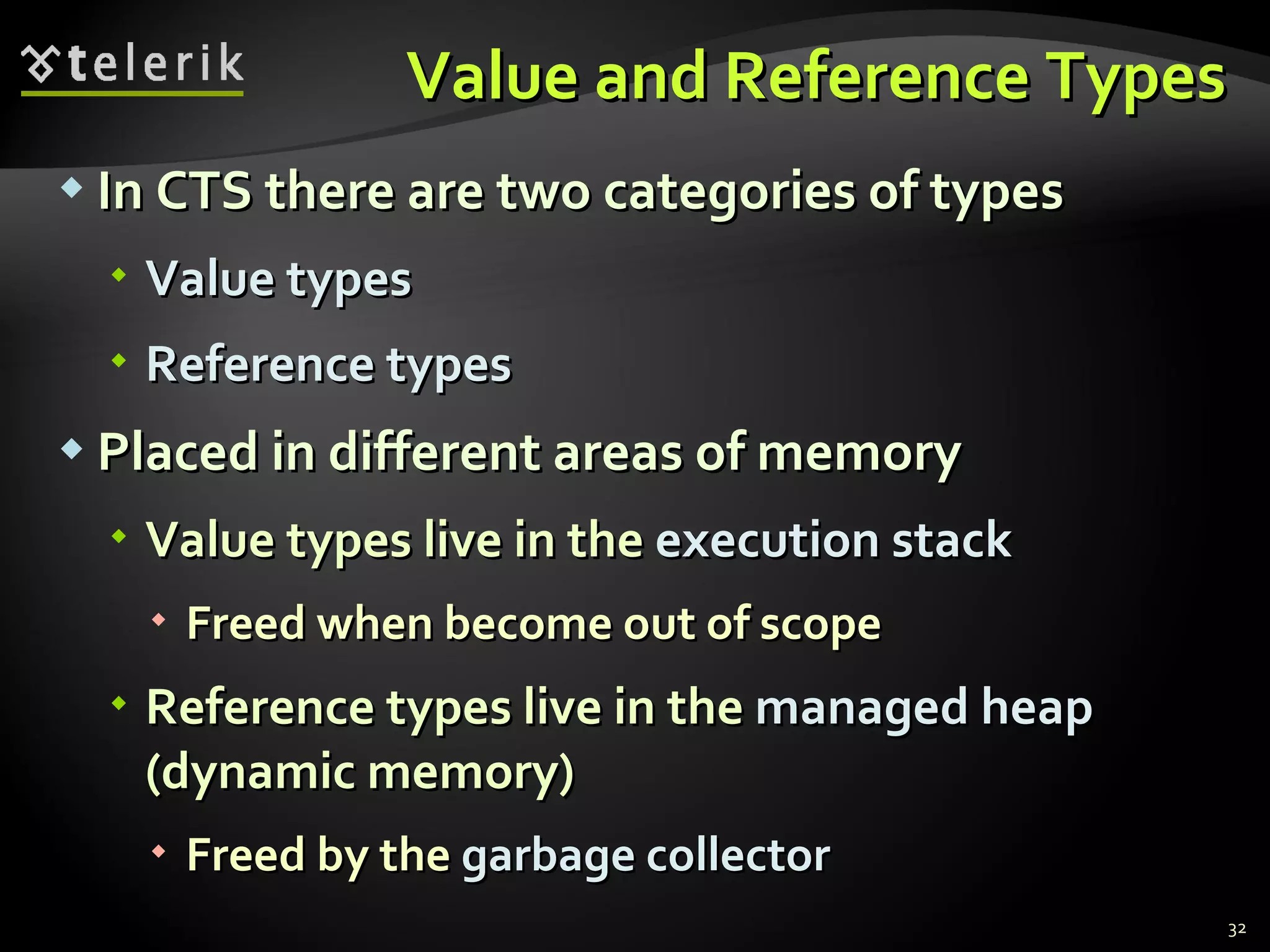
![Value and Reference Types – Examples Value types Most of the primitive types Structures Examples: int , float , bool , DateTime Reference types Classes and interfaces Strings Arrays Examples: string , Random , object , int[]](https://image.slidesharecdn.com/4-csharp-language-overview-part-ii-120201085223-phpapp02/75/C-Language-Overview-Part-II-33-2048.jpg)

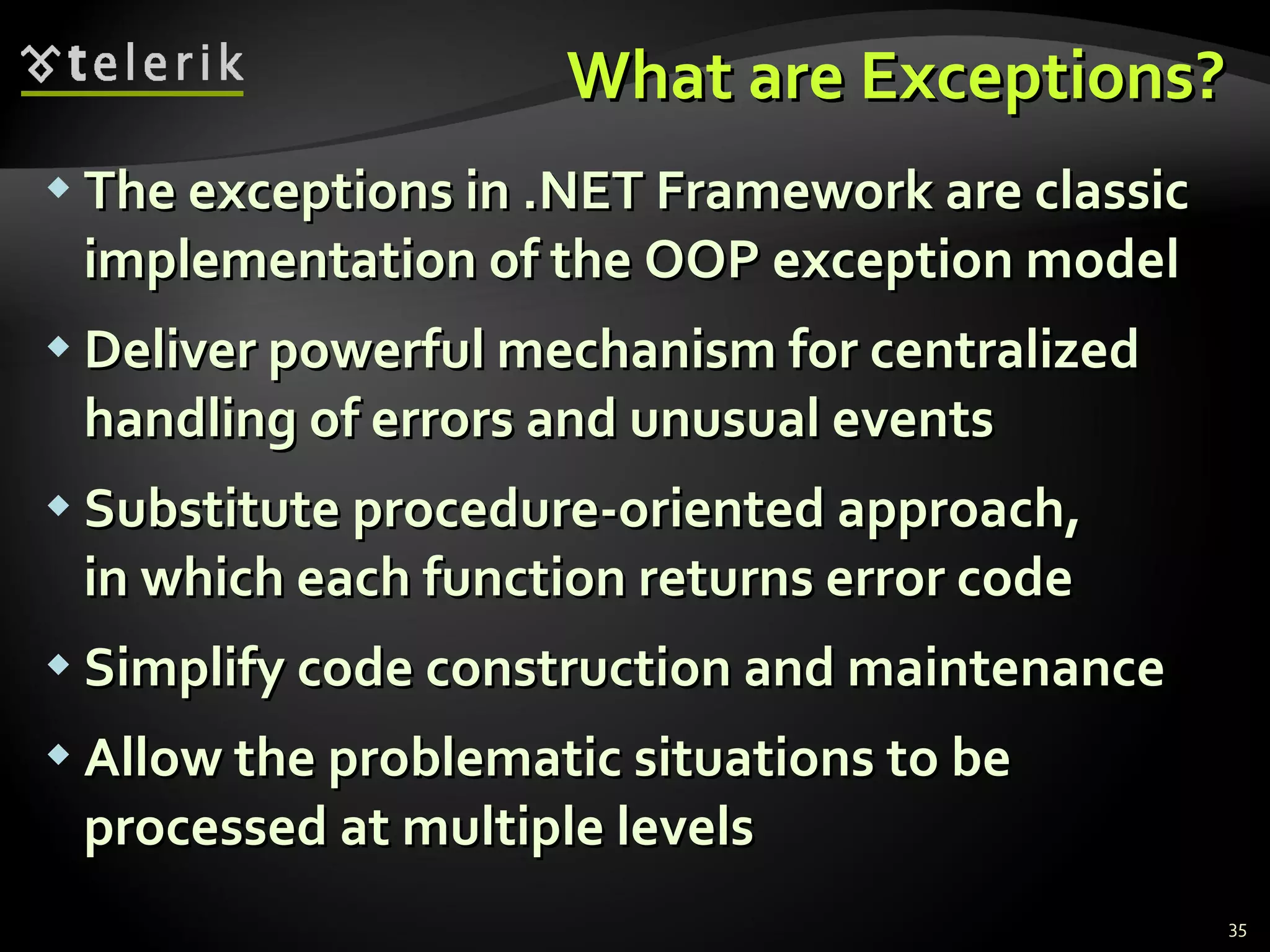
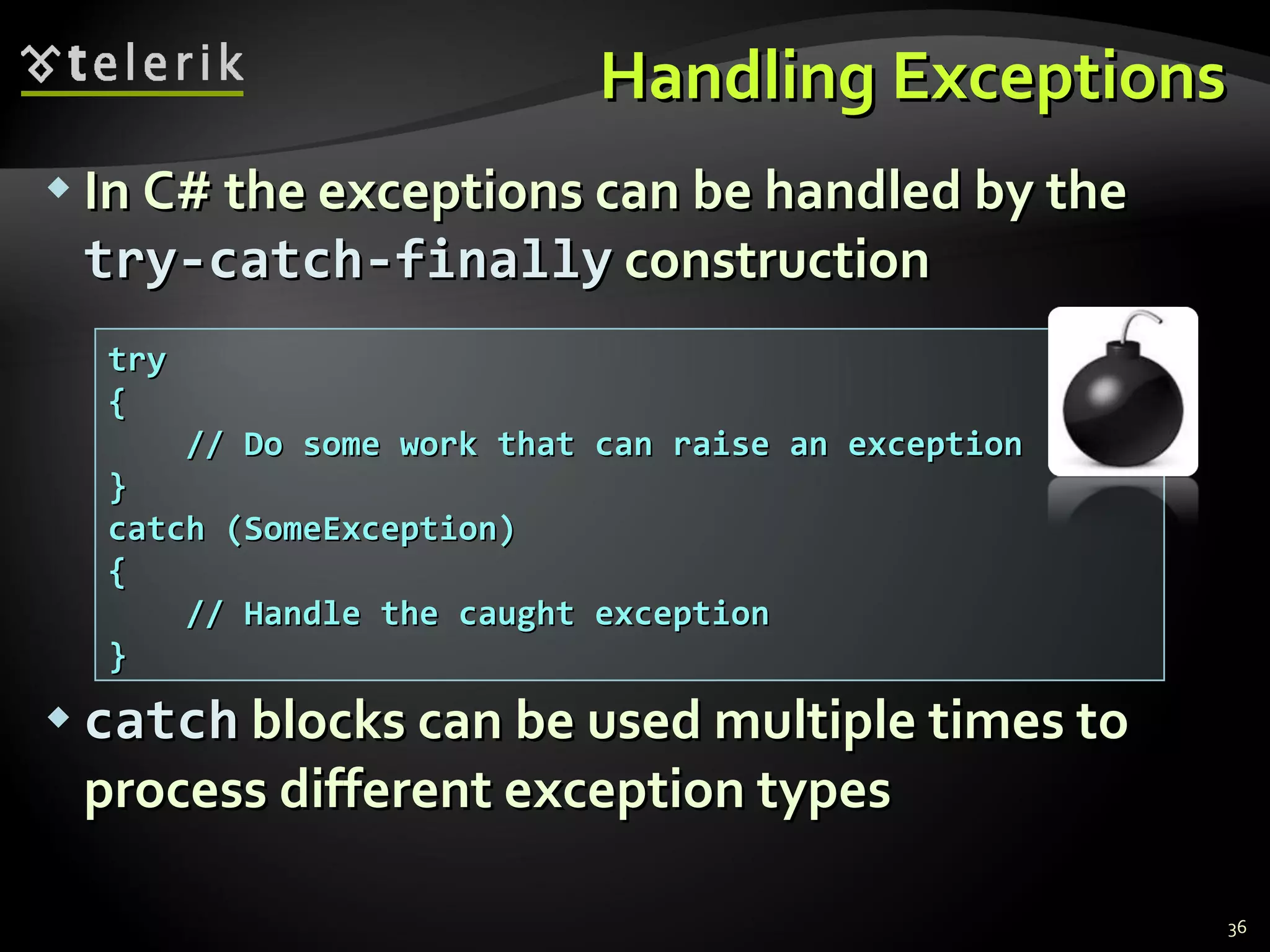
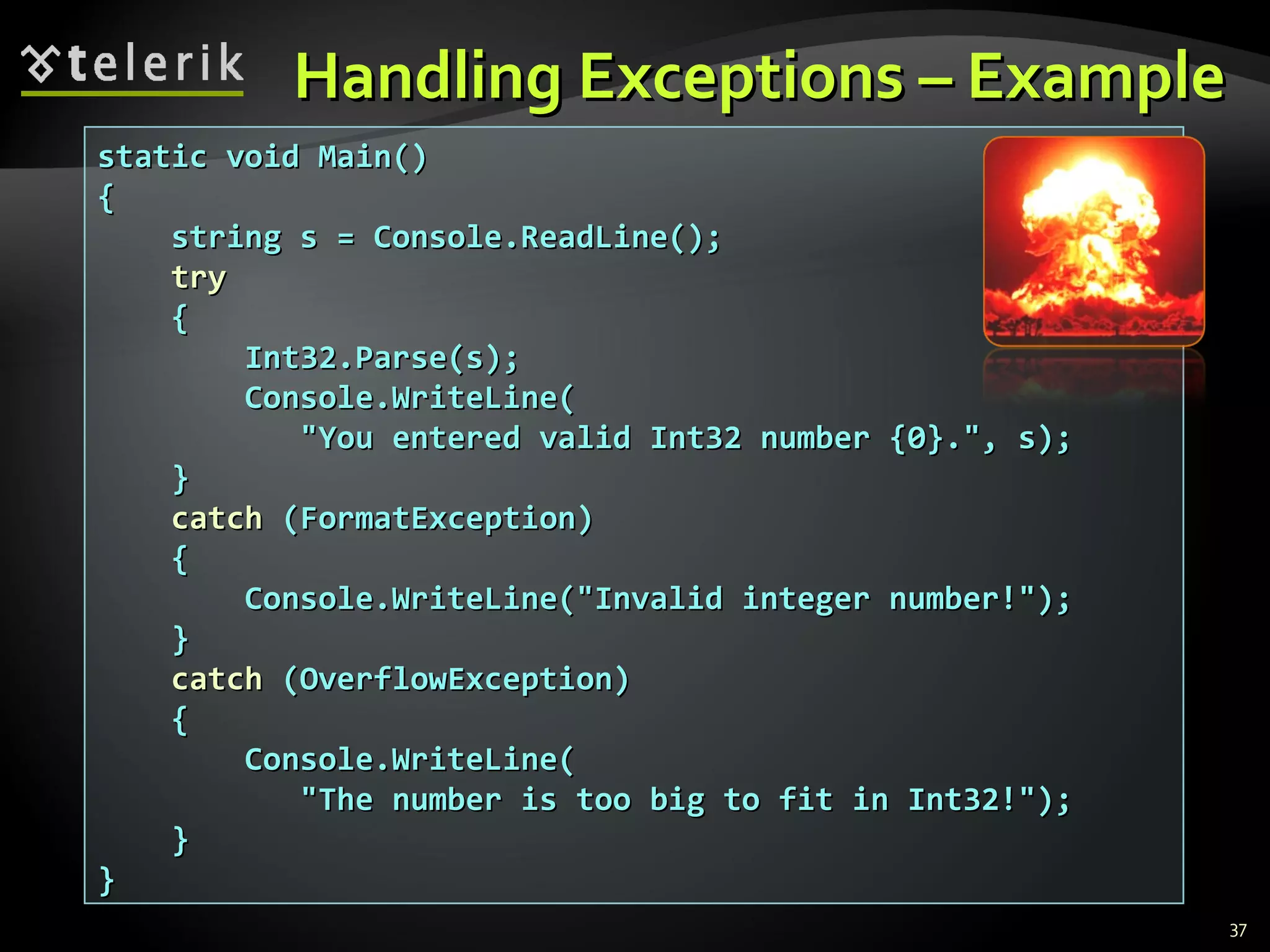
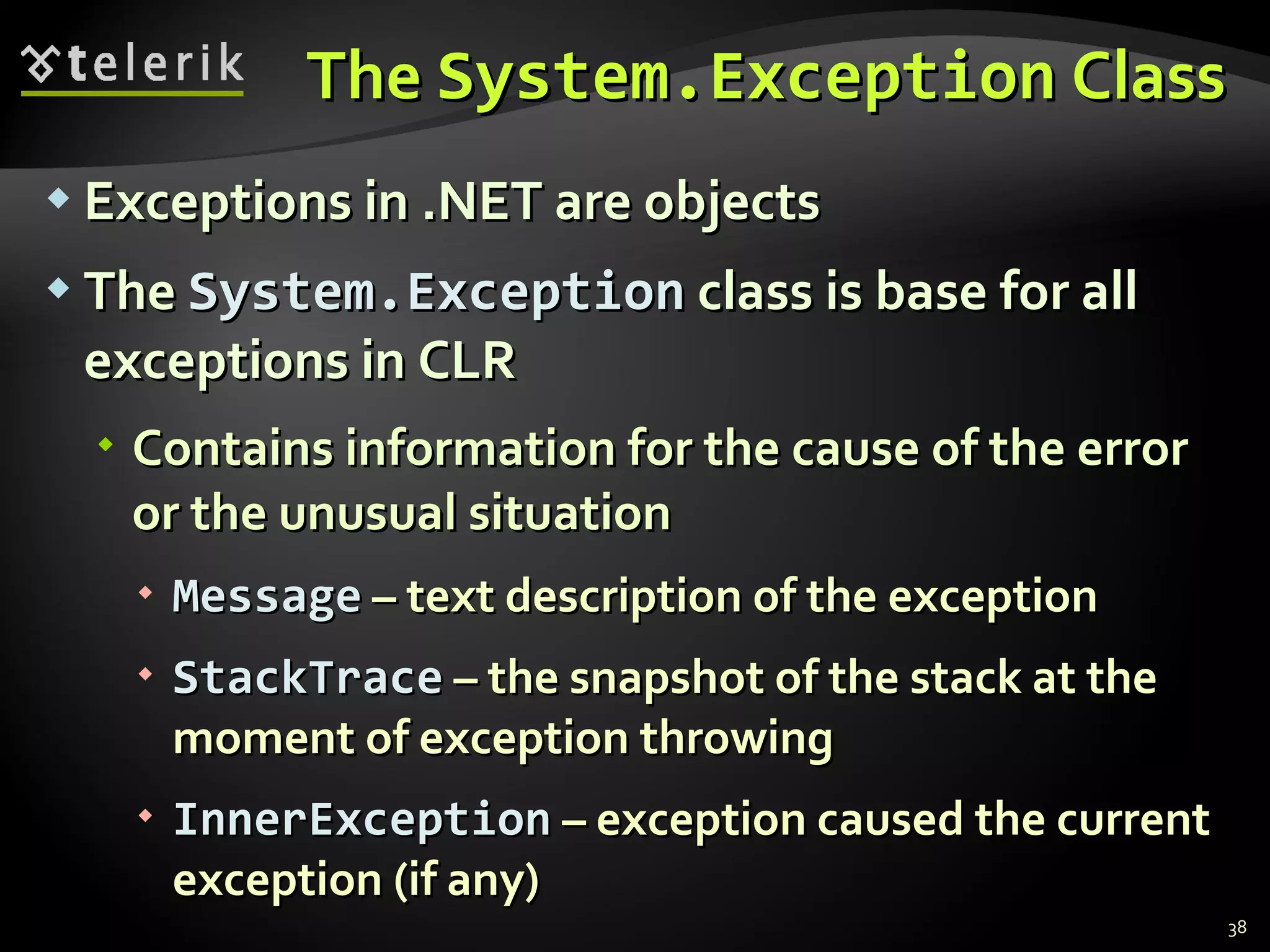
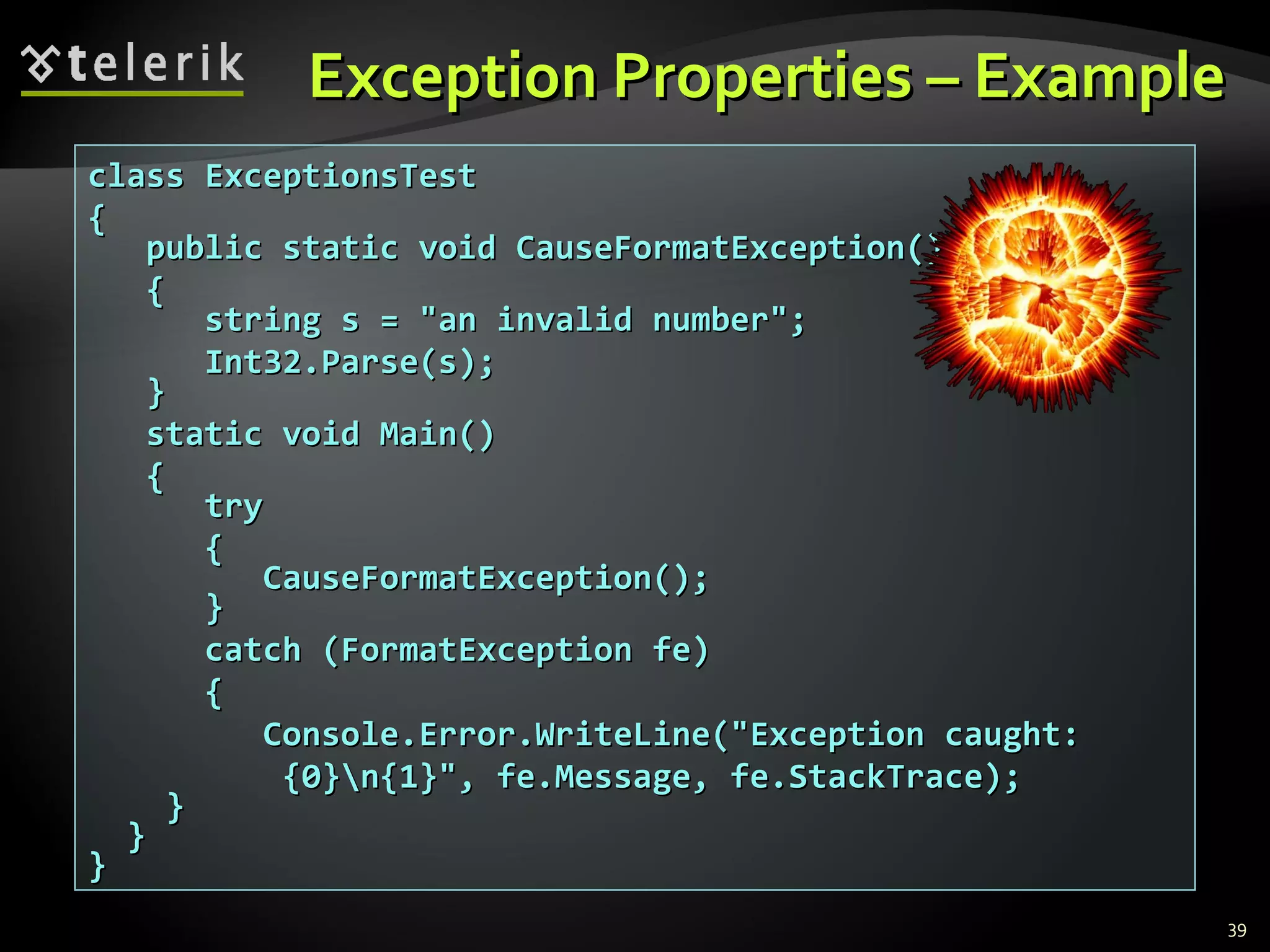
![Exception Properties The Message property gives brief description of the problem The StackTrace property is extremely useful when identifying the reason caused the exception Exception caught: Input string was not in a correct format. at System.Number.ParseInt32(String s, NumberStyles style, NumberFormatInfo info) at System.Int32.Parse(String s) at ExceptionsTest.CauseFormatException() in c:\consoleapplication1\exceptionstest.cs:line 8 at ExceptionsTest.Main(String[] args) in c:\consoleapplication1\exceptionstest.cs:line 15](https://image.slidesharecdn.com/4-csharp-language-overview-part-ii-120201085223-phpapp02/75/C-Language-Overview-Part-II-40-2048.jpg)
![Exception Properties (2) File names and line numbers are accessible only if the compilation was in Debug mode When compiled in Release mode, the information in the property StackTrace is quite different: Exception caught: Input string was not in a correct format. at System.Number.ParseInt32(String s, NumberStyles style, NumberFormatInfo info) at ExceptionsTest.Main(String[] args)](https://image.slidesharecdn.com/4-csharp-language-overview-part-ii-120201085223-phpapp02/75/C-Language-Overview-Part-II-41-2048.jpg)
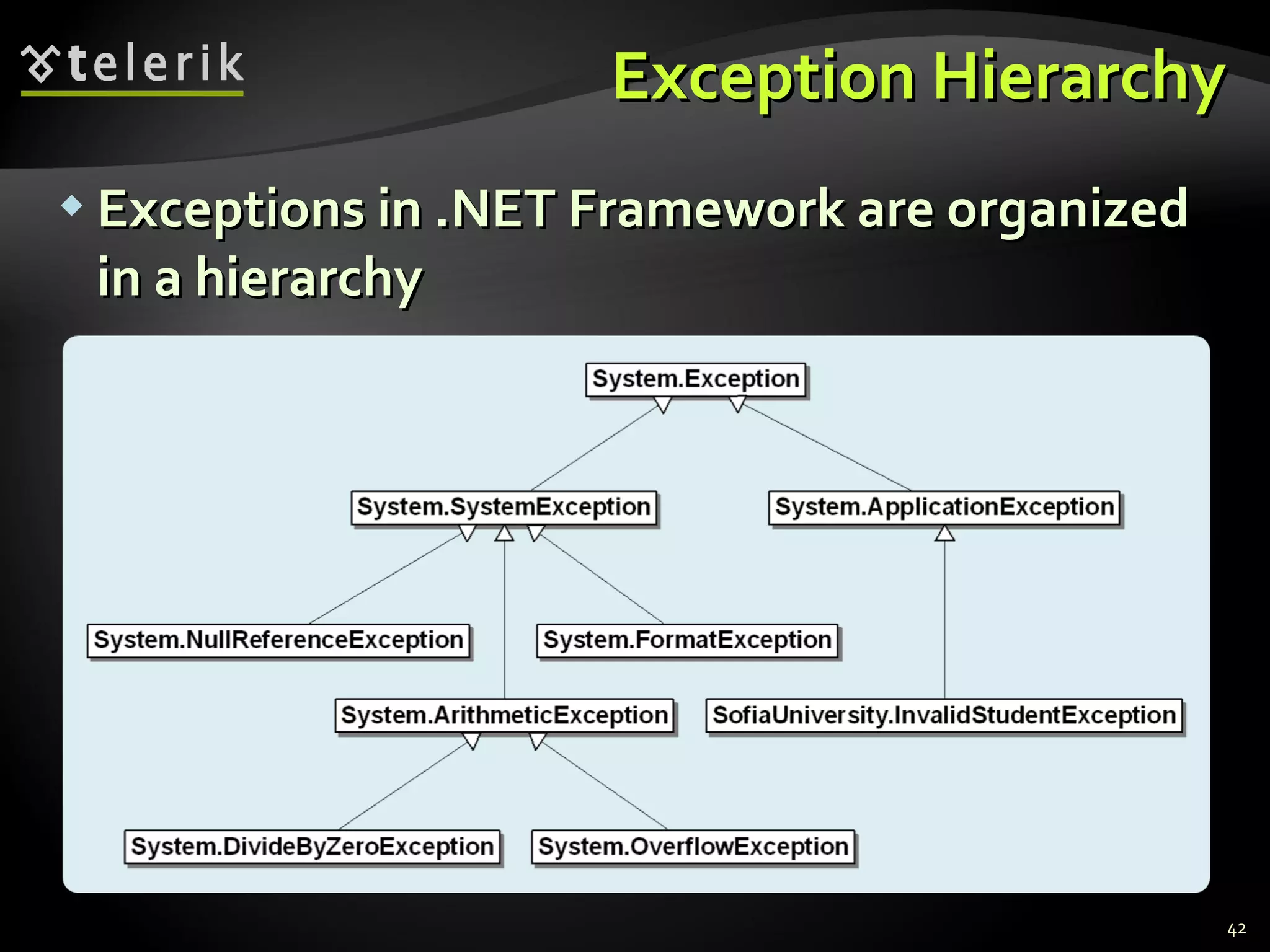
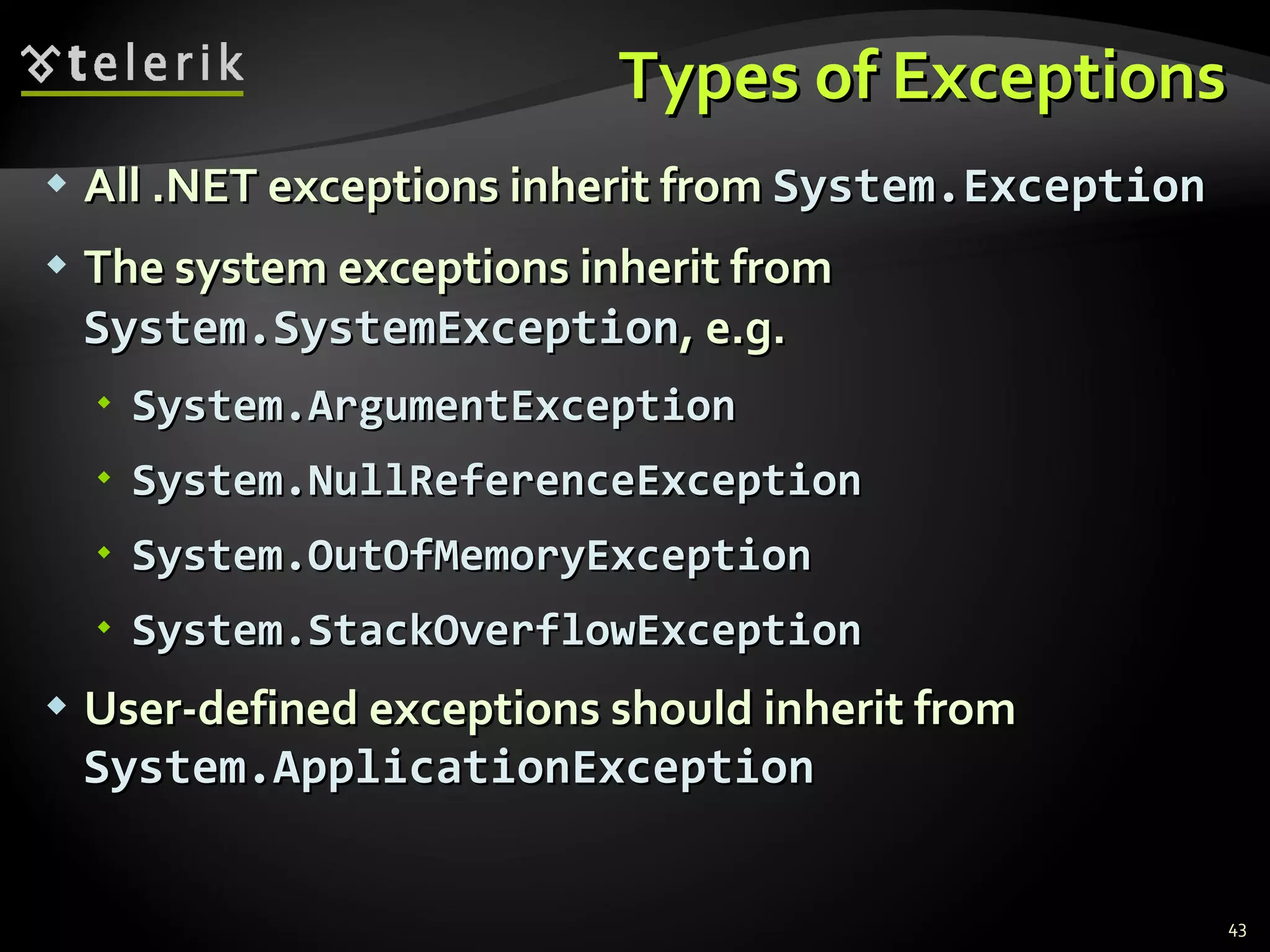
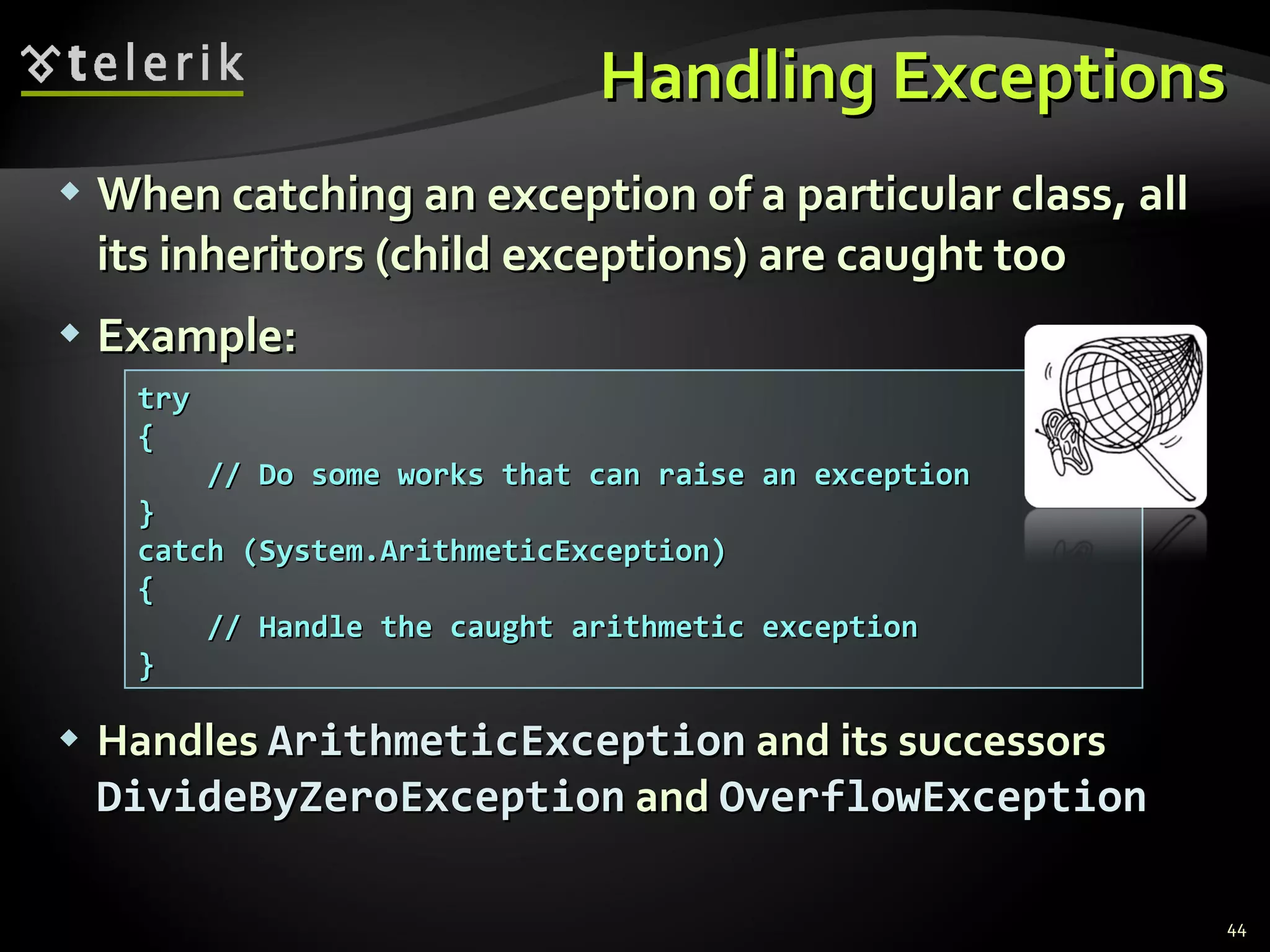
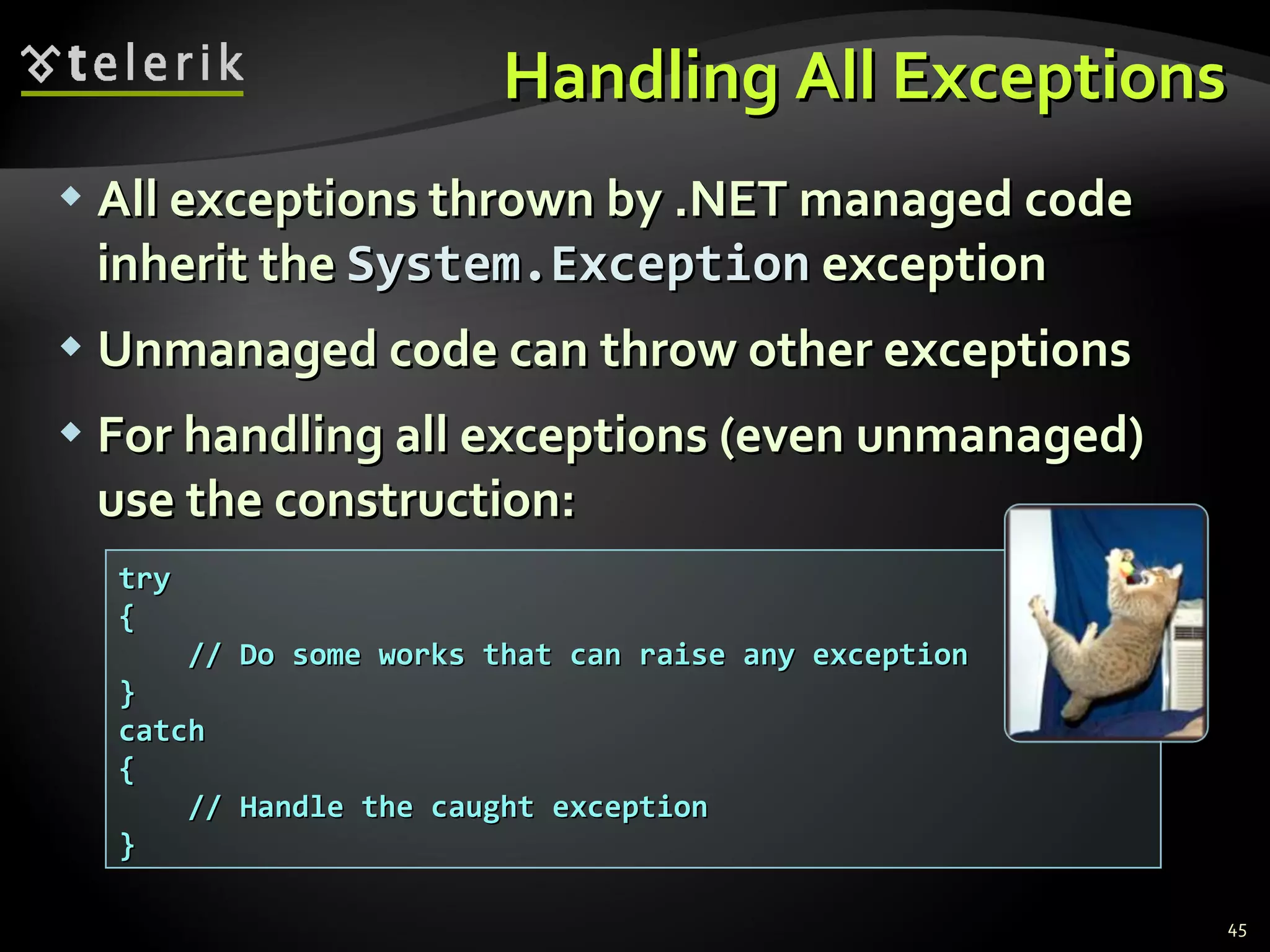
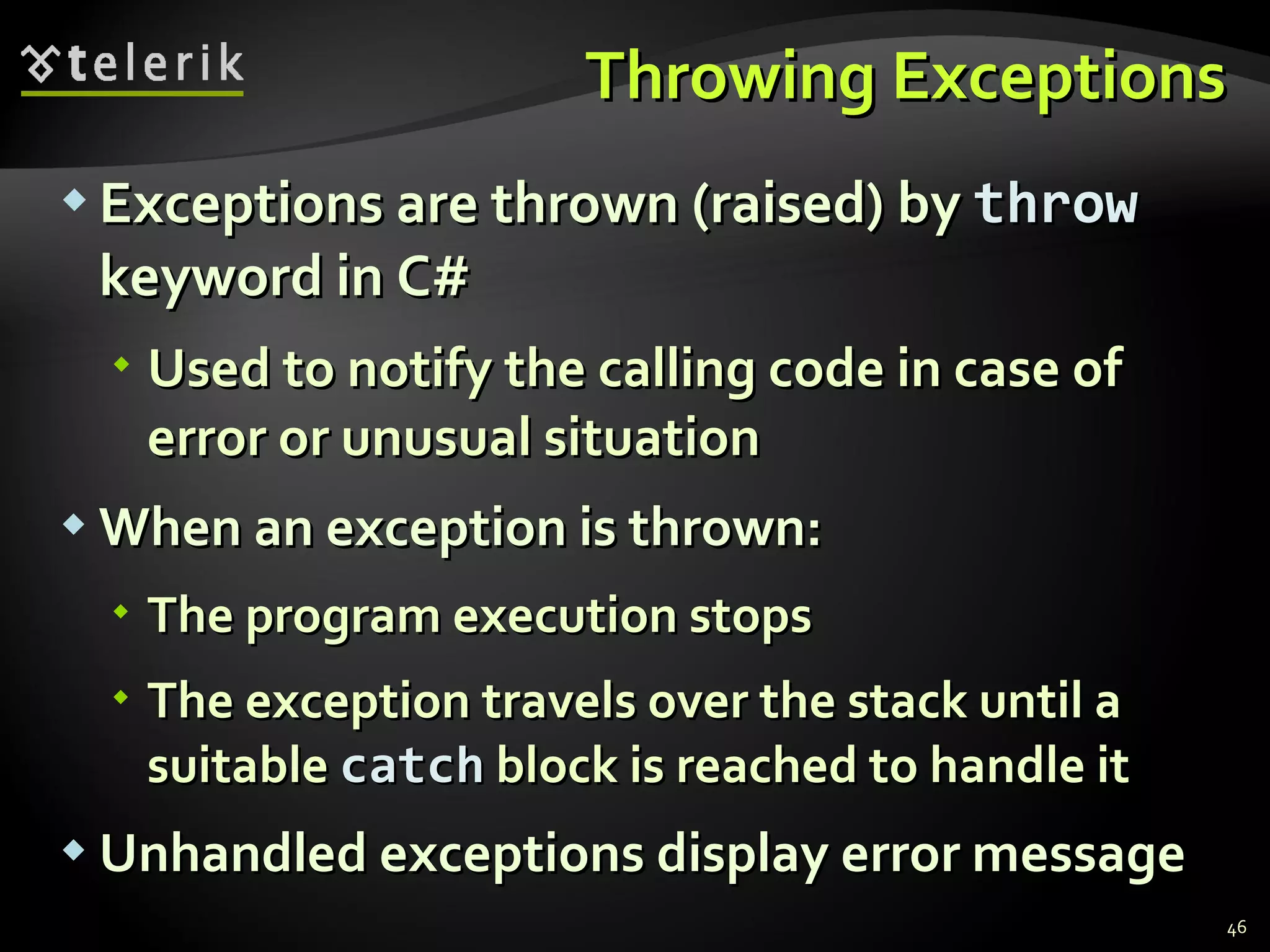
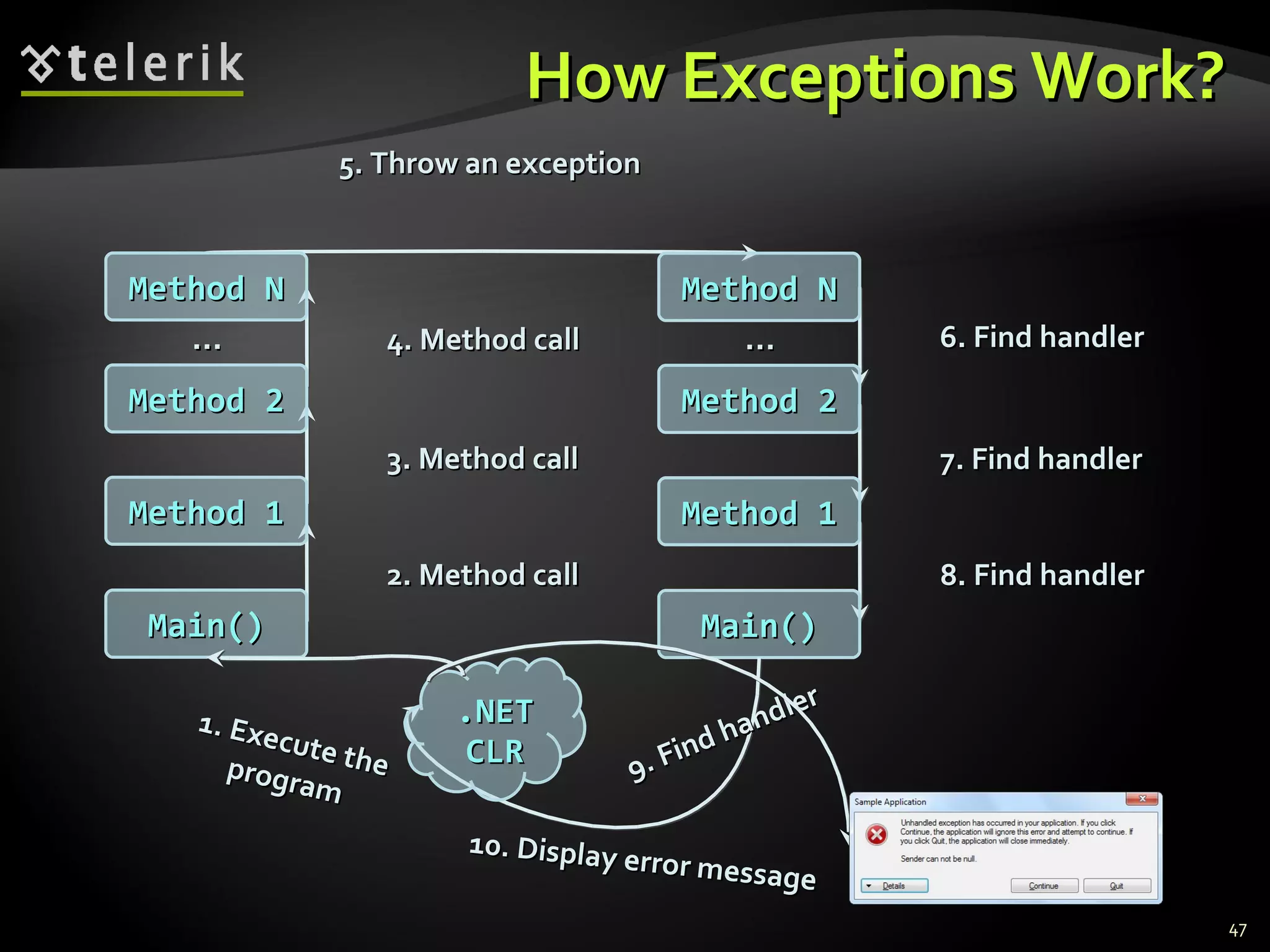
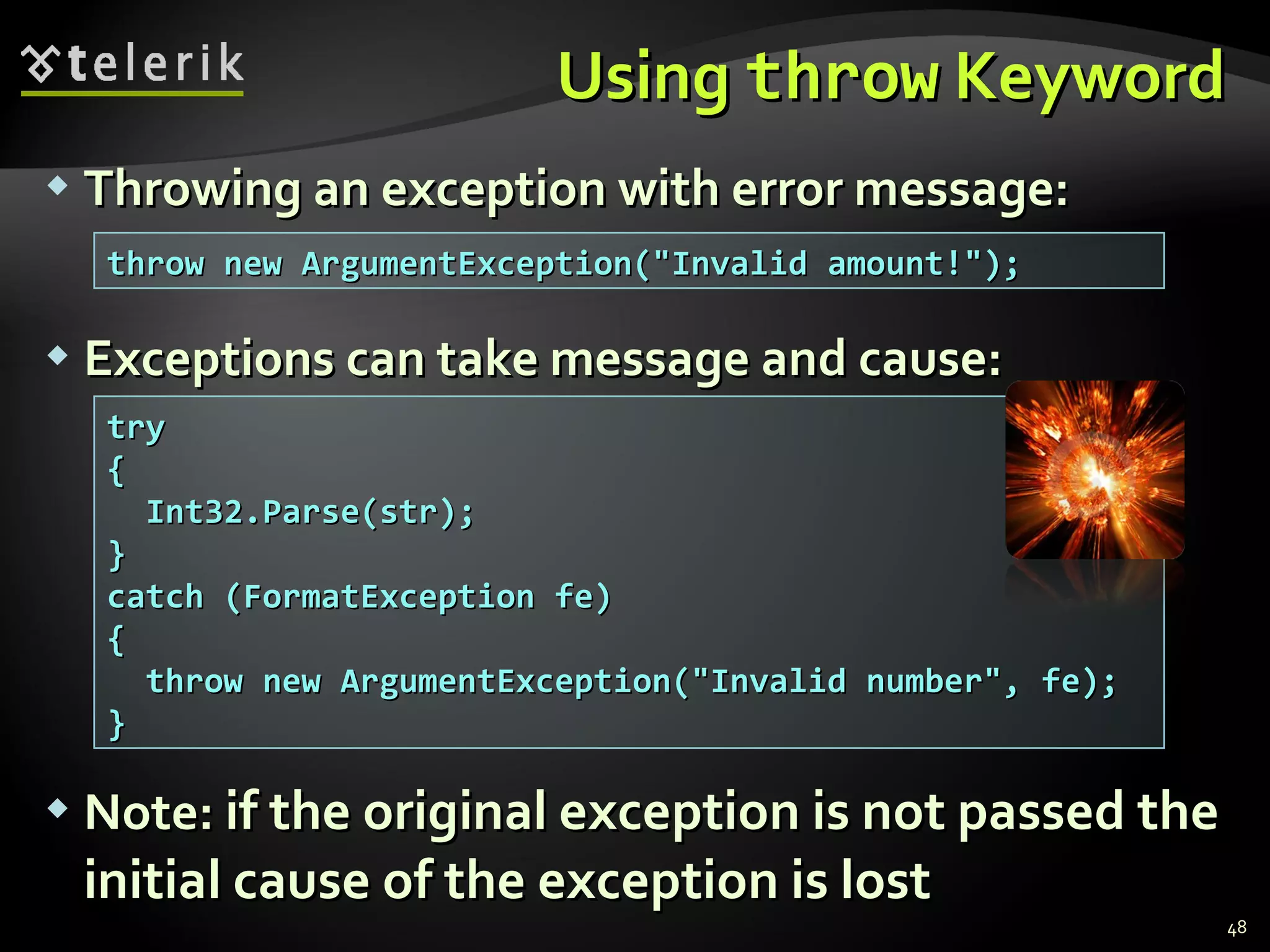
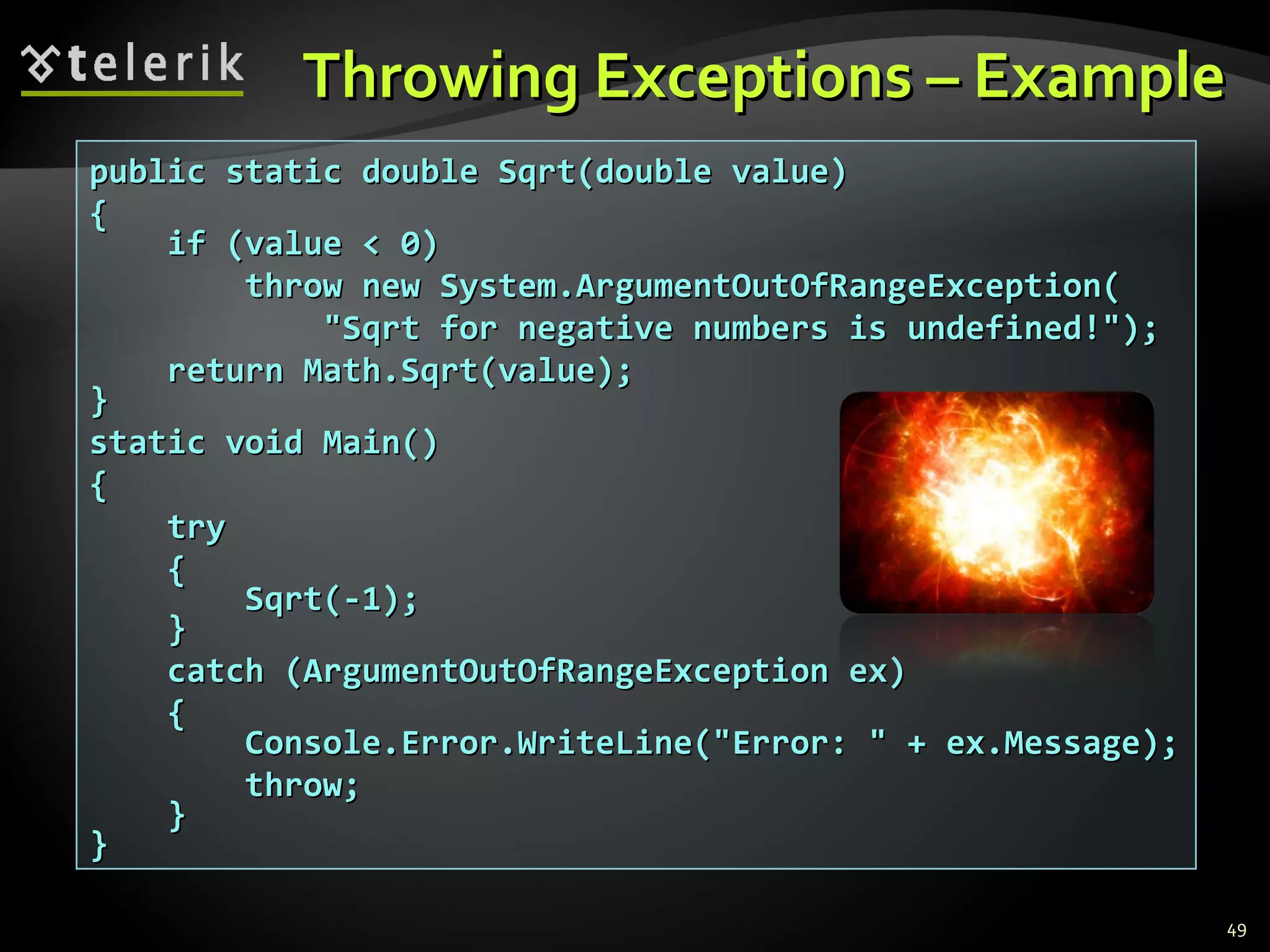
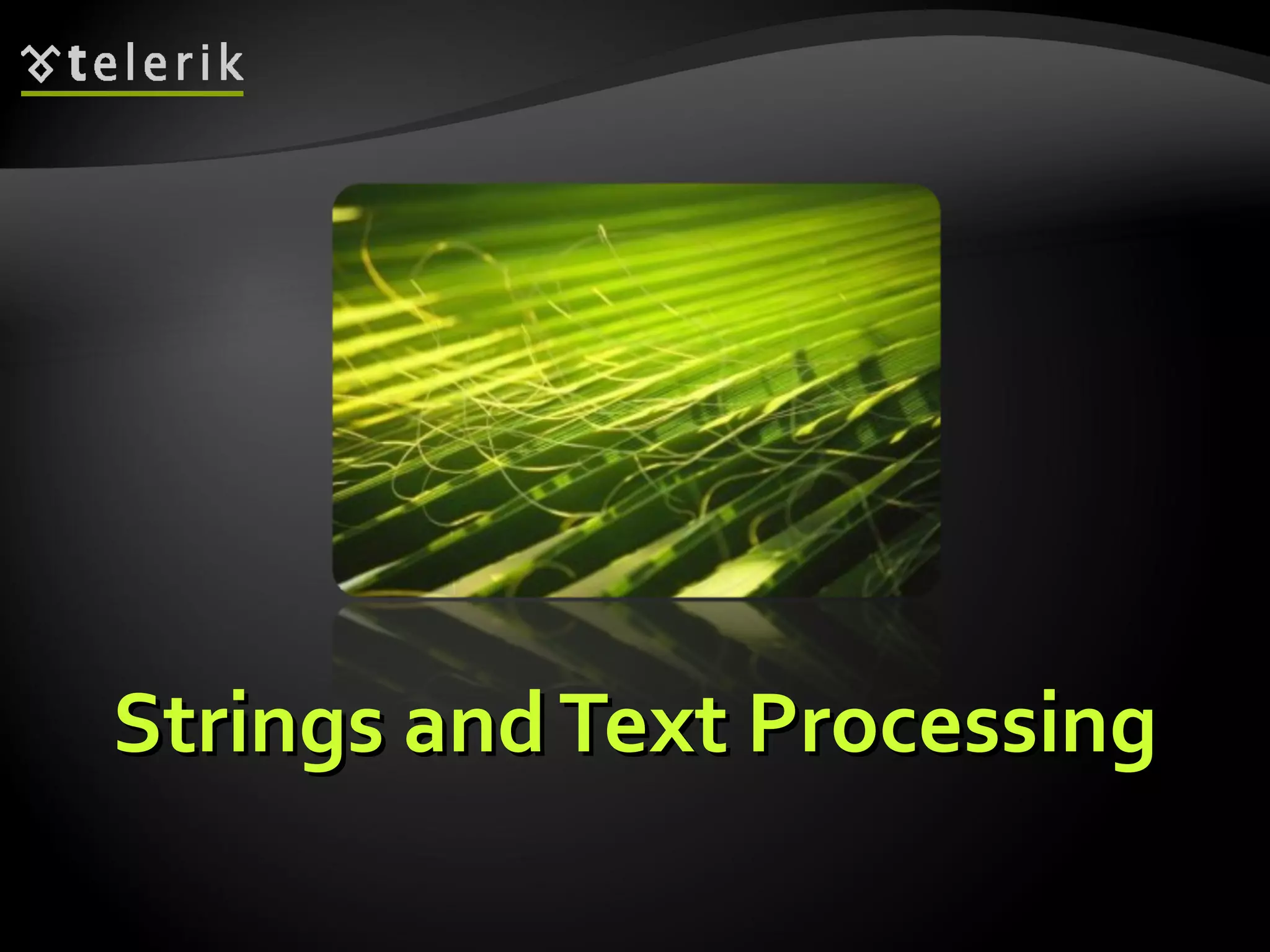
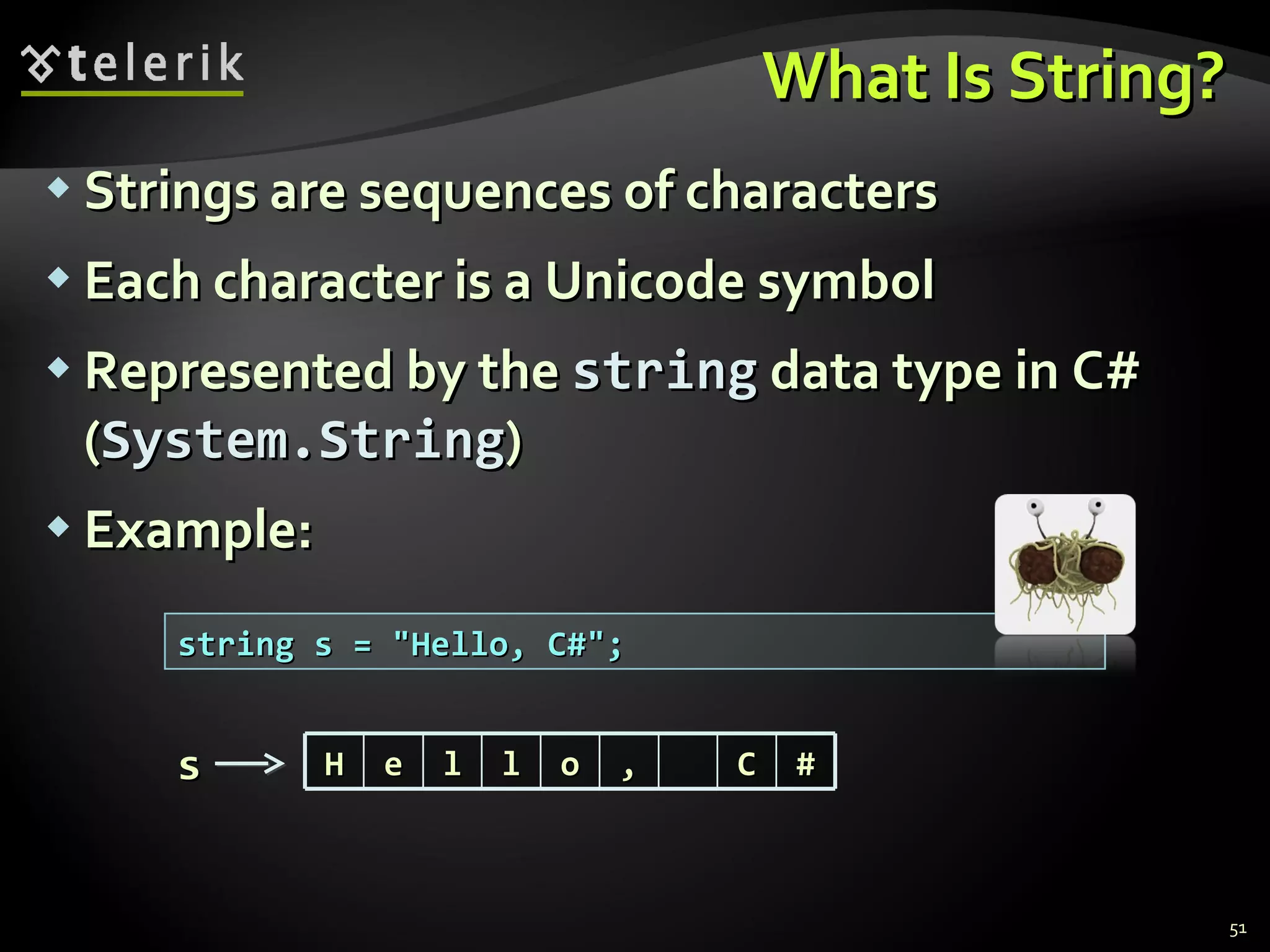
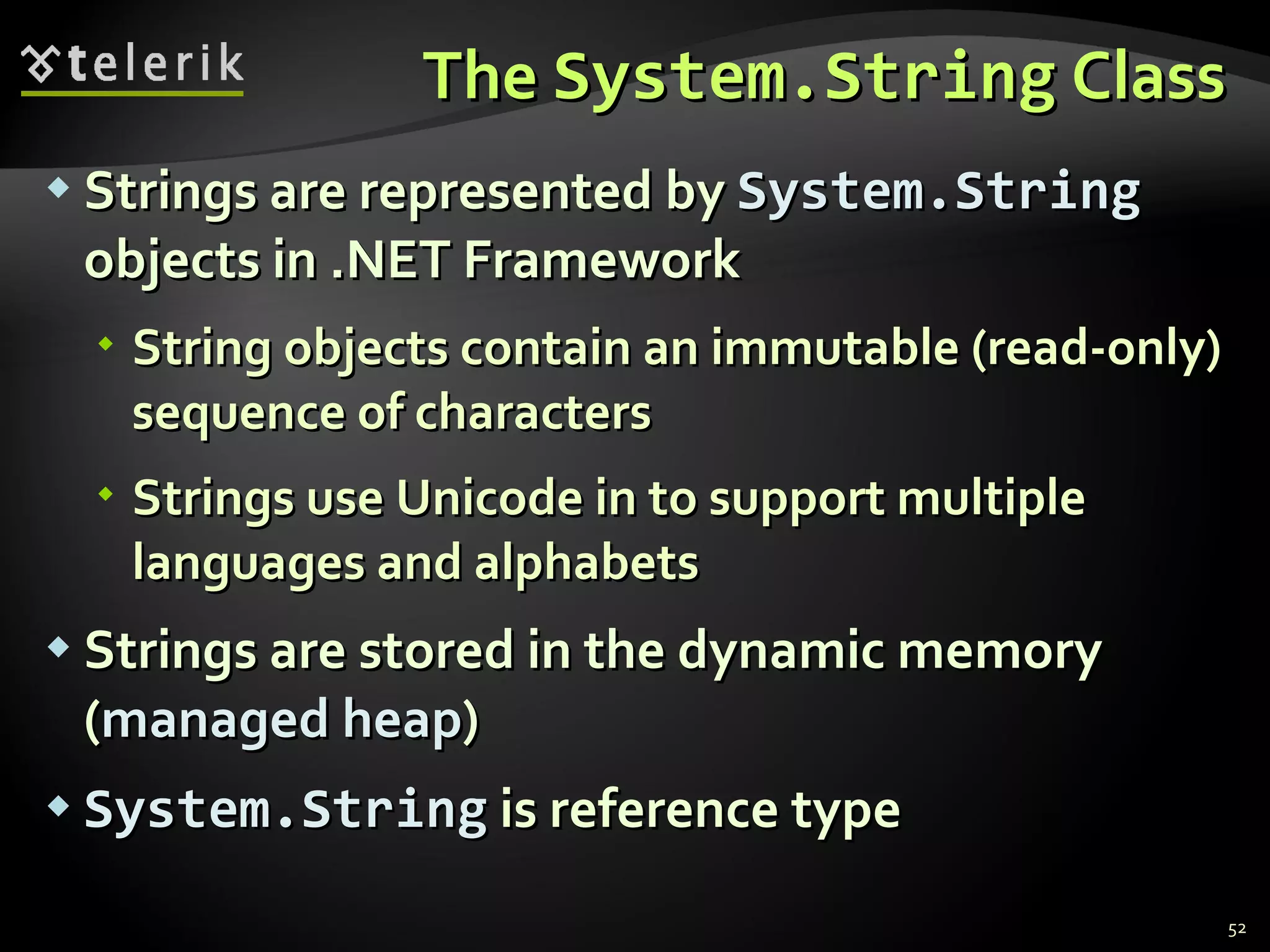
![The System.String Class (2) String objects are like arrays of characters ( char[] ) Have fixed length ( String.Length ) Elements can be accessed directly by index The index is in the range [ 0 ... Length-1 ] string s = "Hello!"; int len = s.Length; // len = 6 char ch = s[1]; // ch = 'e' index = s[index] = 0 1 2 3 4 5 H e l l o !](https://image.slidesharecdn.com/4-csharp-language-overview-part-ii-120201085223-phpapp02/75/C-Language-Overview-Part-II-53-2048.jpg)
![Strings – Example static void Main() { string s = "Stand up, stand up, Balkan Superman."; Console.WriteLine("s = \"{0}\"", s); Console.WriteLine("s.Length = {0}", s.Length); for (int i = 0; i < s.Length; i++) { Console.WriteLine("s[{0}] = {1}", i, s[i]); } }](https://image.slidesharecdn.com/4-csharp-language-overview-part-ii-120201085223-phpapp02/75/C-Language-Overview-Part-II-54-2048.jpg)
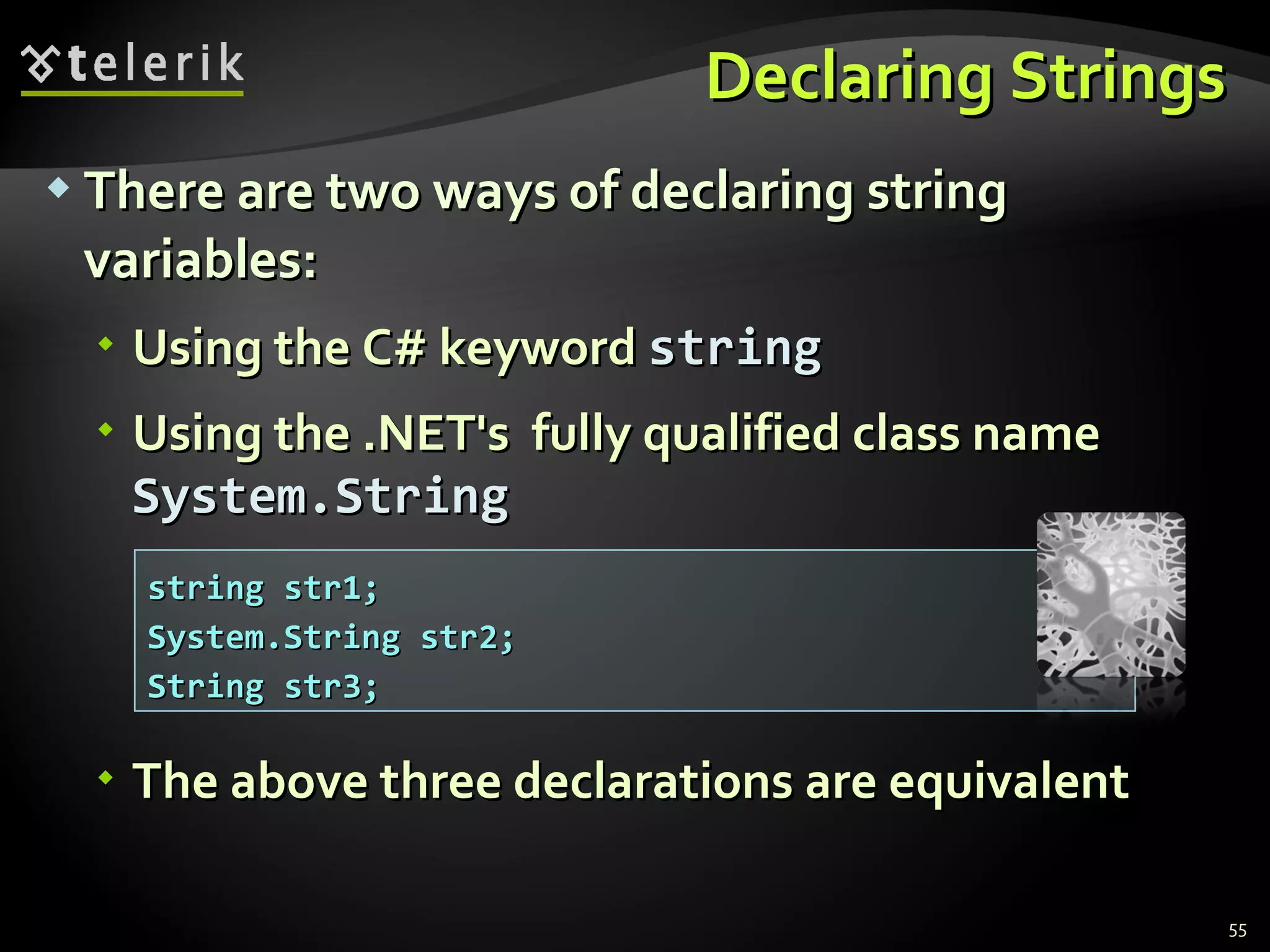
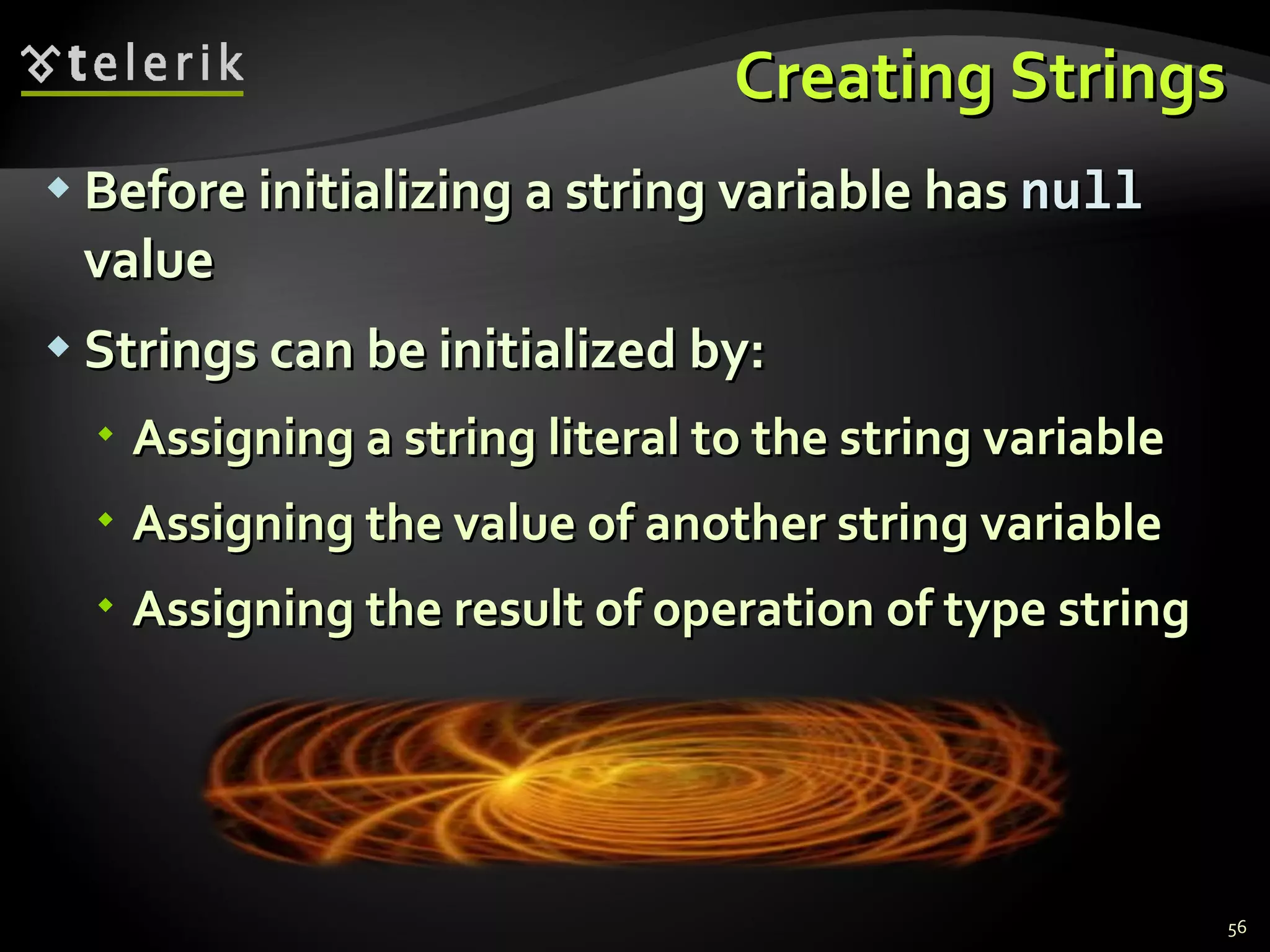
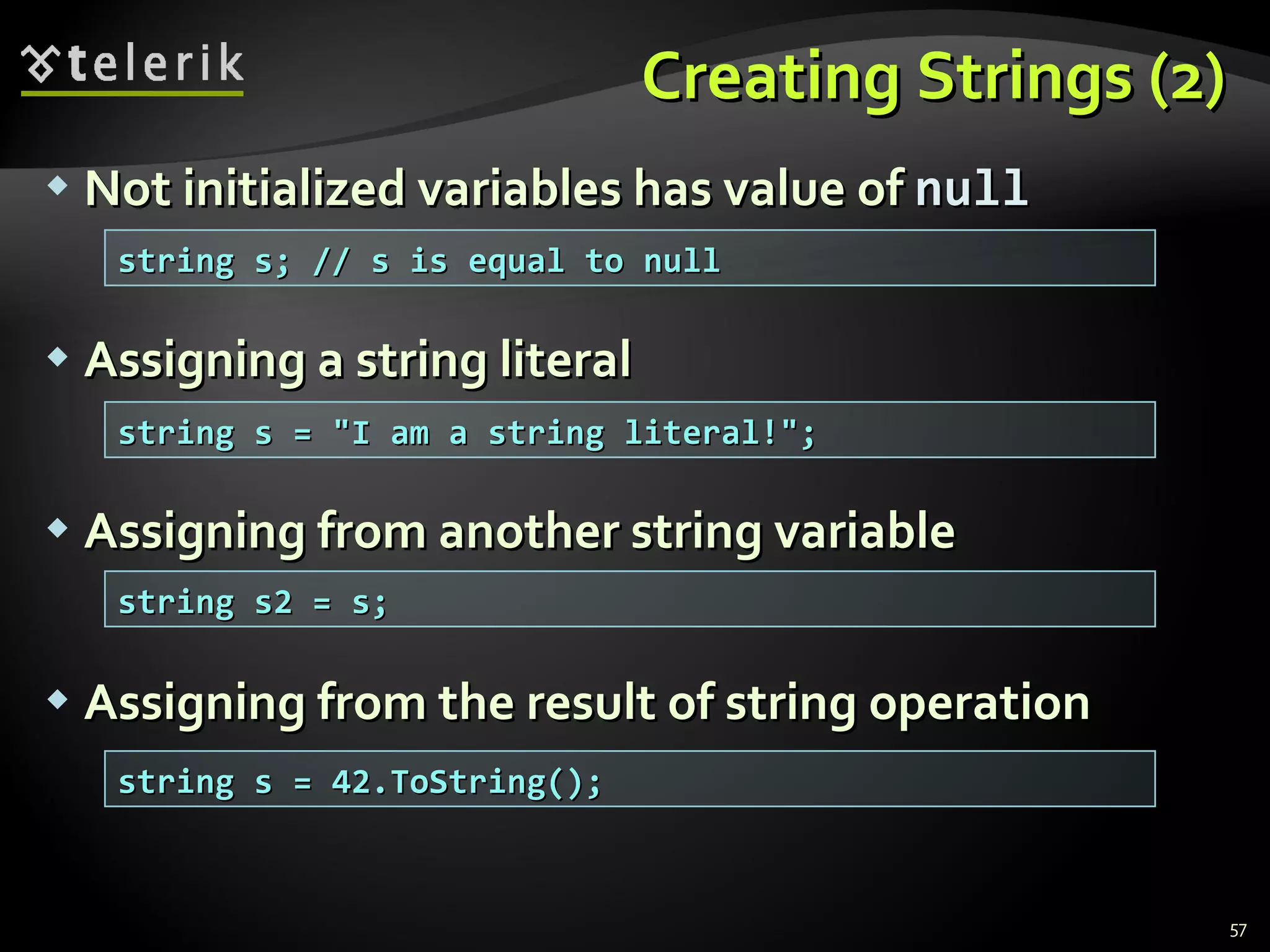
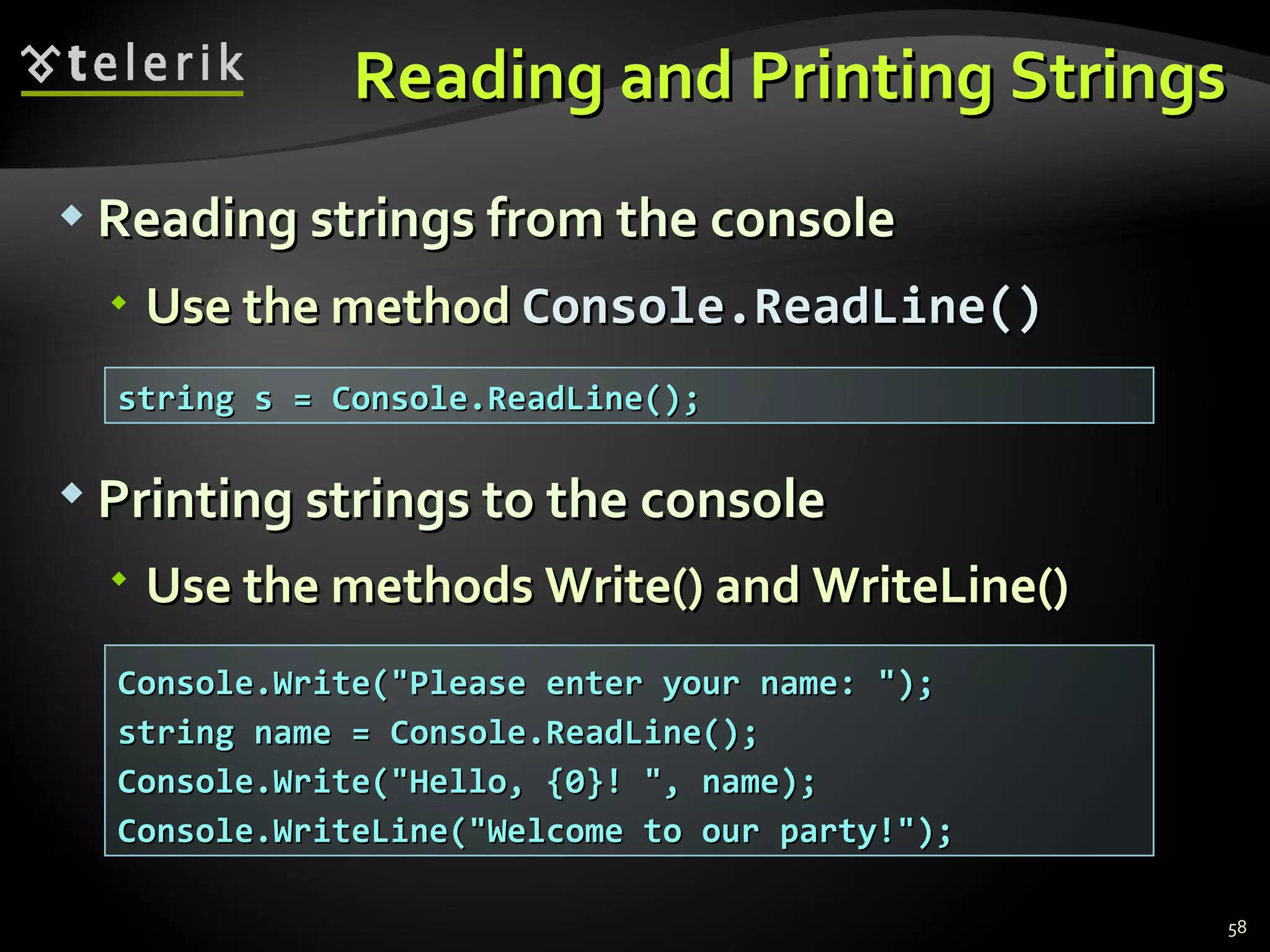
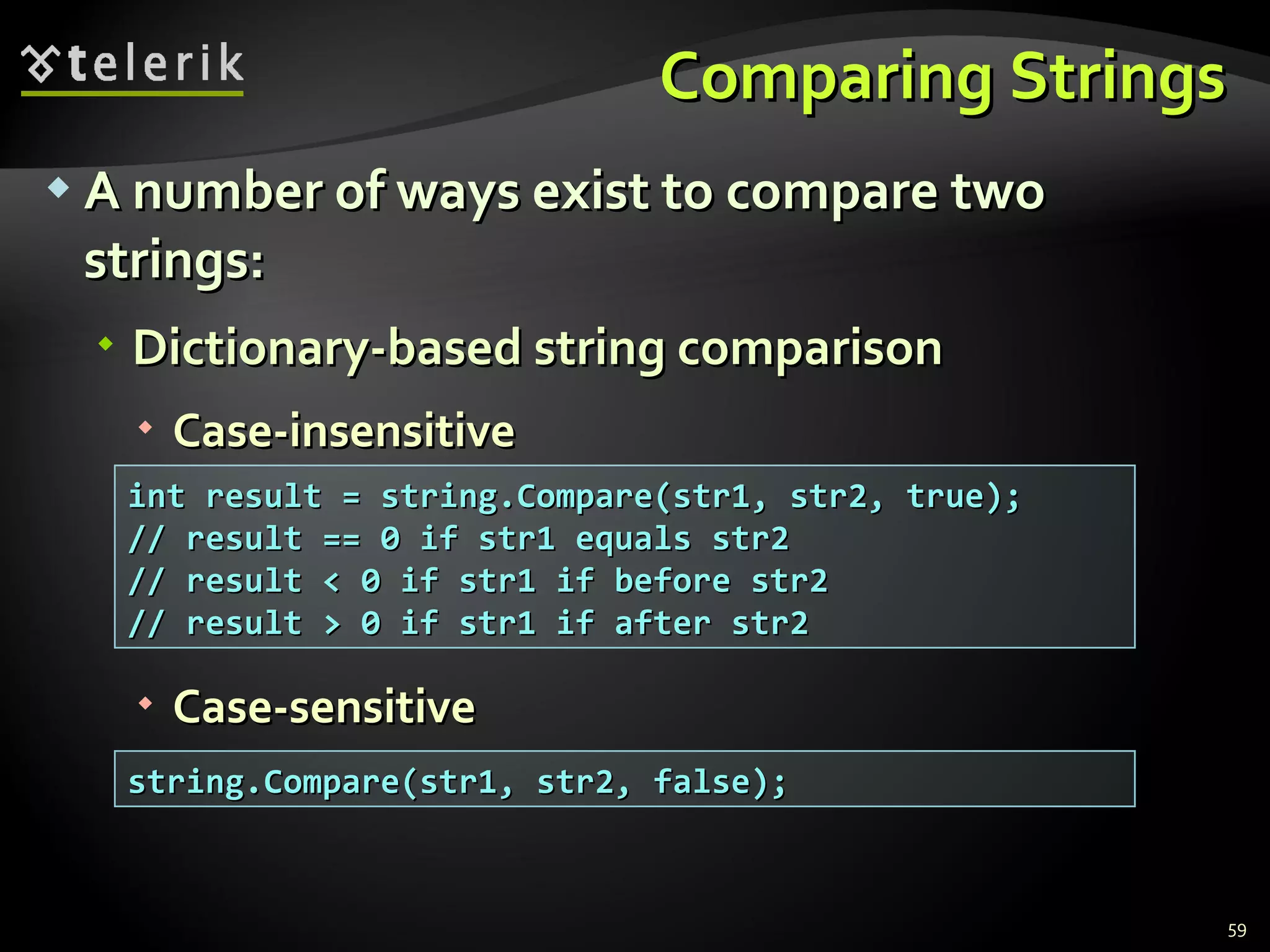
![Comparing Strings – Example Finding the first string in a lexicographical order from a given list of strings: string[] towns = {"Sofia", "Varna", "Plovdiv", "Pleven", "Bourgas", "Rousse", "Yambol"}; string firstTown = towns[0]; for (int i=1; i<towns.Length; i++) { string currentTown = towns[i]; if (String.Compare(currentTown, firstTown) < 0) { firstTown = currentTown; } } Console.WriteLine("First town: {0}", firstTown);](https://image.slidesharecdn.com/4-csharp-language-overview-part-ii-120201085223-phpapp02/75/C-Language-Overview-Part-II-60-2048.jpg)
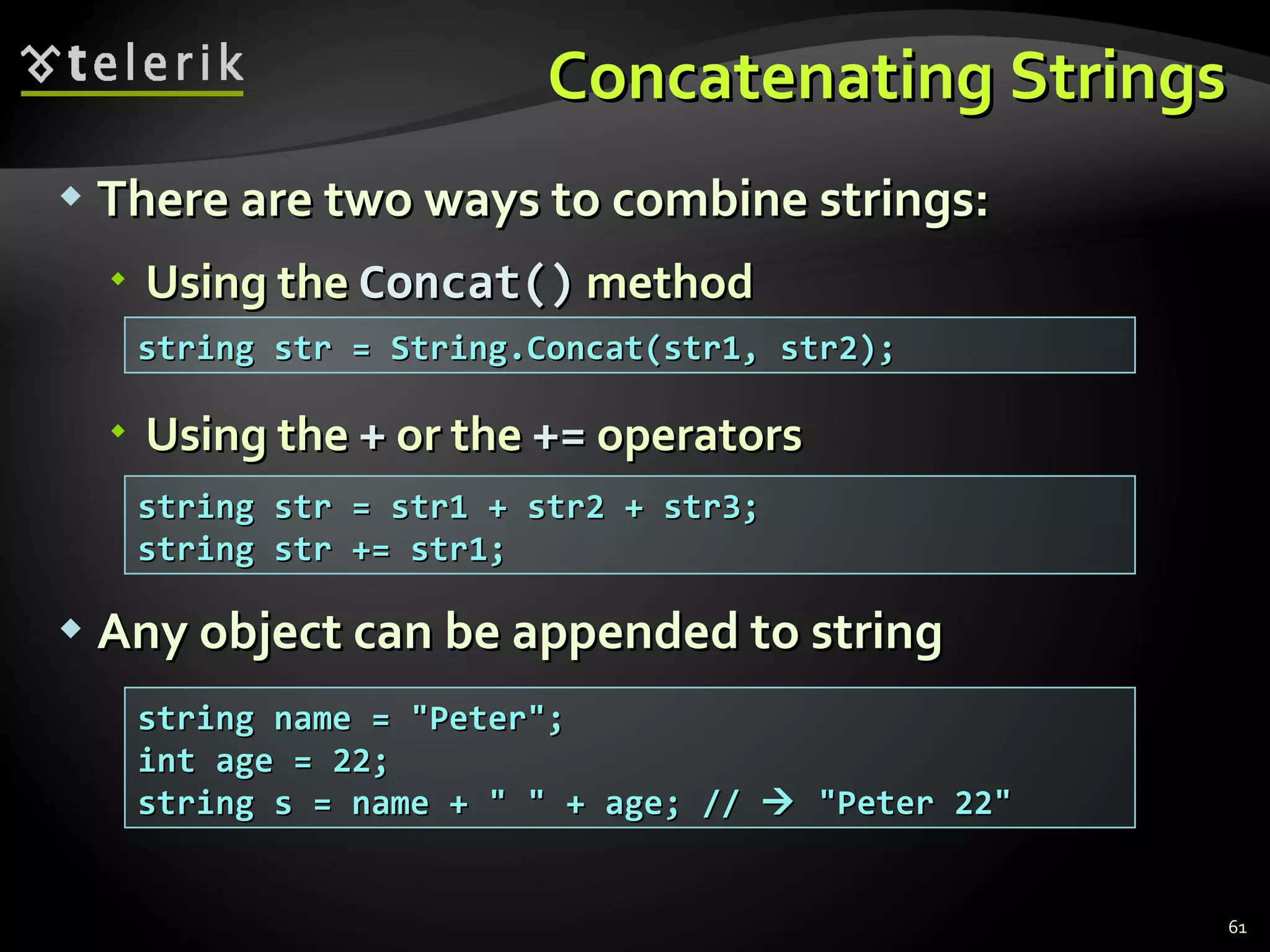
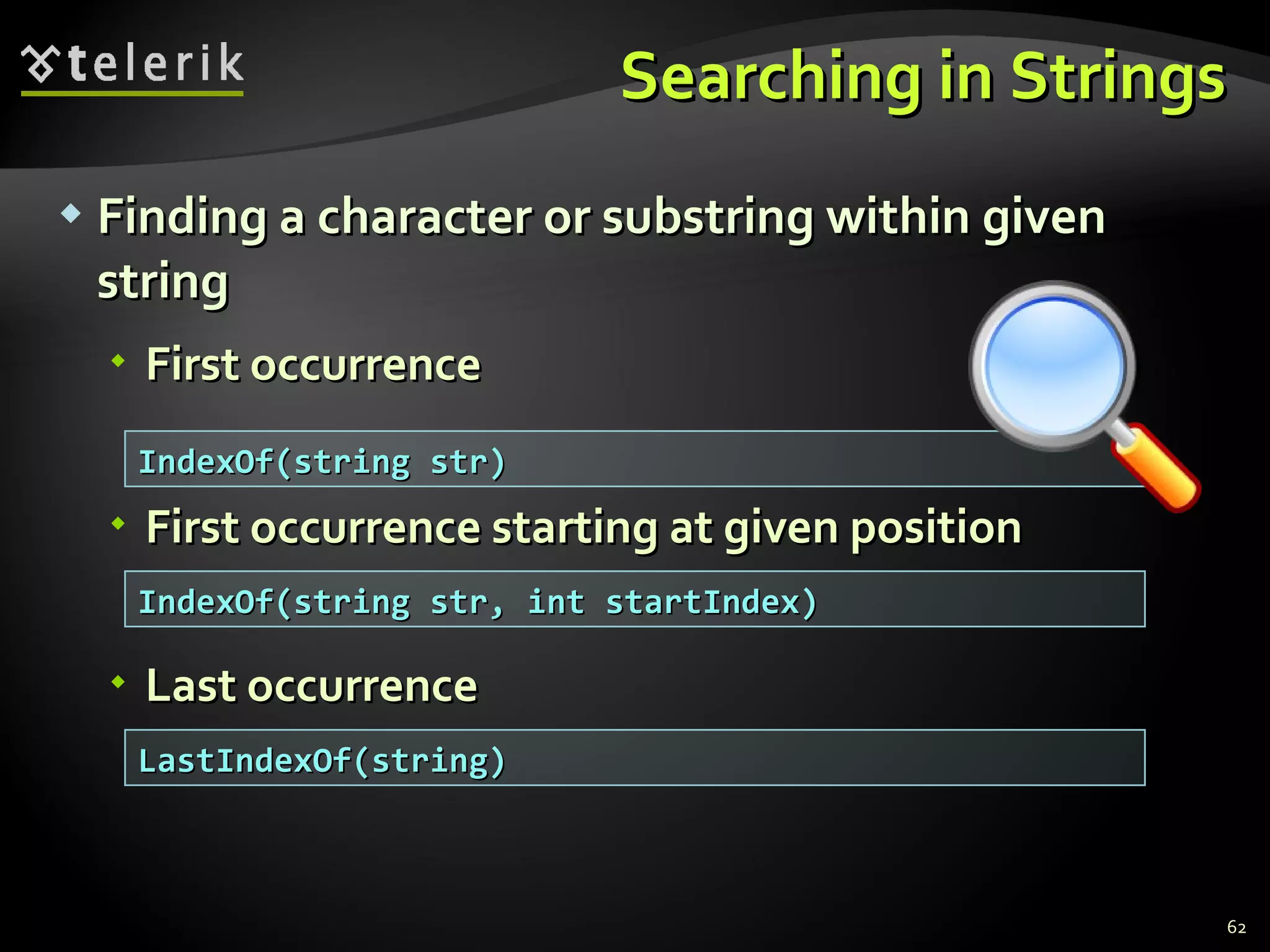
![Searching in Strings – Example string str = "C# Programming Course"; int index = str.IndexOf("C#"); // index = 0 index = str.IndexOf("Course"); // index = 15 index = str.IndexOf("COURSE"); // index = -1 // IndexOf is case-sensetive. -1 means not found index = str.IndexOf("ram"); // index = 7 index = str.IndexOf("r"); // index = 4 index = str.IndexOf("r", 5); // index = 7 index = str.IndexOf("r", 8); // index = 18 index = s[index] = 0 1 2 3 4 5 6 7 8 9 10 11 12 13 … C # P r o g r a m m i n g …](https://image.slidesharecdn.com/4-csharp-language-overview-part-ii-120201085223-phpapp02/75/C-Language-Overview-Part-II-63-2048.jpg)
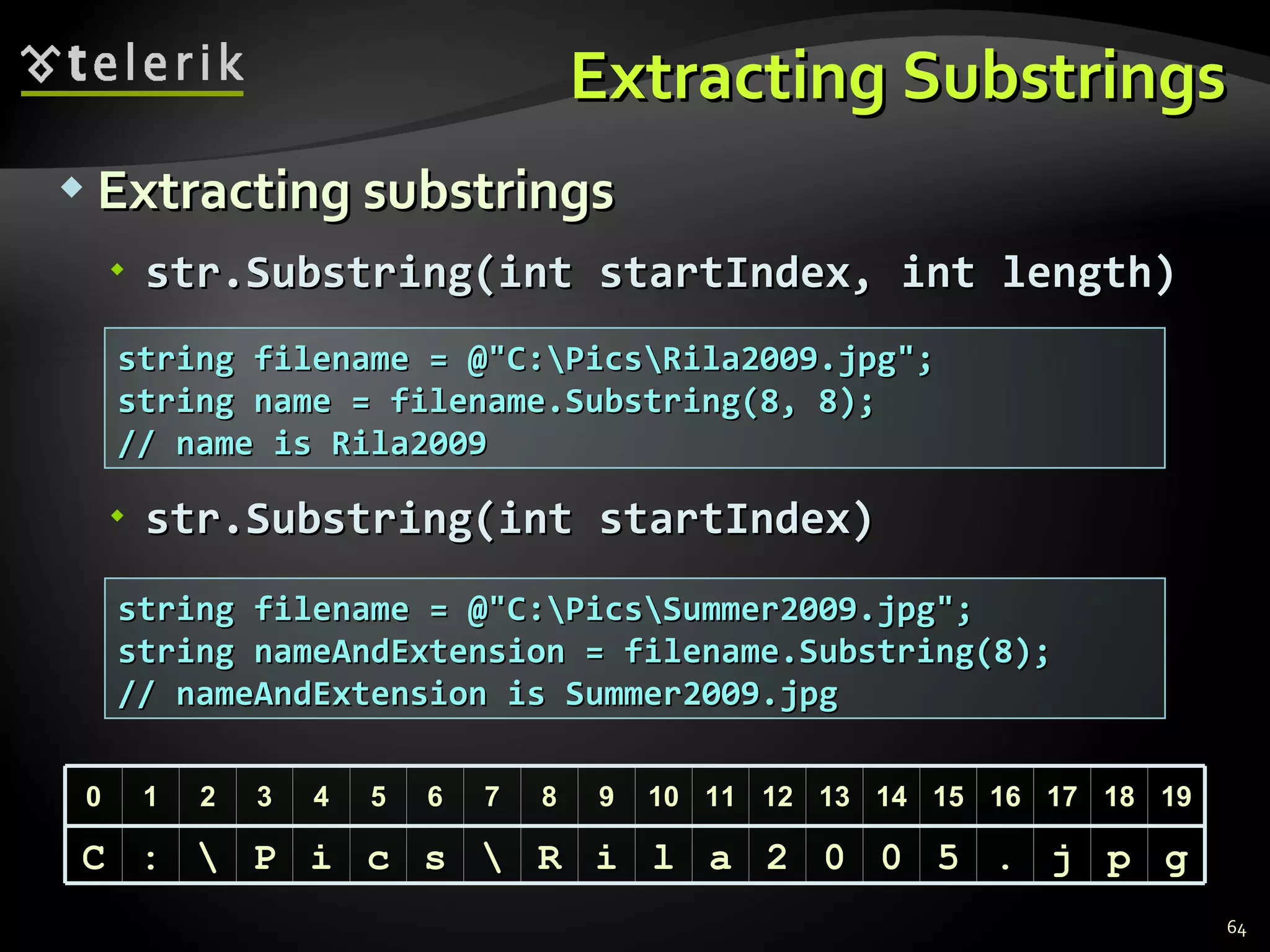
![Splitting Strings To split a string by given separator(s) use the following method: Example: string[] Split(params char[]) string listOfBeers = "Amstel, Zagorka, Tuborg, Becks."; string[] beers = listOfBeers.Split(' ', ',', '.'); Console.WriteLine("Available beers are:"); foreach (string beer in beers) { Console.WriteLine(beer); }](https://image.slidesharecdn.com/4-csharp-language-overview-part-ii-120201085223-phpapp02/75/C-Language-Overview-Part-II-65-2048.jpg)
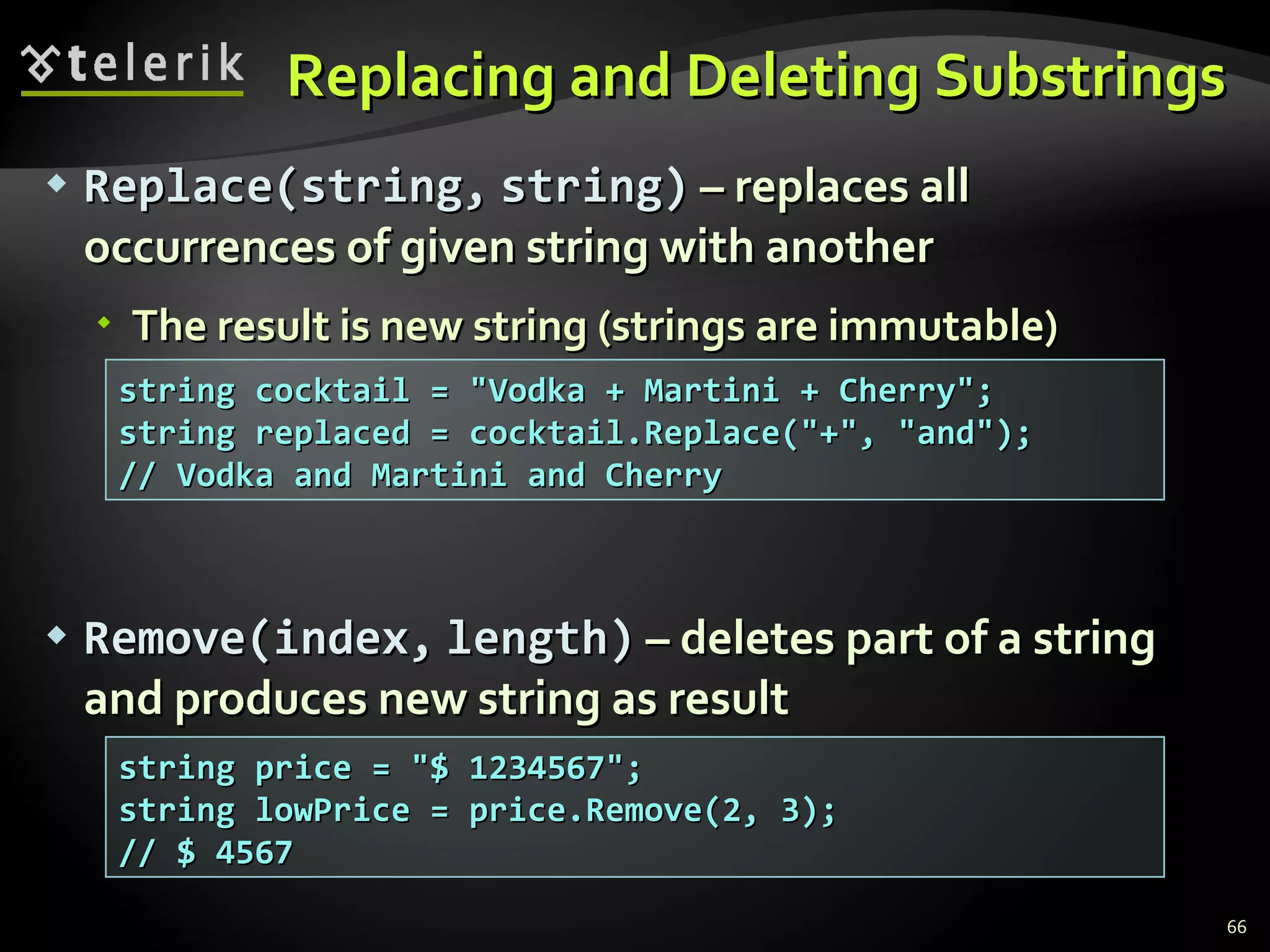
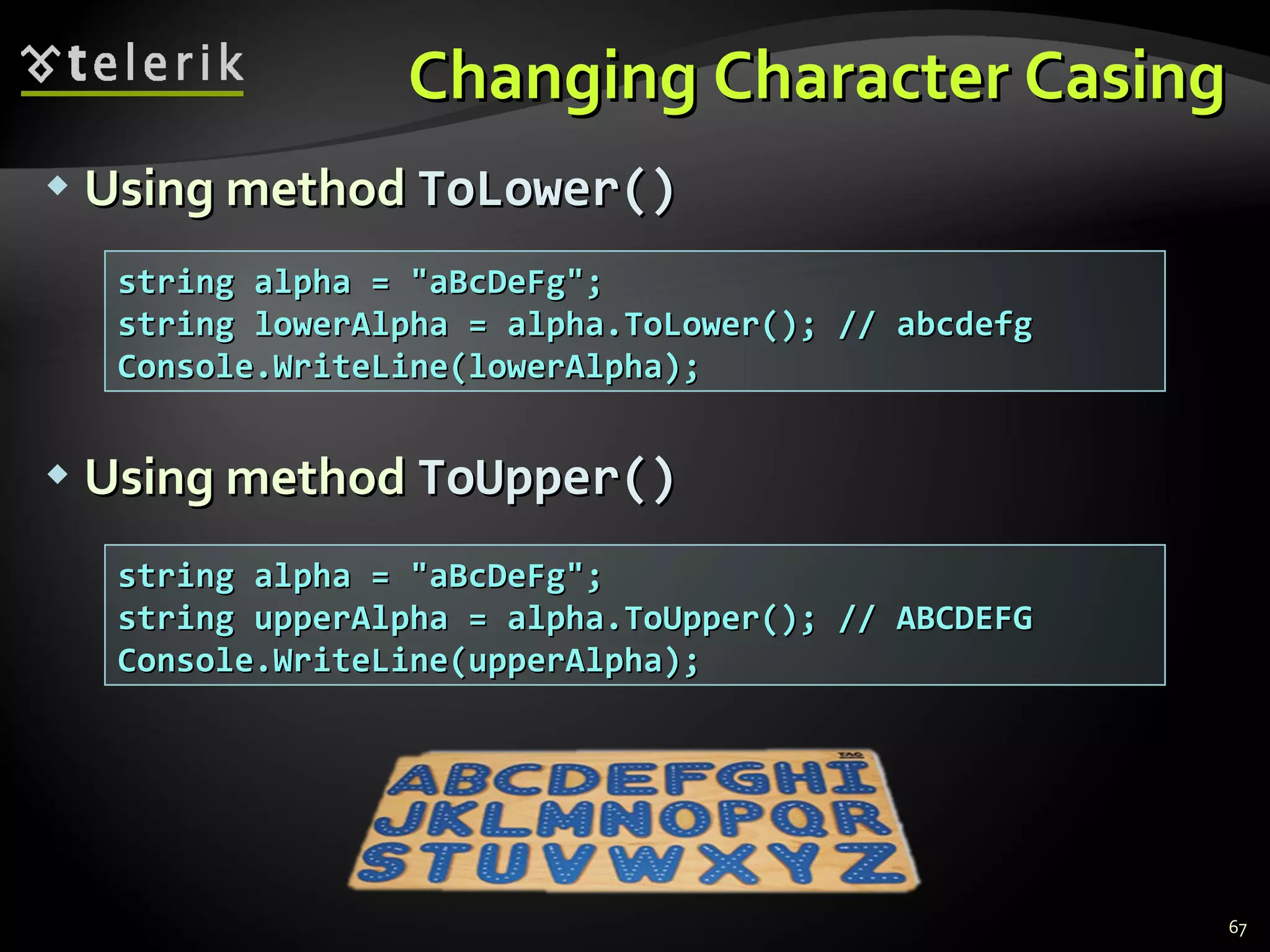
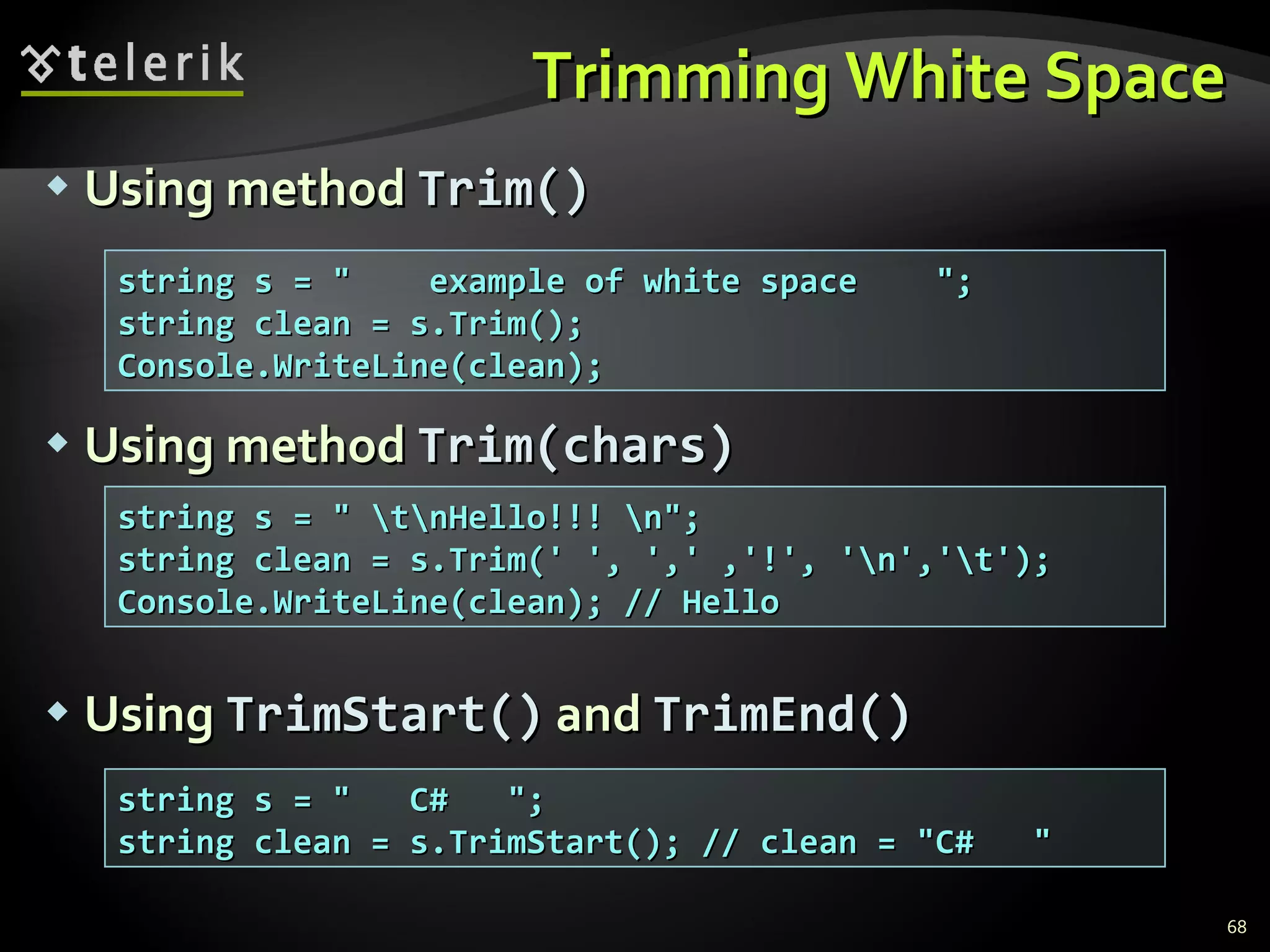
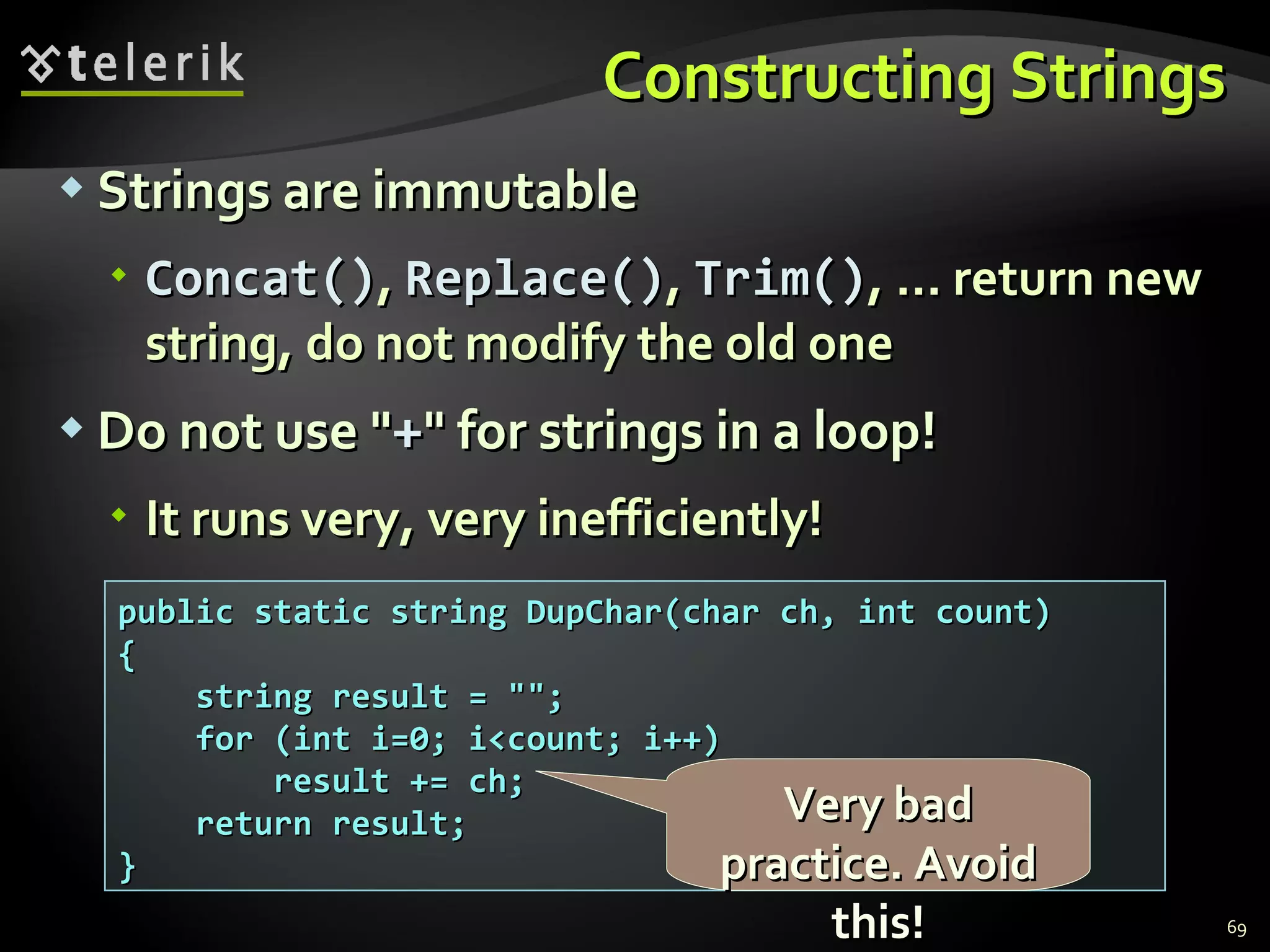
![Changing the Contents of a String – StringBuilder Use the System.Text.StringBuilder class for modifiable strings of characters: Use StringBuilder if you need to keep adding characters to a string public static string ReverseString(string s) { StringBuilder sb = new StringBuilder(); for (int i = s.Length-1; i >= 0; i--) sb.Append(s[i]); return sb.ToString(); }](https://image.slidesharecdn.com/4-csharp-language-overview-part-ii-120201085223-phpapp02/75/C-Language-Overview-Part-II-70-2048.jpg)
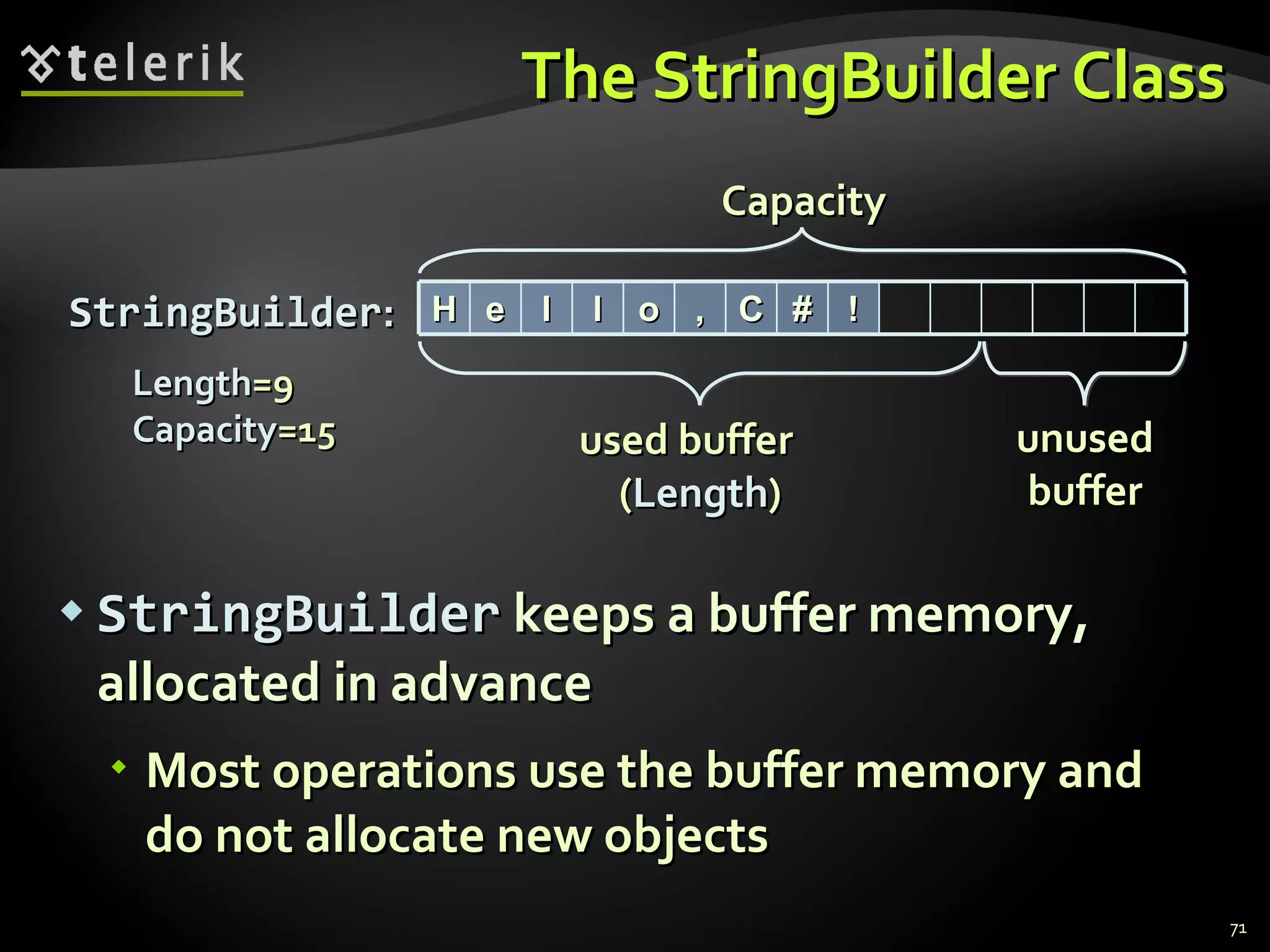
![StringBuilder – Example Extracting all capital letters from a string public static string ExtractCapitals(string s) { StringBuilder result = new StringBuilder(); for (int i = 0; i<s.Length; i++) { if (Char.IsUpper(s[i])) { result.Append(s[i]); } } return result.ToString(); }](https://image.slidesharecdn.com/4-csharp-language-overview-part-ii-120201085223-phpapp02/75/C-Language-Overview-Part-II-72-2048.jpg)
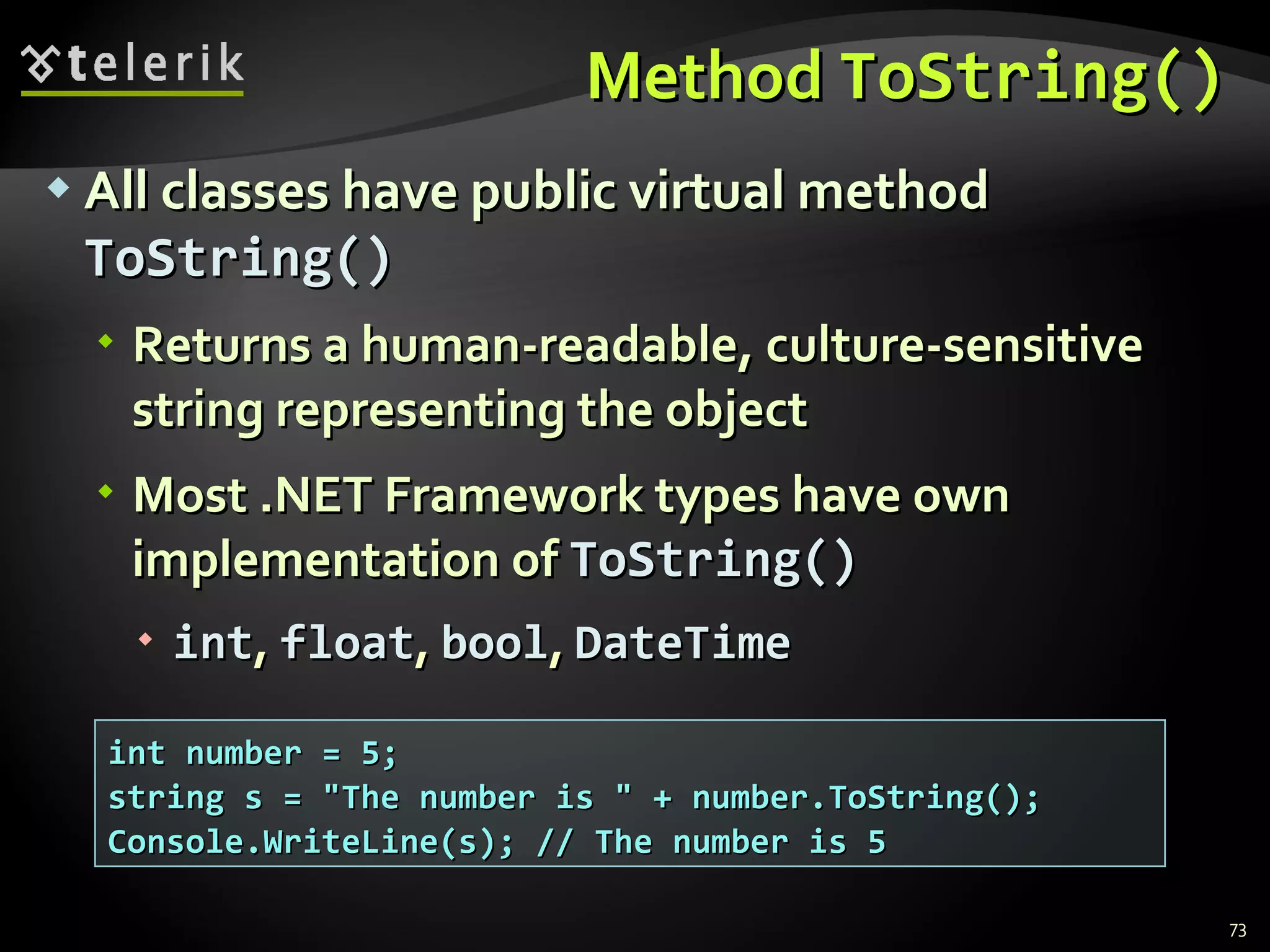
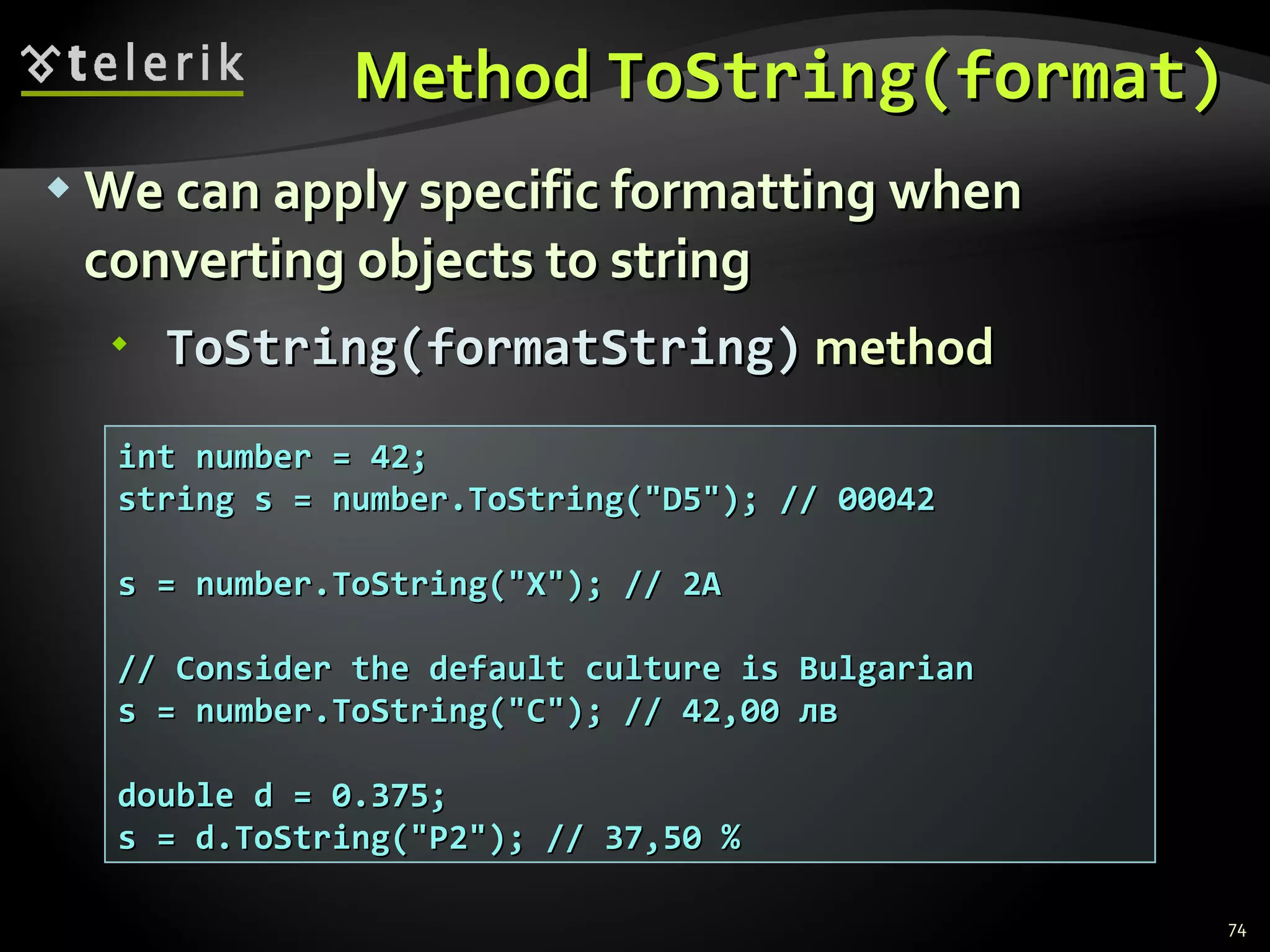
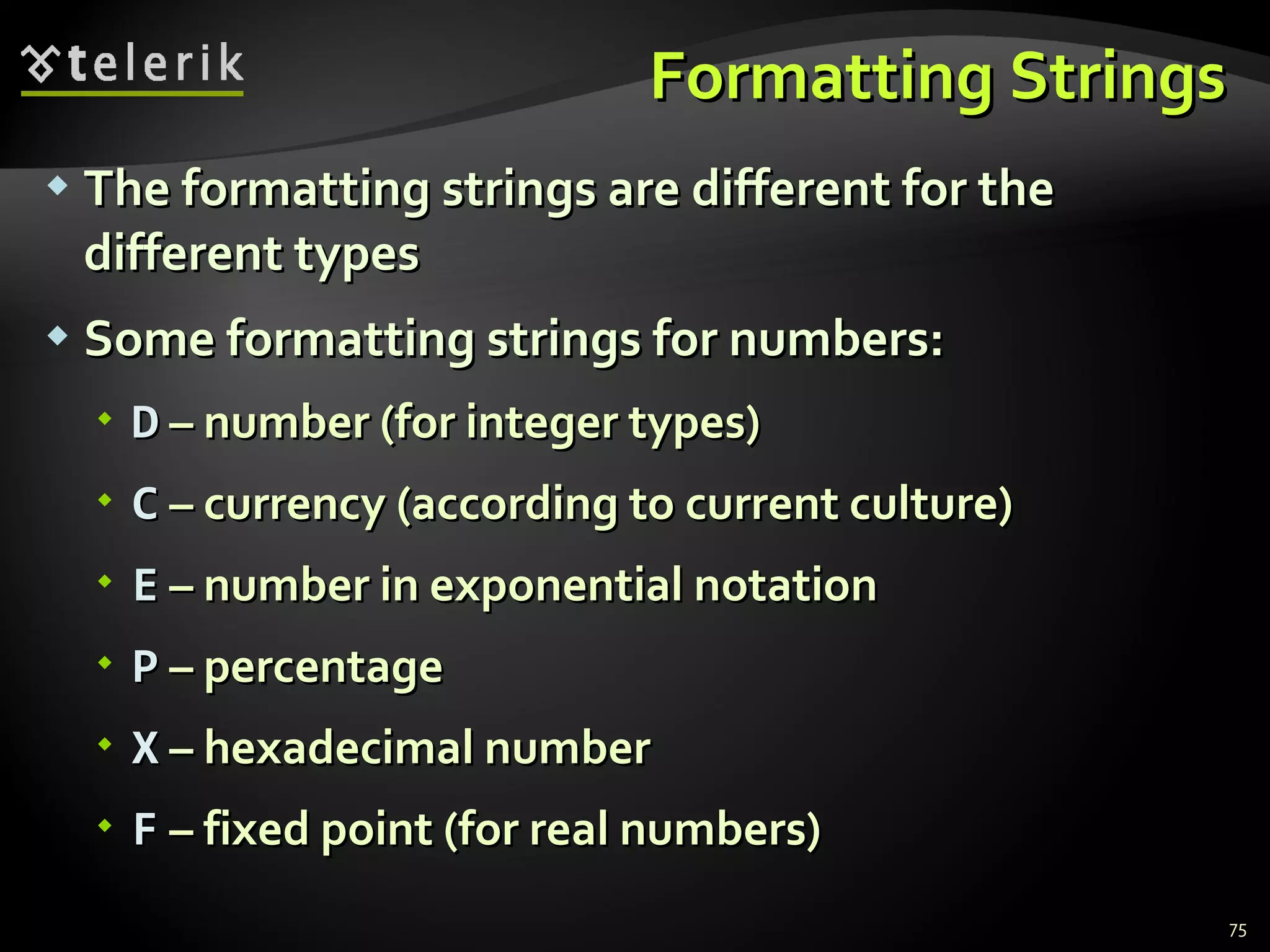
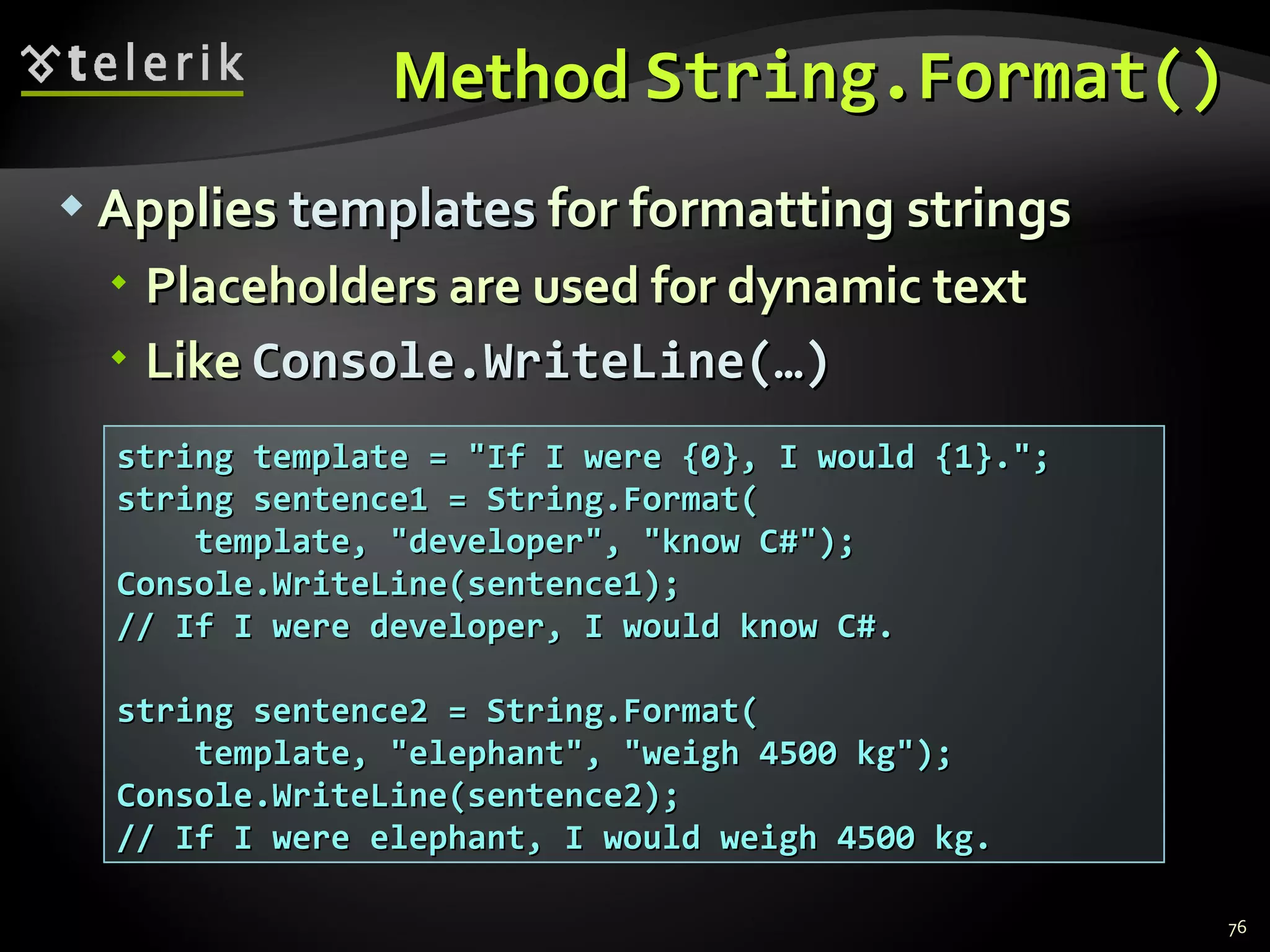
![Composite Formatting The placeholders in the composite formatting strings are specified as follows: Examples: {index[,alignment][:formatString]} double d = 0.375; s = String.Format("{0,10:F5}", d); // s = " 0,37500" int number = 42; Console.WriteLine("Dec {0:D} = Hex {1:X}", number, number); // Dec 42 = Hex 2A](https://image.slidesharecdn.com/4-csharp-language-overview-part-ii-120201085223-phpapp02/75/C-Language-Overview-Part-II-77-2048.jpg)
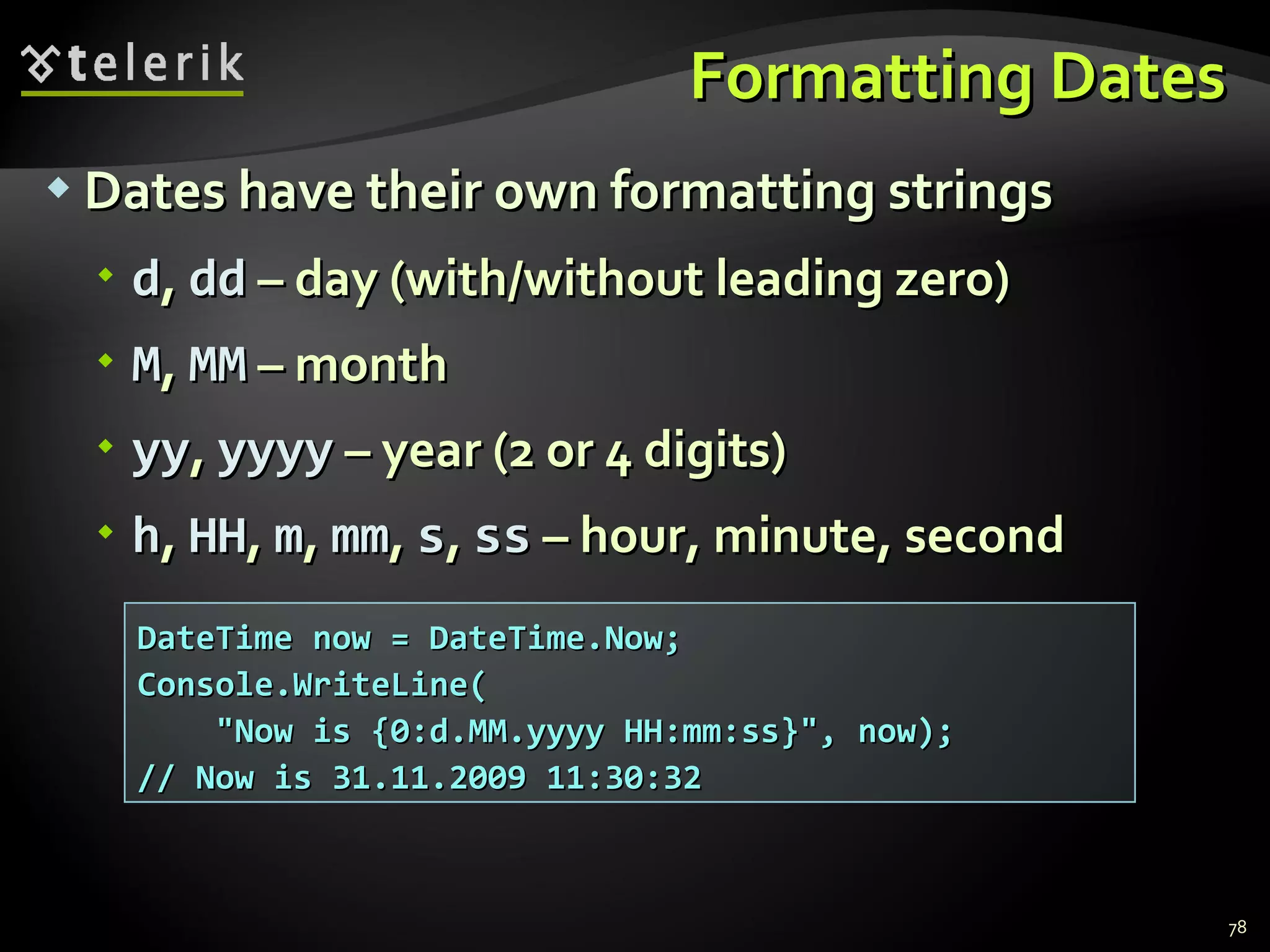
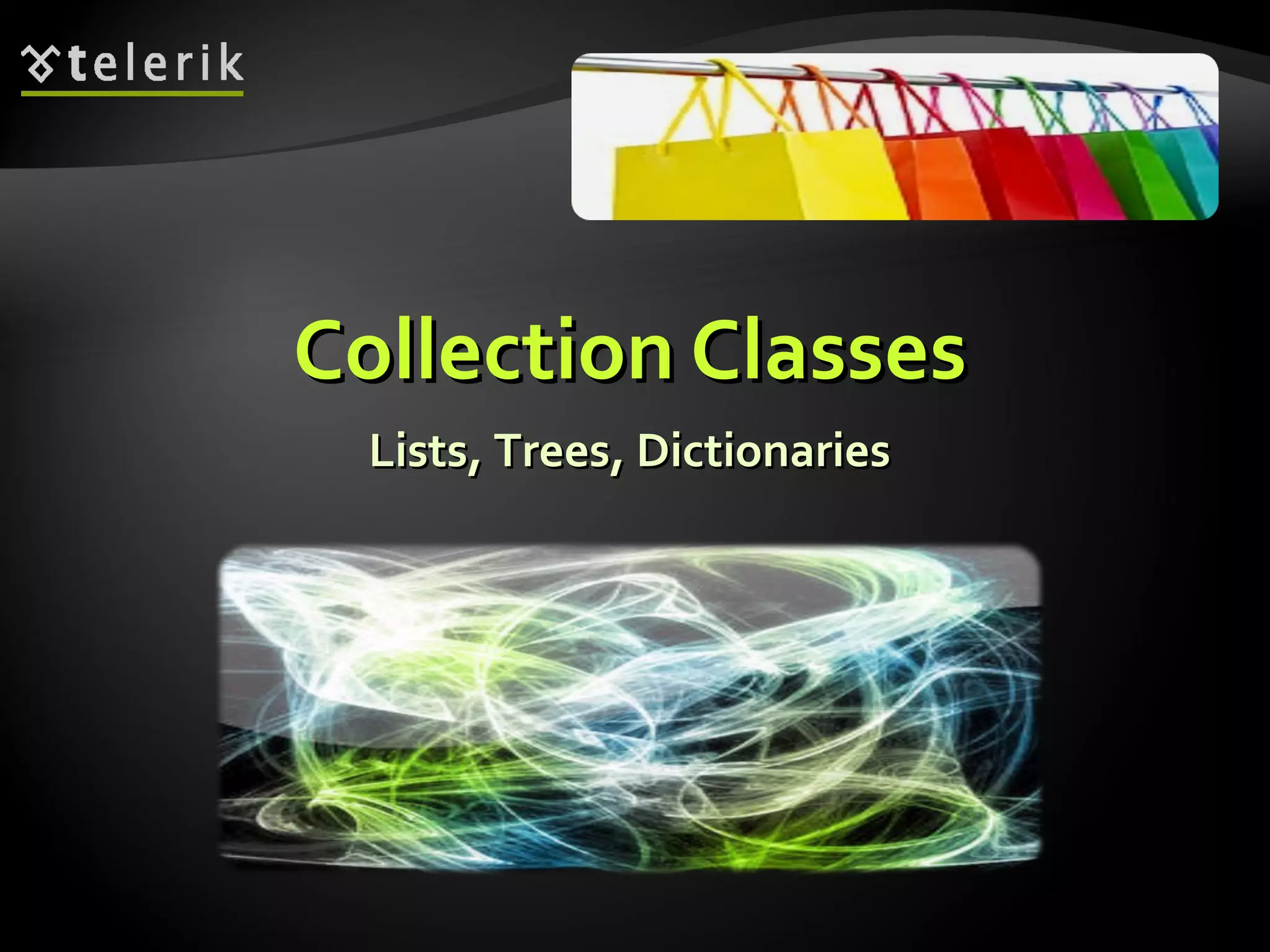
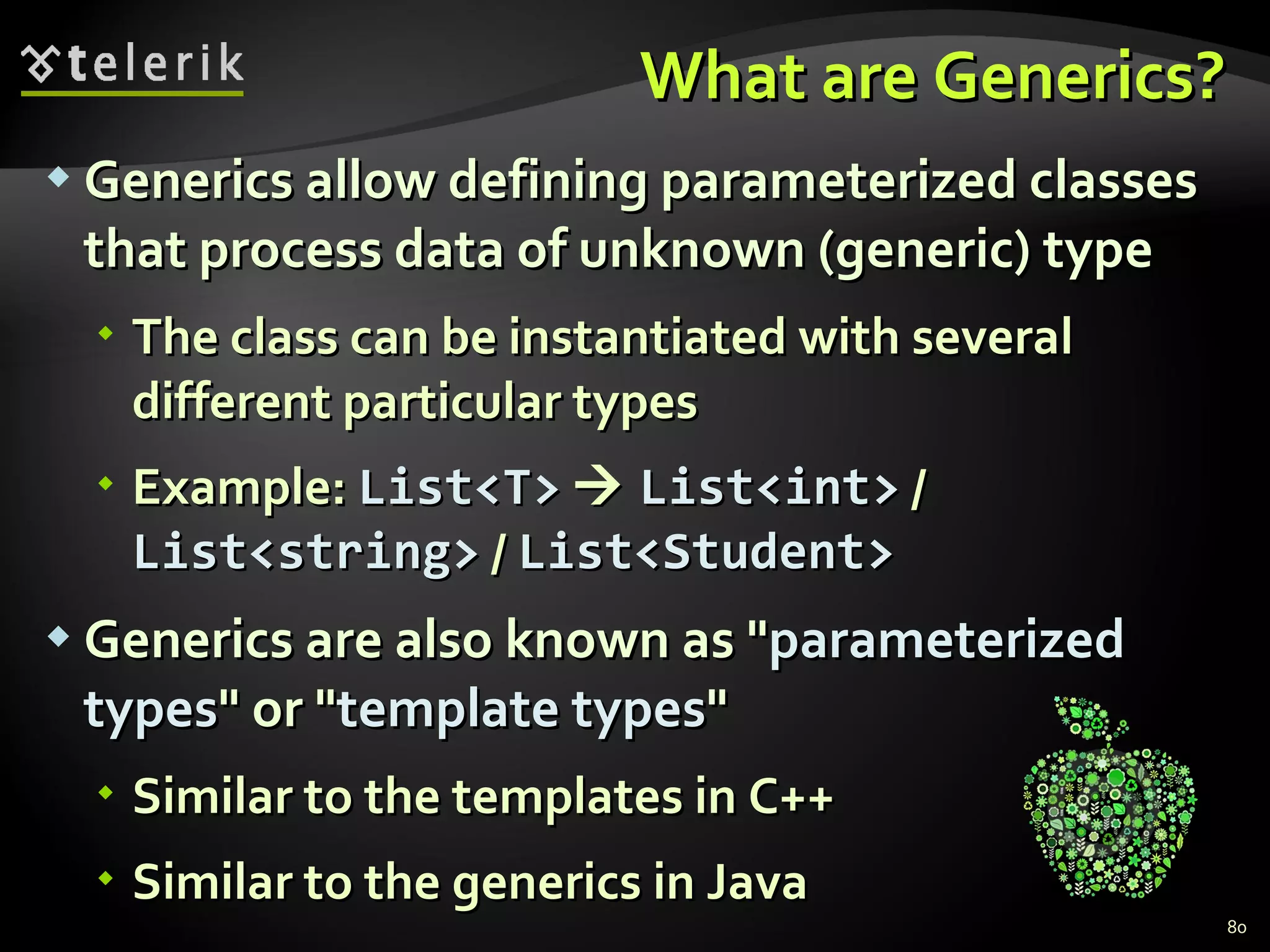
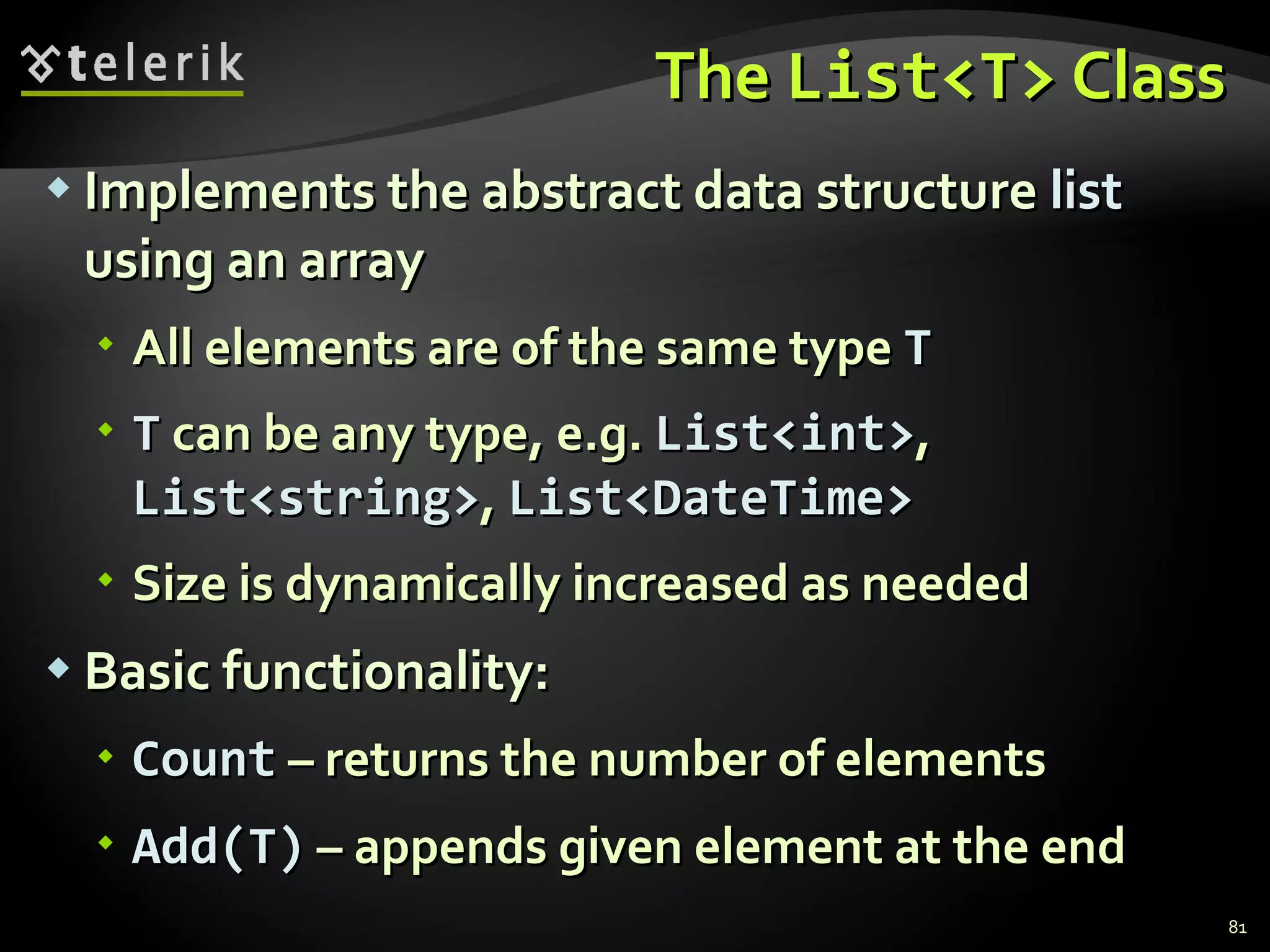
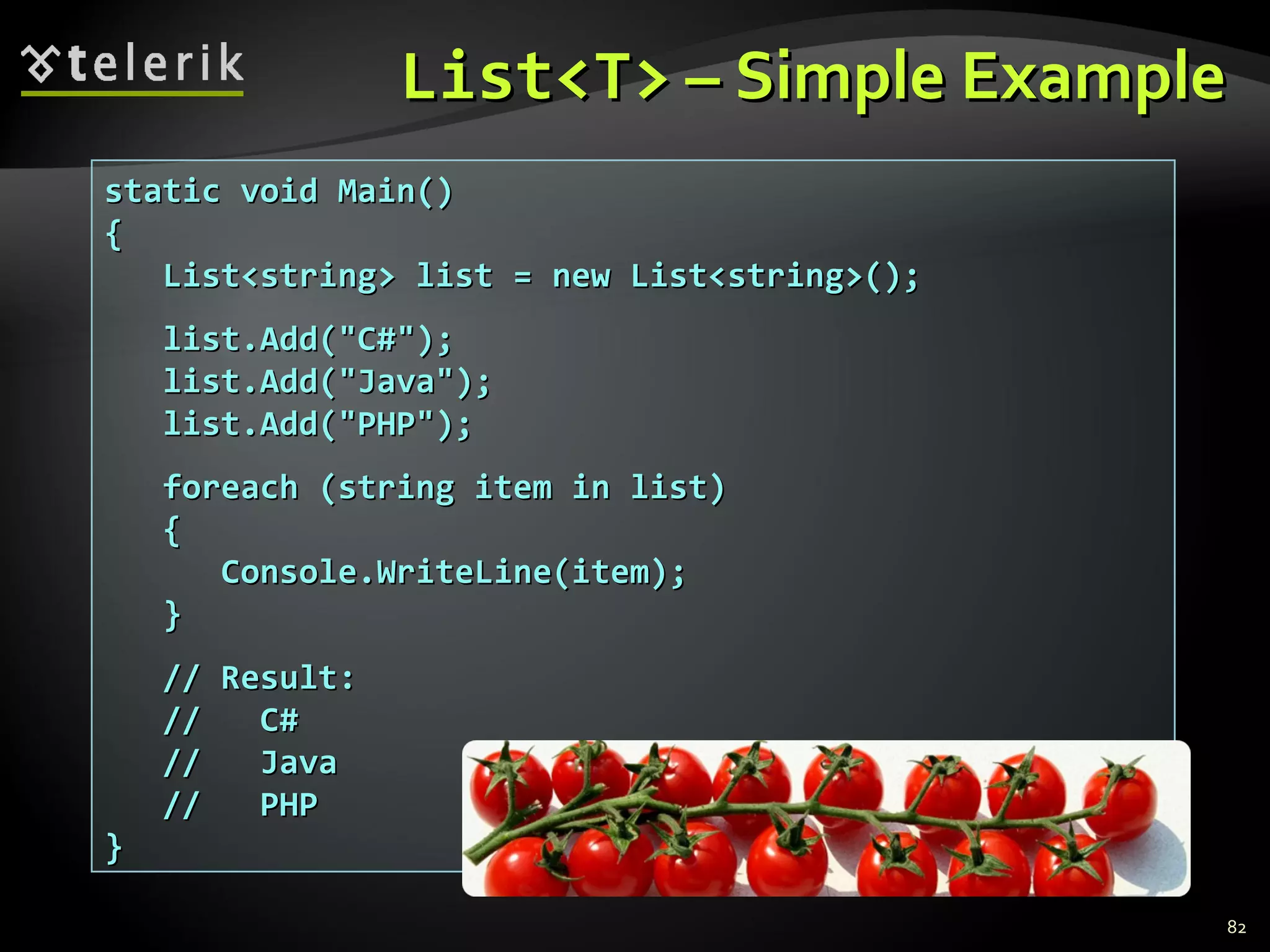
![List<T> – Functionality list[index] – access element by index Insert(index , T) – inserts given element to the list at a specified position Remove(T) – removes the first occurrence of given element RemoveAt(index) – removes the element at the specified position Clear() – removes all elements Contains(T ) – determines whether an element is part of the list](https://image.slidesharecdn.com/4-csharp-language-overview-part-ii-120201085223-phpapp02/75/C-Language-Overview-Part-II-83-2048.jpg)
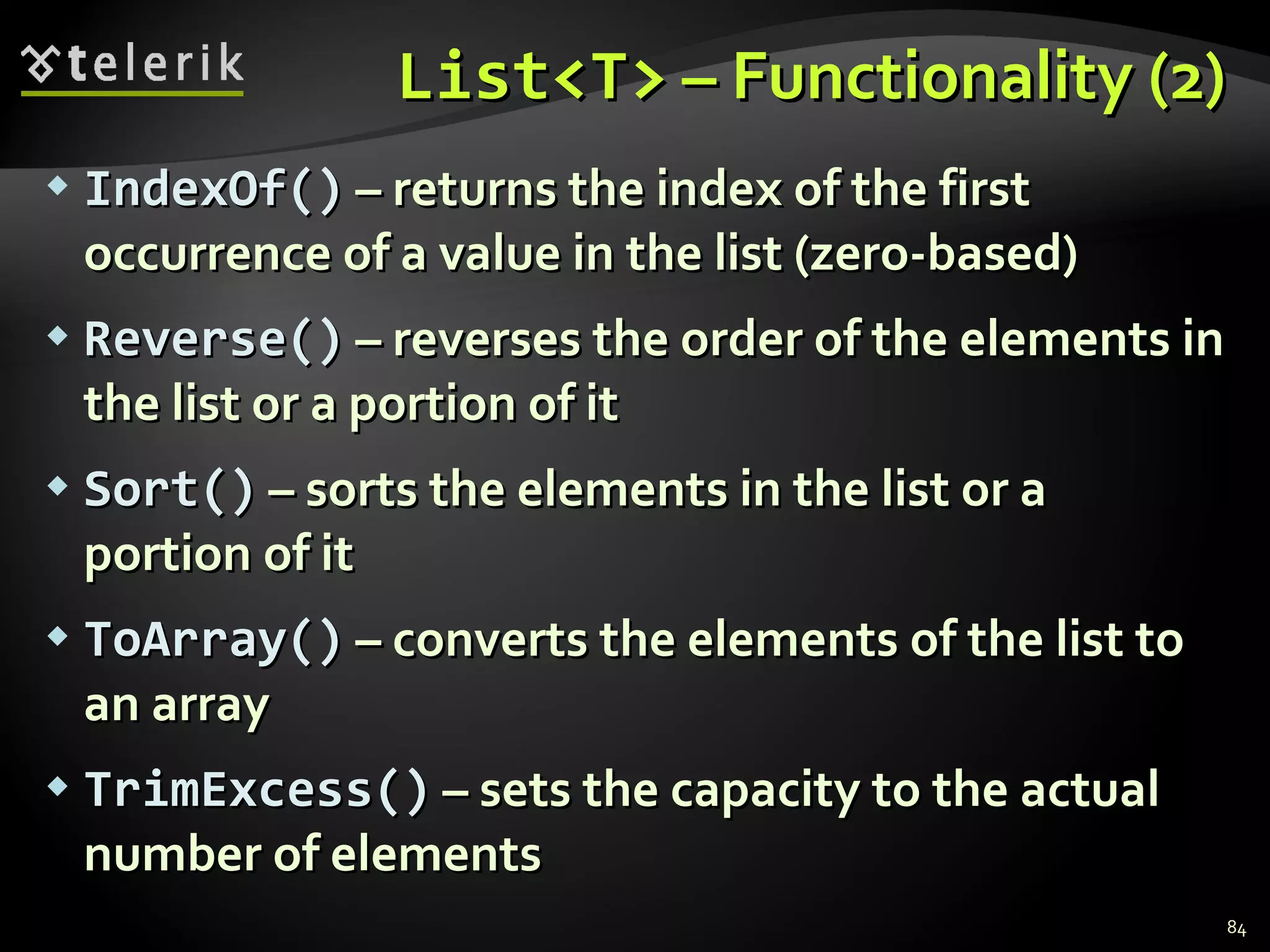
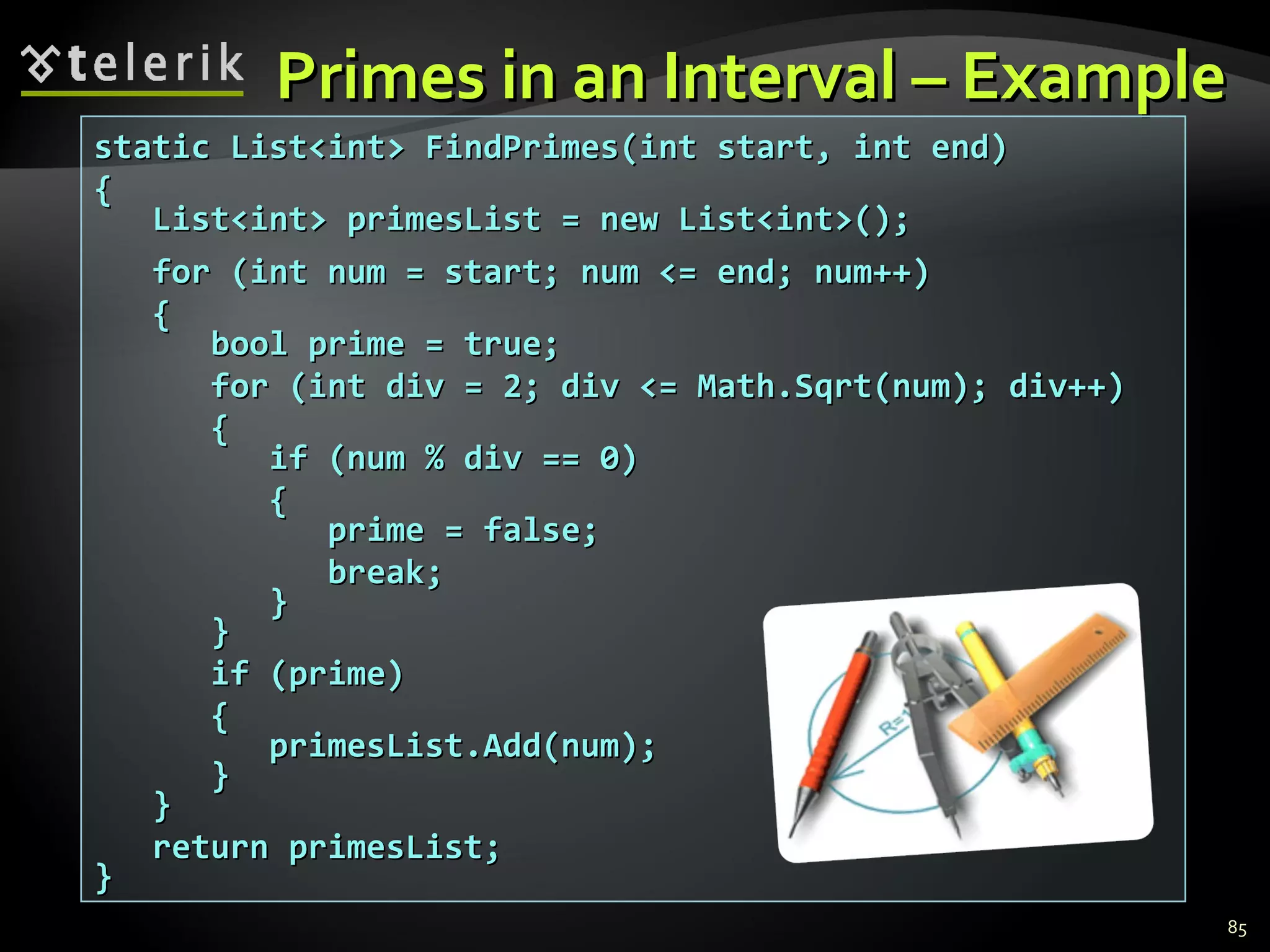
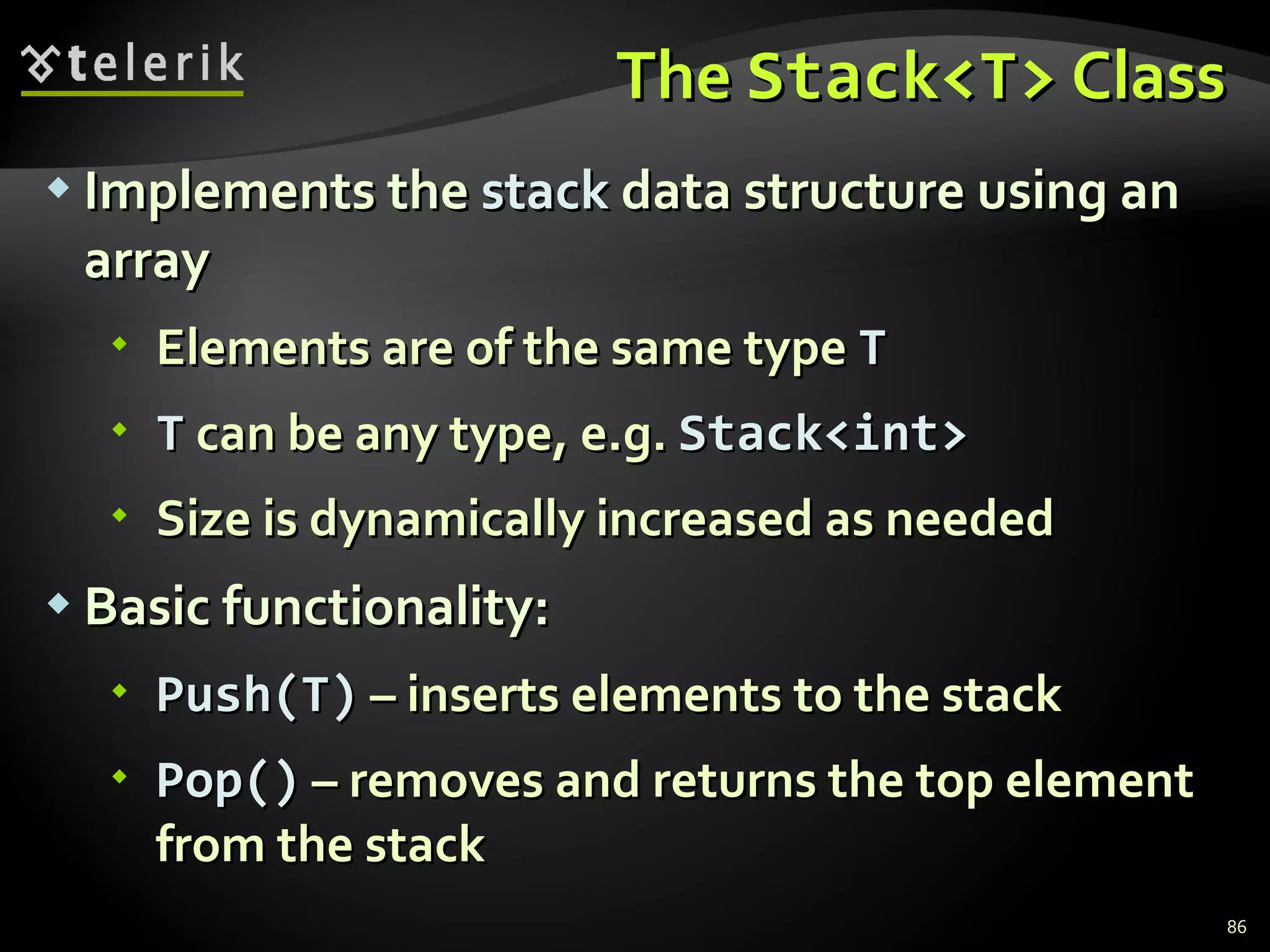
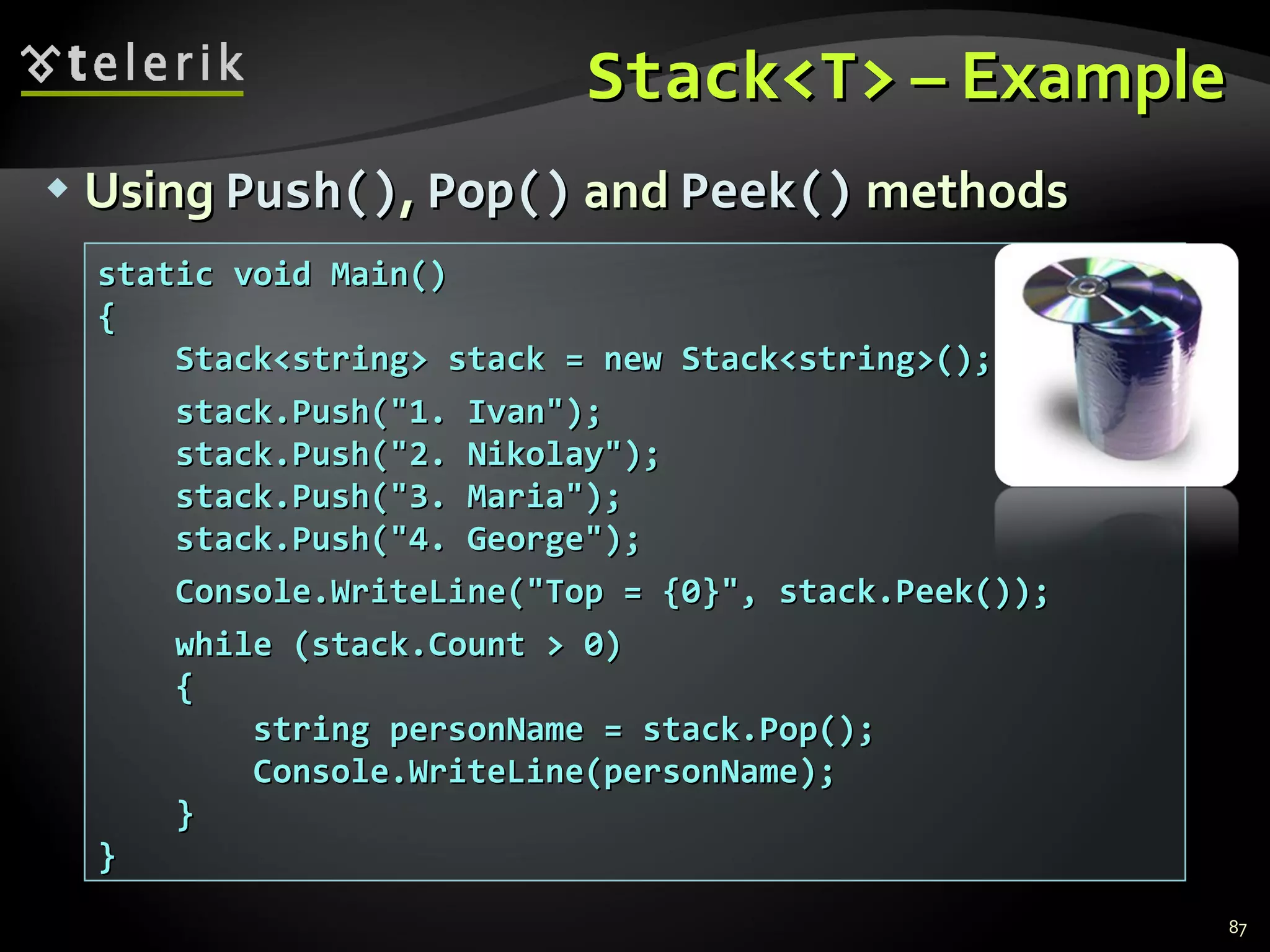
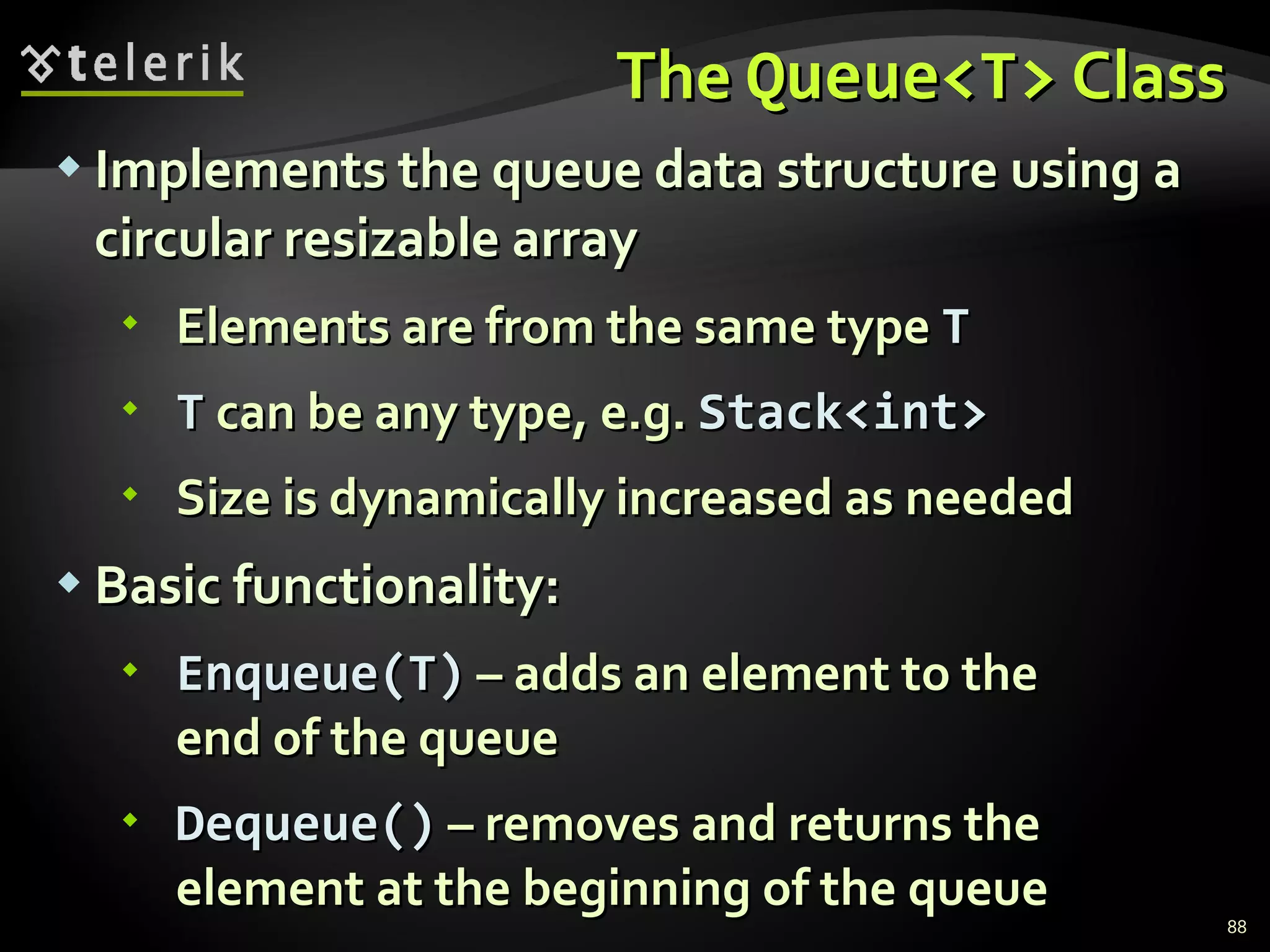
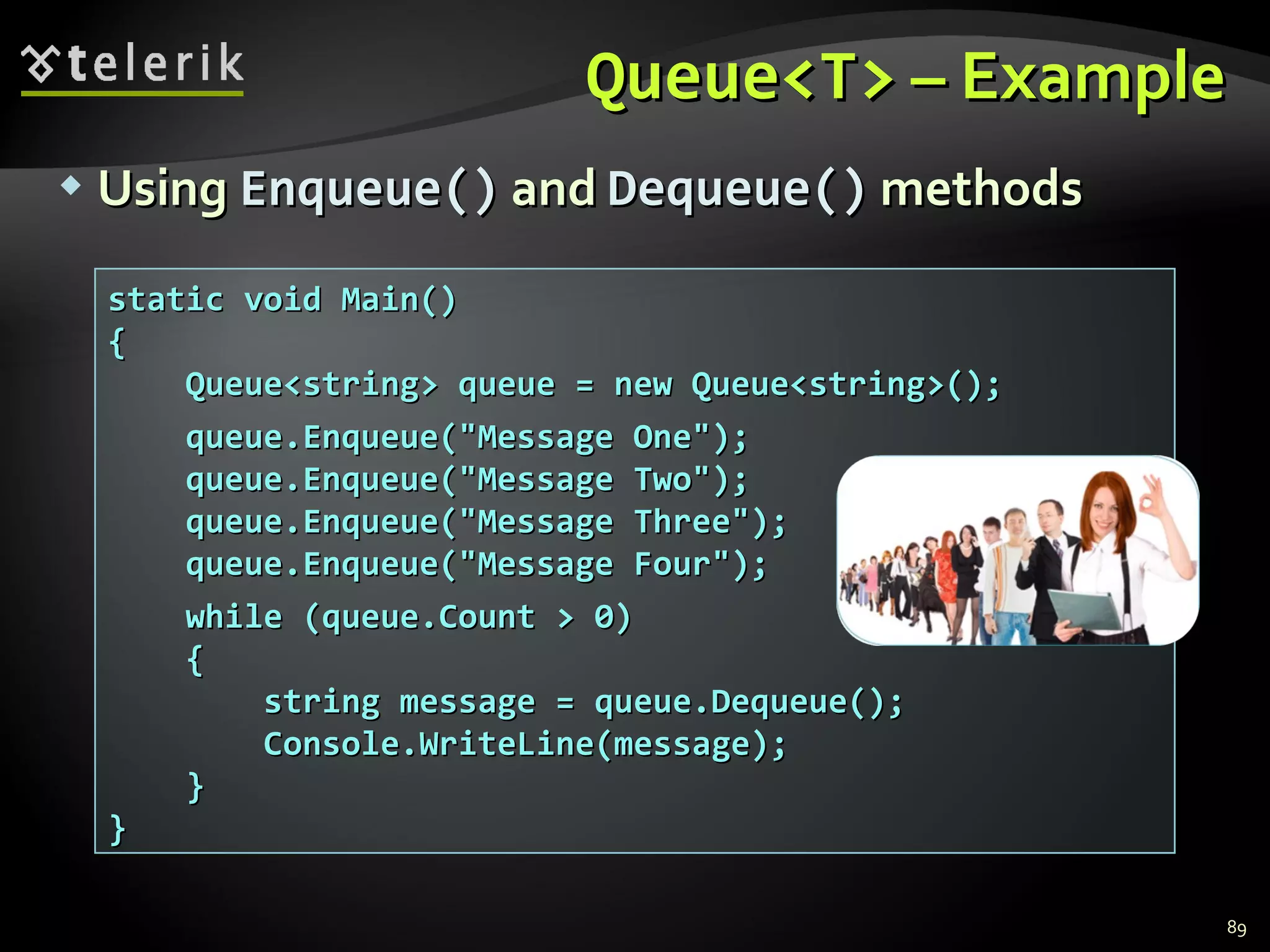
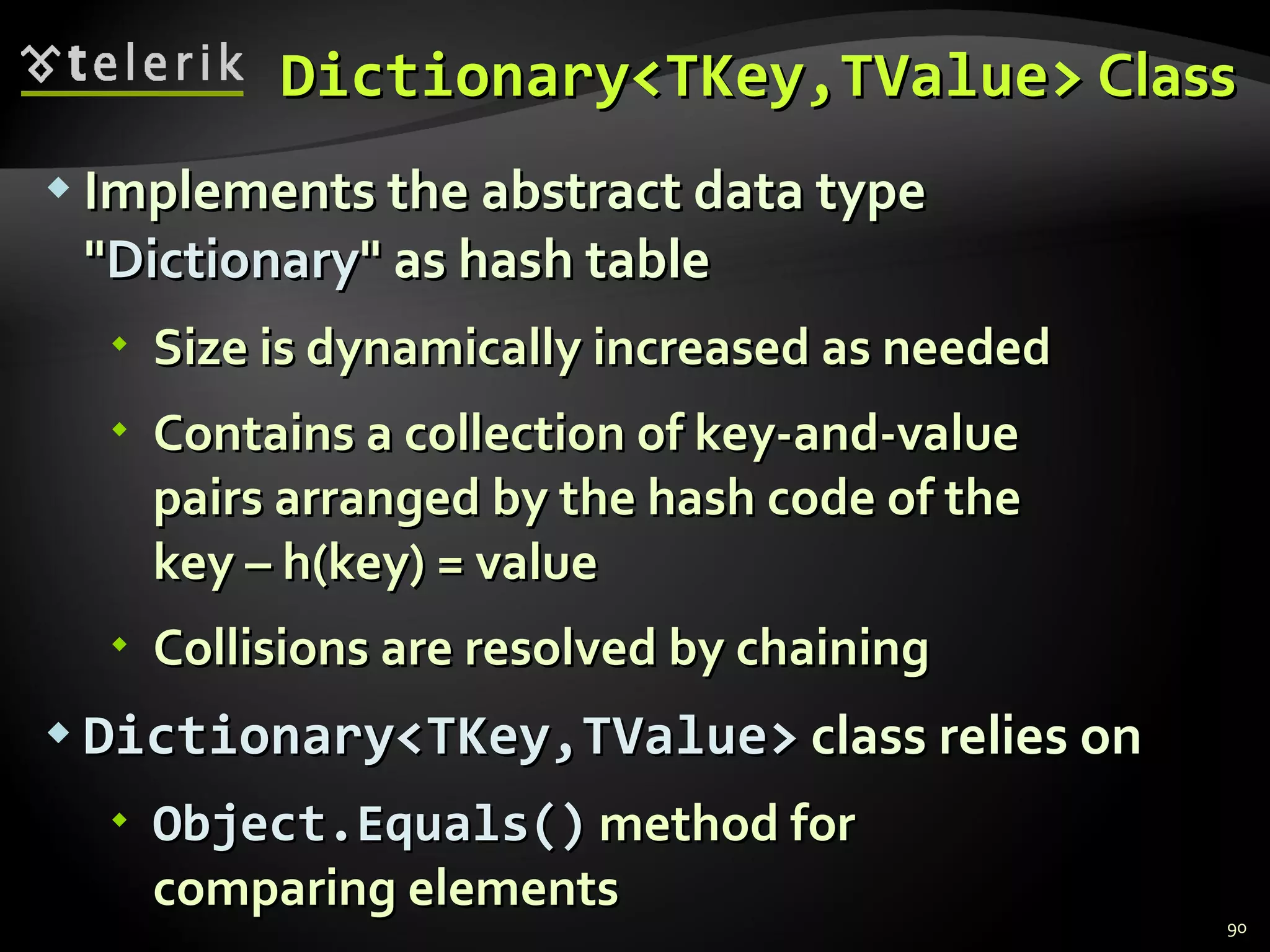
![Dictionary<TKey,TValue> Class (2) Object.GetHashCode() method for calculating the hash codes of the elements Major operations: Add(TKey,TValue) – adds an element with the specified key and value into the dictionary Remove(TKey) – removes the element with the specified key Clear() – removes all elements this[] – returns element by key](https://image.slidesharecdn.com/4-csharp-language-overview-part-ii-120201085223-phpapp02/75/C-Language-Overview-Part-II-91-2048.jpg)
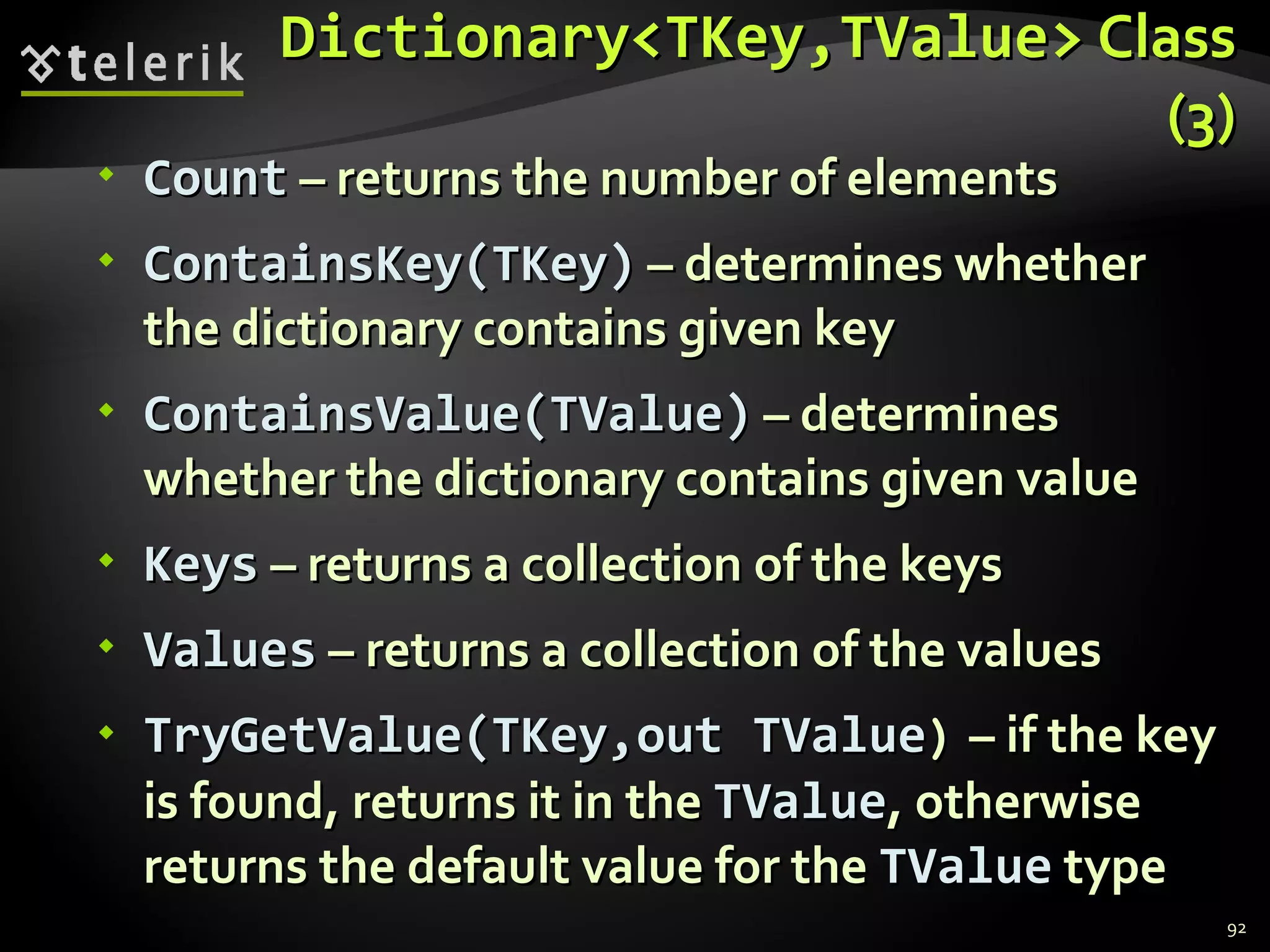
![Dictionary<TKey,Tvalue> – Example Dictionary<string, int> studentsMarks = new Dictionary<string, int>(); studentsMarks.Add("Ivan", 4); studentsMarks.Add("Peter", 6); studentsMarks.Add("Maria", 6); studentsMarks.Add("George", 5); int peterMark = studentsMarks["Peter"]; Console.WriteLine("Peter's mark: {0}", peterMark); Console.WriteLine("Is Peter in the hash table: {0}", studentsMarks.ContainsKey("Peter")); Console.WriteLine("Students and grades:"); foreach (var pair in studentsMarks) { Console.WriteLine("{0} --> {1} ", pair.Key, pair.Value); }](https://image.slidesharecdn.com/4-csharp-language-overview-part-ii-120201085223-phpapp02/75/C-Language-Overview-Part-II-93-2048.jpg)
![Counting Words in Given Text string text = "Welcome to our C# course. In this " + "course you will learn how to write simple " + "programs in C# and Microsoft .NET"; string[] words = text.Split(new char[] {' ', ',', '.'}, StringSplitOptions.RemoveEmptyEntries); var wordsCount = new Dictionary<string, int>(); foreach (string word in words) { if (wordsCount.ContainsKey(word)) wordsCount[word]++; else wordsCount.Add(word, 1); } foreach (var pair in wordsCount) { Console.WriteLine("{0} --> {1}", pair.Key, pair.Value); }](https://image.slidesharecdn.com/4-csharp-language-overview-part-ii-120201085223-phpapp02/75/C-Language-Overview-Part-II-94-2048.jpg)
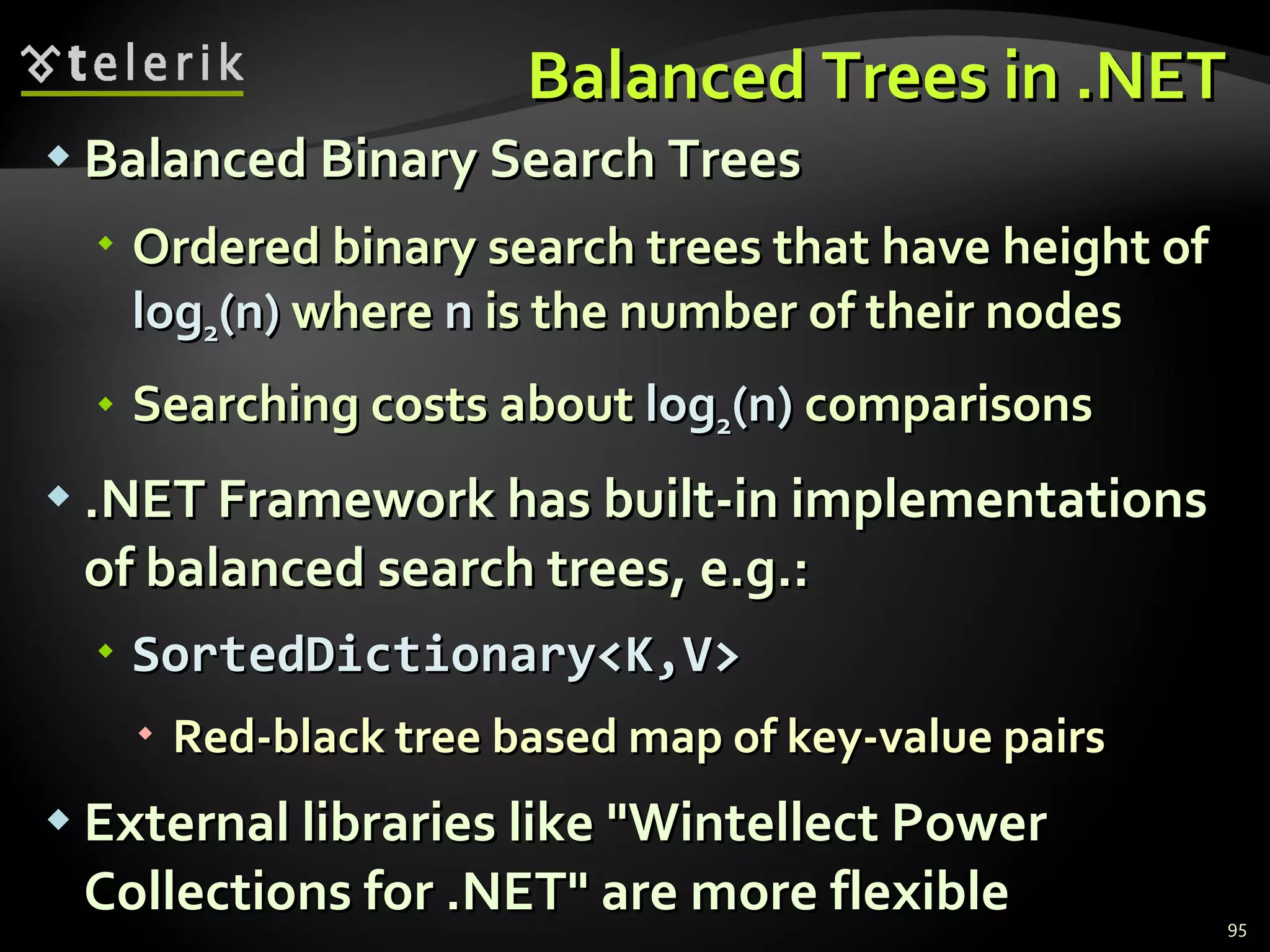
![Sorted Dictionary – Example string text = "Welcome to our C# course. In this " + "course you will learn how to write simple " + "programs in C# and Microsoft .NET"; string[] words = text.Split(new char[] {' ', ',', '.'}, StringSplitOptions.RemoveEmptyEntries); var wordsCount = new SortedDictionary<string, int>(); foreach (string word in words) { if (wordsCount.ContainsKey(word)) wordsCount[word]++; else wordsCount.Add(word, 1); } foreach (var pair in wordsCount) { Console.WriteLine("{0} --> {1}", pair.Key, pair.Value); }](https://image.slidesharecdn.com/4-csharp-language-overview-part-ii-120201085223-phpapp02/75/C-Language-Overview-Part-II-96-2048.jpg)

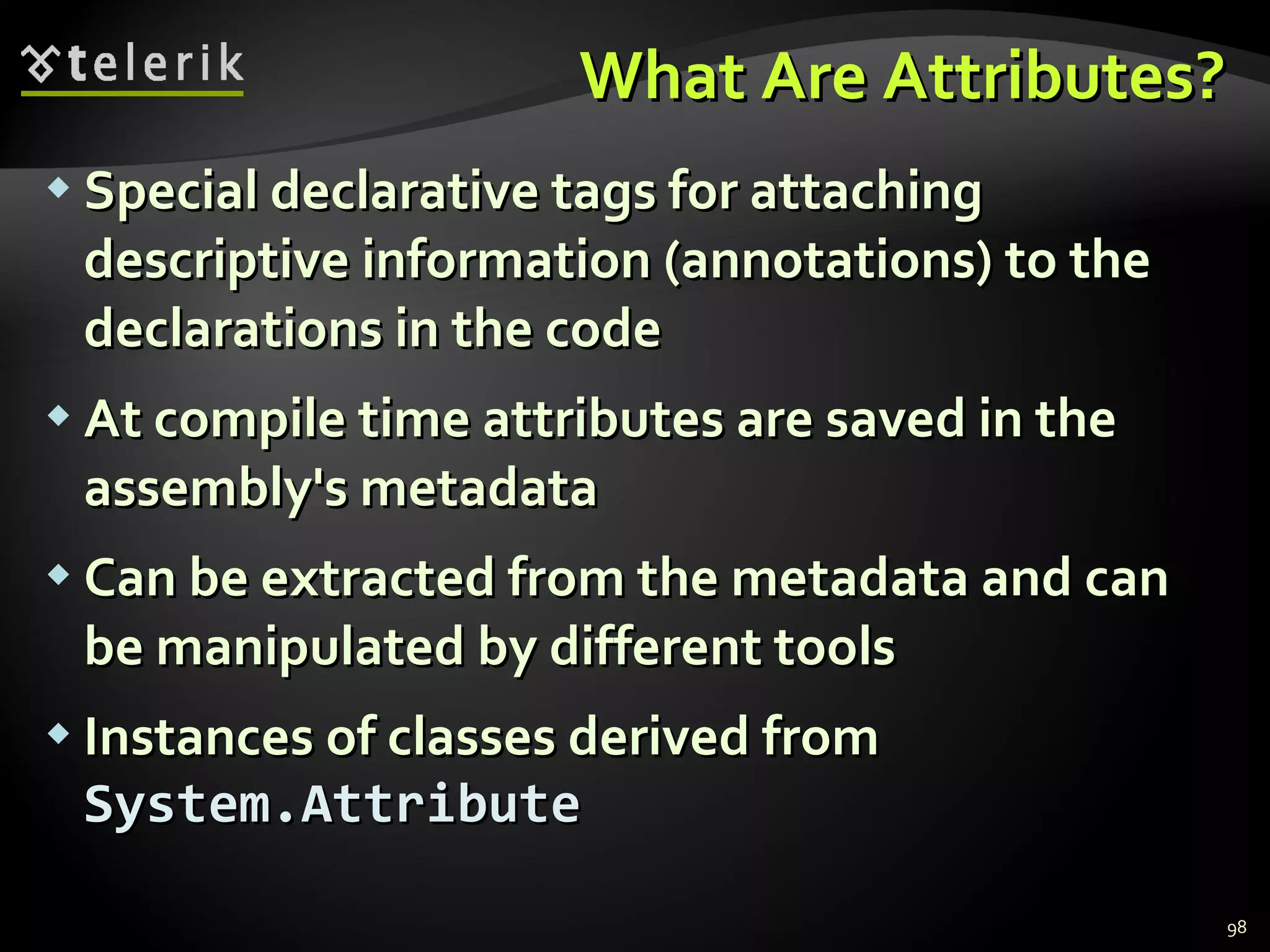
![Attributes Applying – Example Attribute's name is surrounded by square brackets and is placed before the declaration which it refers to: [Flags] attribute indicates that the enum type can be treated like a set of bit flags [Flags] // System.FlagsAttribute public enum FileAccess { Read = 1, Write = 2, ReadWrite = Read | Write }](https://image.slidesharecdn.com/4-csharp-language-overview-part-ii-120201085223-phpapp02/75/C-Language-Overview-Part-II-99-2048.jpg)
![Attributes With Parameters Attributes use parameters for initialization: In the example the [ DllImport ] attribute is instantiated by the compiler as follows : An object of System.Runtime. InteropServices.DllImportAttribute class is created and initialized [DllImport("user32.dll", EntryPoint="MessageBox")] public static extern int ShowMessageBox(int hWnd, string text, string caption, int type); ... ShowMessageBox(0, "Some text", "Some caption", 0);](https://image.slidesharecdn.com/4-csharp-language-overview-part-ii-120201085223-phpapp02/75/C-Language-Overview-Part-II-100-2048.jpg)
